|
Made With |
|
|
|
|
Dr. Hoffer's Travel WebSite This site was last updated 07/23/19 |
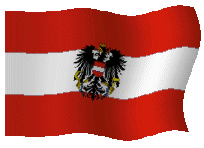
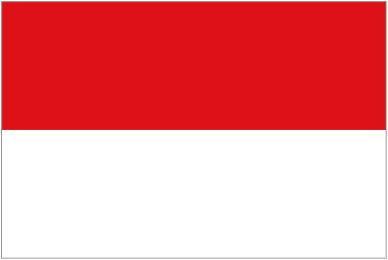
![]() GREECE17 #5 VIENNA #2 KUNSTMUSEUM I
GREECE17 #5 VIENNA #2 KUNSTMUSEUM I
![]()
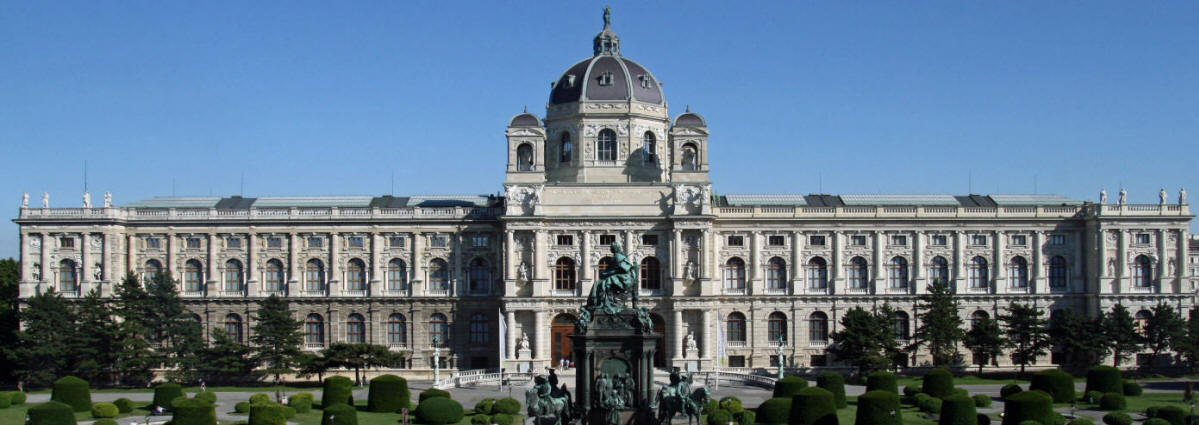
Click here for an Excellent Tour Guide of Vienna
Saturday, July 15, 2017
I woke at 4:25, 7:25 and 8:00 AM and again with great difficulty, got myself up at 8:25 AM and into my running gear. Today I am going to conquer the Kunsthistorisches Museum (stock photo above). By 9:30 AM, I went downstairs to their breakfast area next to the hotel lobby (GoPro shots, below).
I was able to get two free cappuccinos (below left) at the hotel in place of my free breakfast while doing an article review for the AJO journal. I also sent out the exact directions to get to the port in Athens to the IOL Power Club folks so they know how to get to the ship. At 10:40 AM, I started my run in the streets (below right).
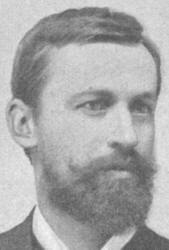 I ran through some areas I knew and then headed in directions I have not been in
before just to see something new. I reached the interesting
Urania
Building (below; Canon shot left, stock photos right and below). It is a
public educational institute and observatory built by Art Nouveau architect
Max Fabiani (1865-1962)
(right) at the outlet of the Wien River.
He helped introduce the Vienna
Secession style of architecture. The building was
opened in 1910 by Franz Joseph I and was named after the Muse of Astronomy,
Urania. My Canon shot is left and a stock photo of the inscription is on
the right.
I ran through some areas I knew and then headed in directions I have not been in
before just to see something new. I reached the interesting
Urania
Building (below; Canon shot left, stock photos right and below). It is a
public educational institute and observatory built by Art Nouveau architect
Max Fabiani (1865-1962)
(right) at the outlet of the Wien River.
He helped introduce the Vienna
Secession style of architecture. The building was
opened in 1910 by Franz Joseph I and was named after the Muse of Astronomy,
Urania. My Canon shot is left and a stock photo of the inscription is on
the right.
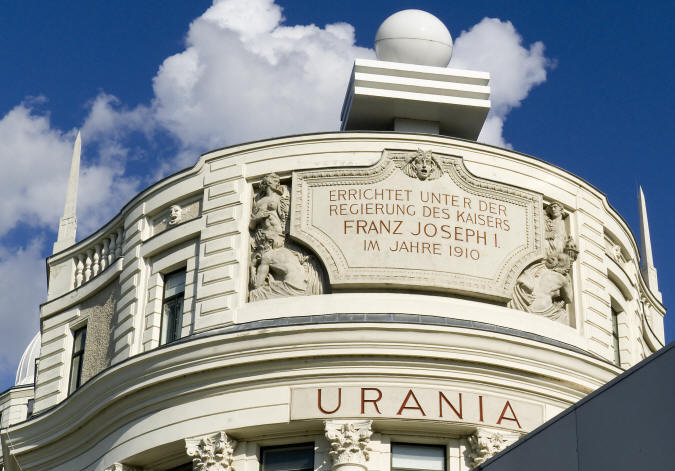
During World War II, the Urania was severely damaged and the dome with the observatory was totally destroyed. After its reconstruction, it was reopened in 1957. The observatory itself has been continually improved technically over the years. Presently, the Urania also has seminar rooms in which wide-ranging classes and lectures are given. Inside is a movie theater that screens films at the annual Viennale Movie Festival and a puppet theater created originally by actor Hans Kraus. It also hosts a restaurant.
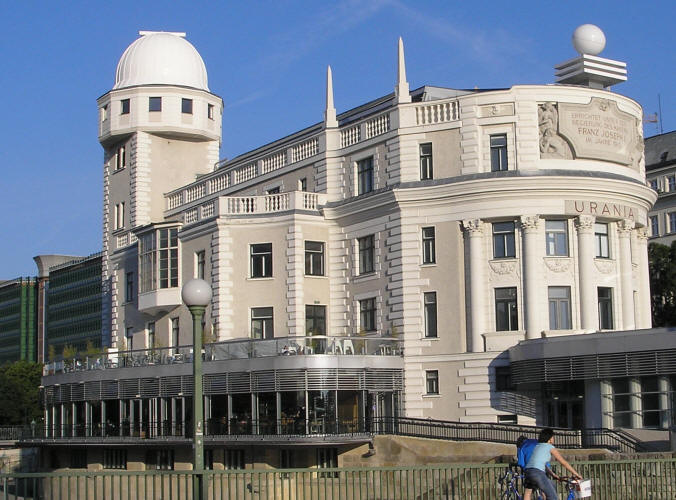
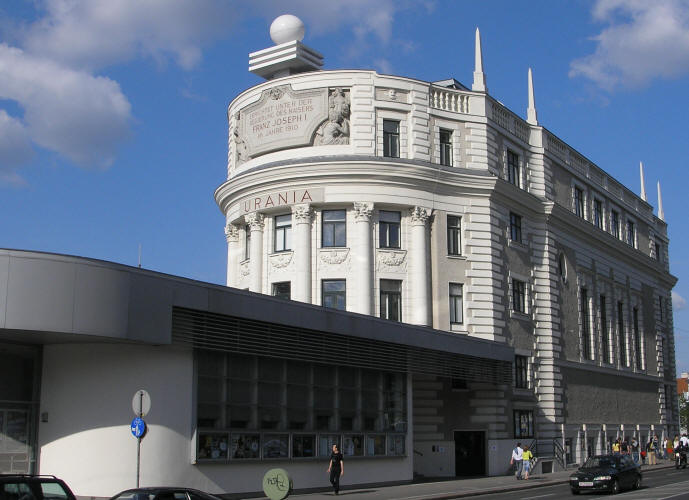
Below you can see the Wien River which is 21 miles (34 km) long, and half of it is within the city. Its mouth is at the eastern end of the city, right here, next to the Urania, where it flows into the Donaukanal (Danube canal), a branch of the Danube River (stock photo). The river bed consists almost entirely of concrete, which was installed between 1895-99 in order to stop the devastating floods and cholera it caused.
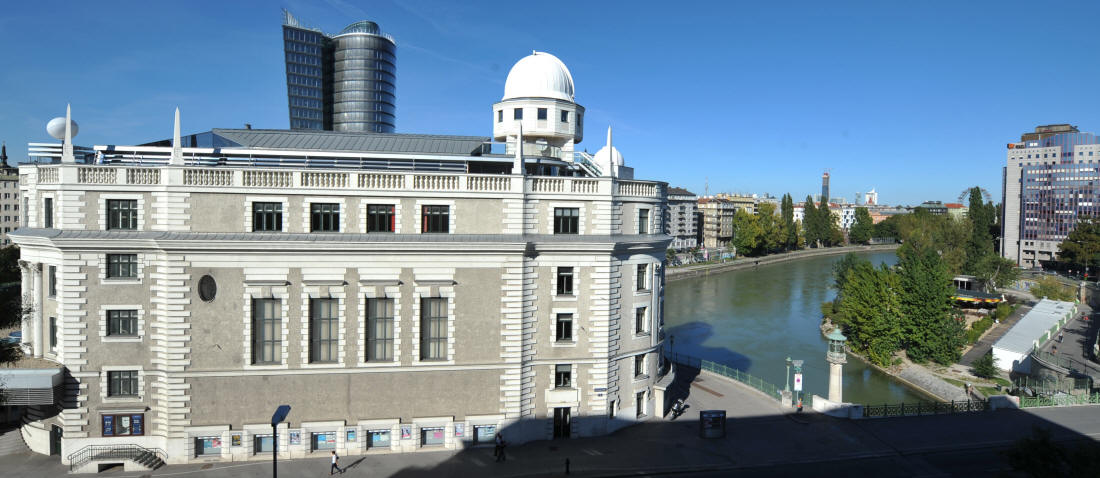
Continuing on, I went by the "Osterreicheches Museum f�r angewandte Kunst" (Austrian Museum of Applied Arts) (below left) [Stubenring 5, +43-171-1360] and the "Kamer Gewerbuchen Wirtschaft Wien" [Chamber of Business Commerce Vienna] (below right).
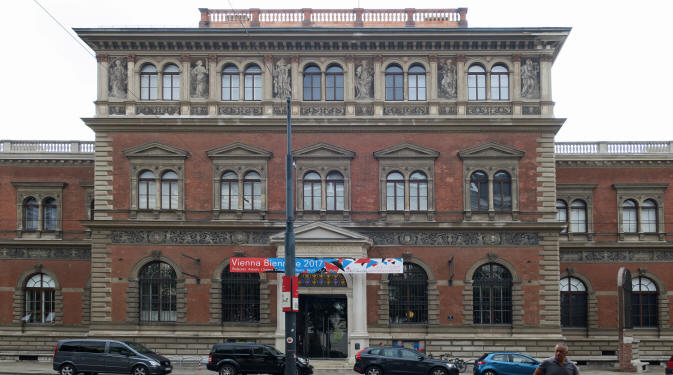
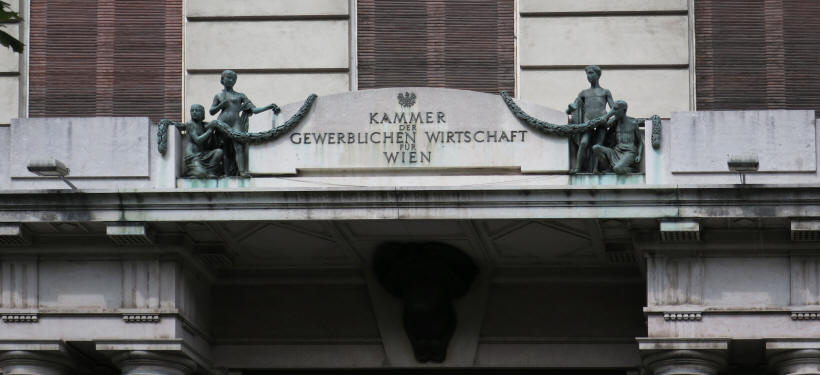
I wound my way back, passing things I have been by before, but this time used the GoPro camera.
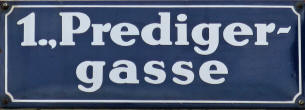


As I got to the corner of Predigergasse and Postgasse, I arrived at the Dominikanerkirche (Dominican Church of St. Maria Rotunda) [Postgasse 4, +43-1-512-4332] erected in 1631.
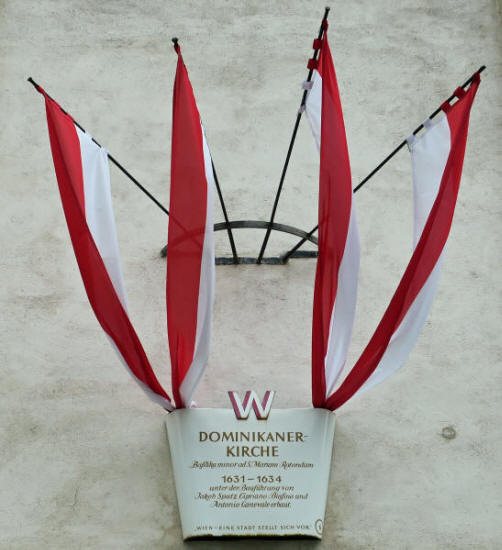
The first church on this site was built in 1237 by the newly arrived Dominicans on a parcel of land allotted in 1225-6 by Duke Leopold VI. The church was enlarged between 1240�70 and a new choir was added in 1273. A series of fires caused the construction of a new Gothic church between 1283-1302. Then it was heavily damaged during the first siege of Vienna by the Turks in 1529. Amazing it has survived.
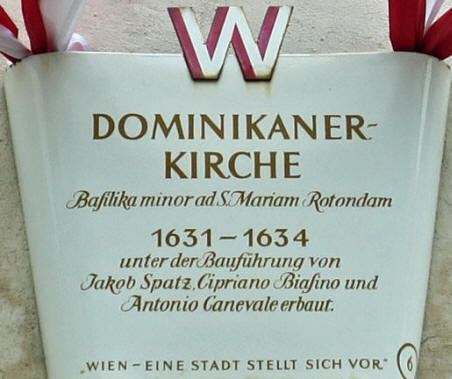
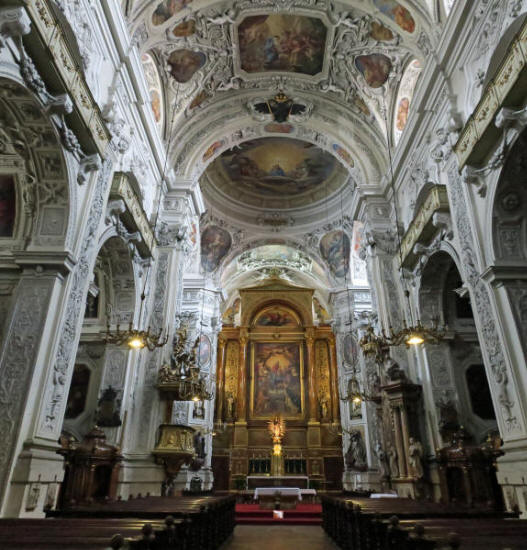
The choir was demolished and the nave was partly taken down. In 1631, the Dominicans started to build a new oblong church with a dome and it was consecrated in 1634. The church was open, so I got this Canon shot that I PhotoStitched (above right) and a GoPro shot of the interior (below left); right is a stock photo.
Below left is a stock photo of its beautifully frescoed ceiling, the work of Matthias Rauchmiller (1675) and it depicts 46 scenes in the life of Our Lady. Below right is a stock photo of their organ. The new dome was built in 1820.
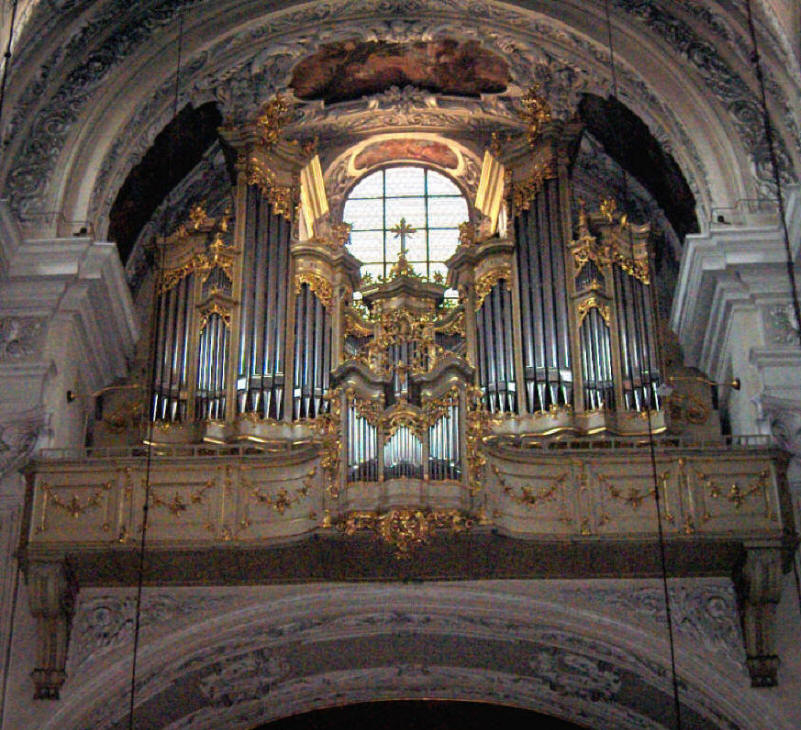

As I continued down Fleischmarkt, I came across St. Barbara's [Postgasse 8, +43-1-512-2133] or the Ordinariate for Byzantine-rite Catholics in Austria (Griechisch-Katholische Kirche St. Barbara). My Canon shot is left and stock photos (center, right).
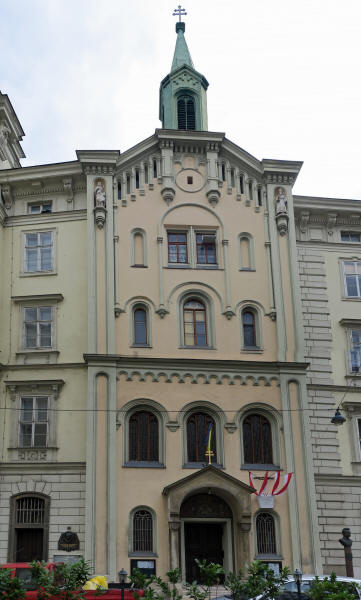
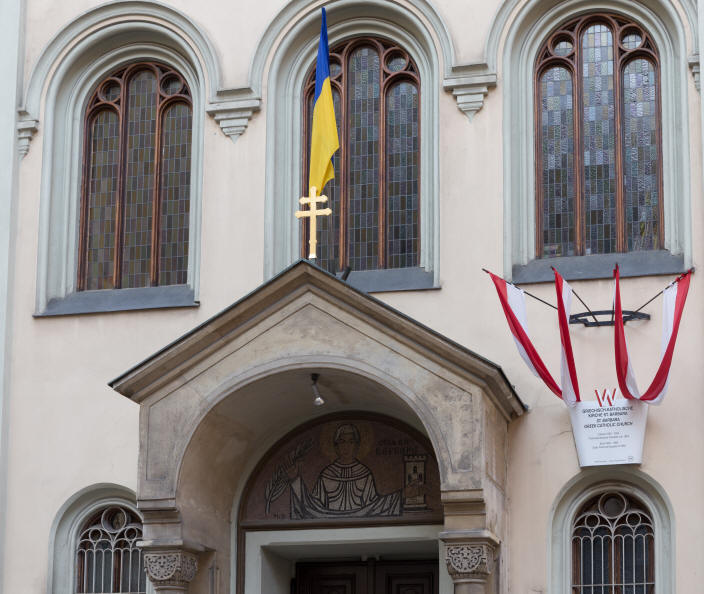
The stock photos below show the "double cross" used by the Orthodox churches but there is a Ukrainian flag over the front door. Below right is a blow-up of the mural of St. Barbara.
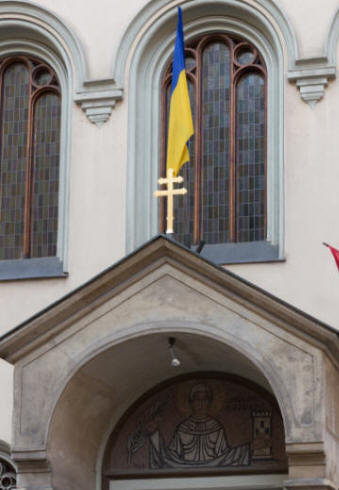
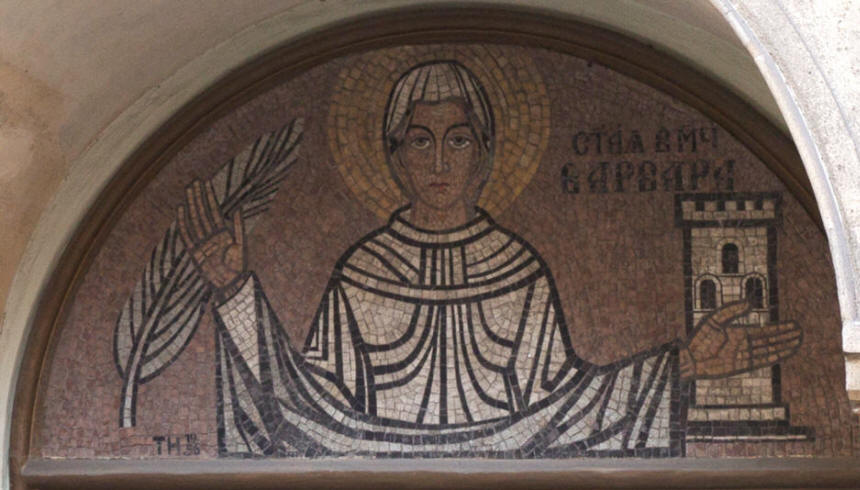
Below left is a stock photo of the Vienna tourist sign and center is a stock photo of the church interior while on the right is my shot of the sign.
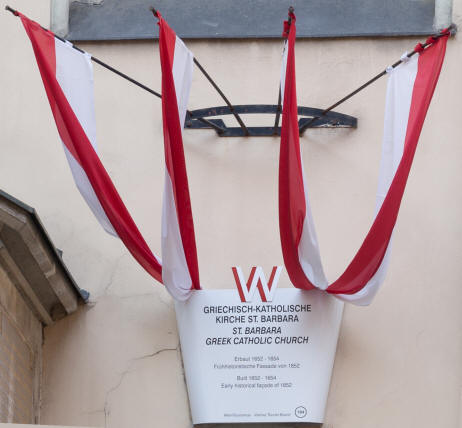
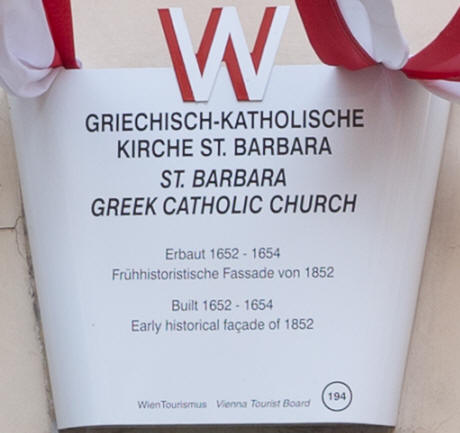
On the wall of the church is a plaque honoring Andrij Hnatyschyn, a Ukrainian composer and conductor who worked in this church from 1931-95 (wow, 64 years). On a marble column nearby, was this well-done bust of Iwan Franko (1856-1916), a Ukrainian writer and philosopher. I believe this is a Ukrainian orthodox church.
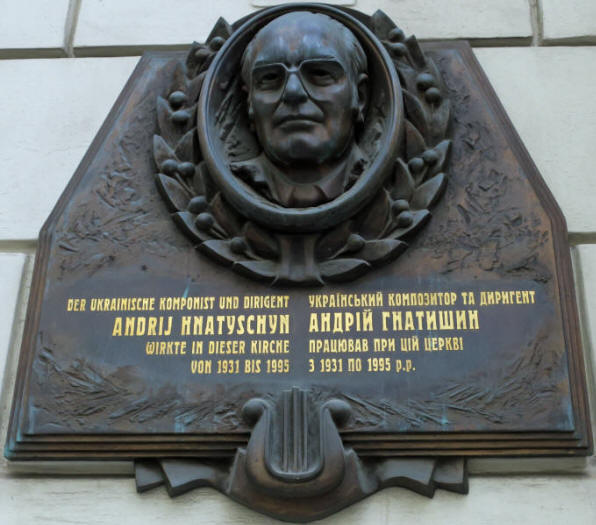
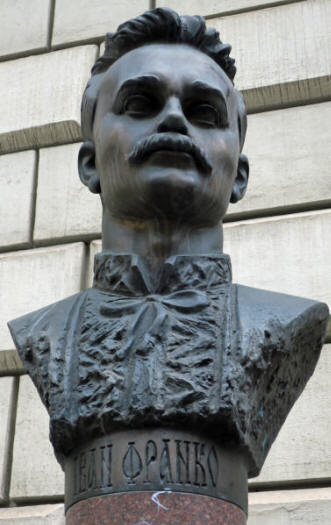
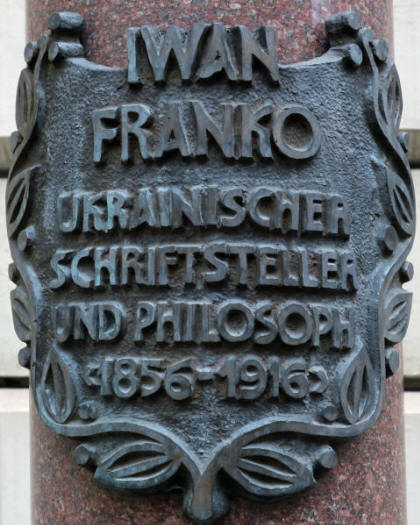
Below left is a photo of Franko and center is his gravesite in Lviv, Ukraine. You can see from my GoPro shot (right) that the church is right across the street from the outdoor seating for our restaurant that we ate at on the first night, Griechenbeisl on Fleischmarkt.
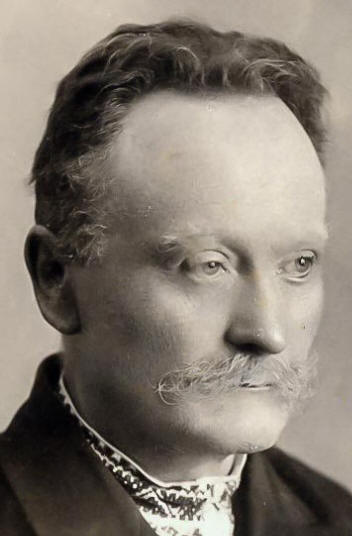
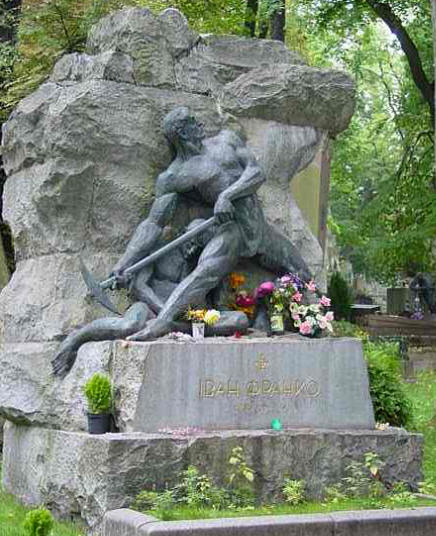
Next door to that restaurant is the Holy Trinity Greek Orthodox Church [Fleischmarkt 13, +43-1-533-3889] (GoPro, below). The church was inaugurated in 1858. Since 1963, the cathedral has been the seat of the Greek Orthodox Metropolis of Austria. The building is beautiful.
I believe the Canon PhotoStitch photos (below) show the colorful details much better.
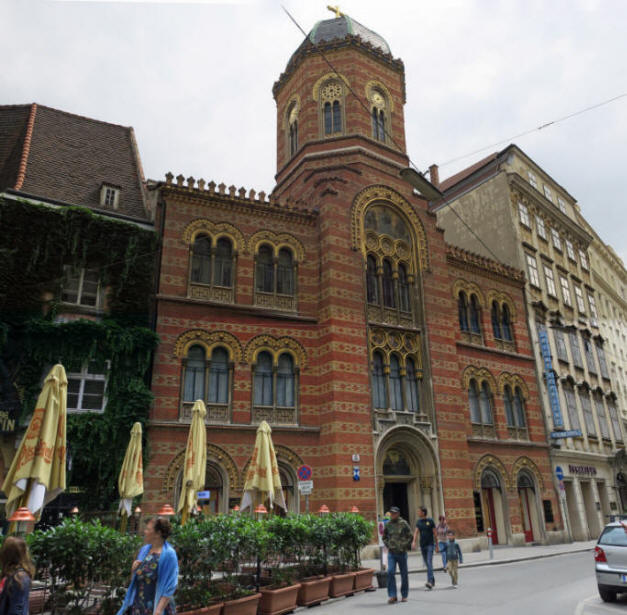
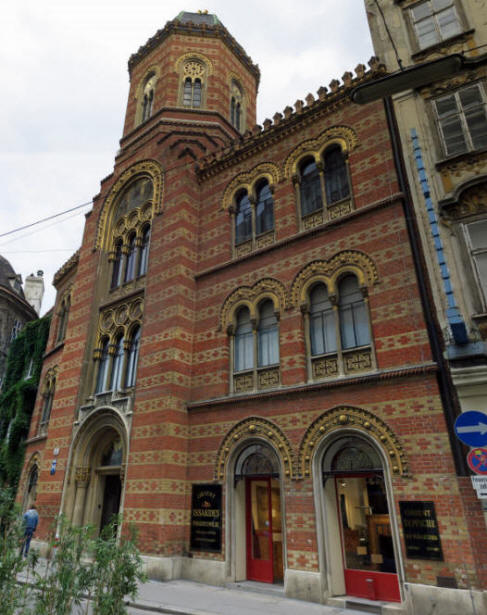
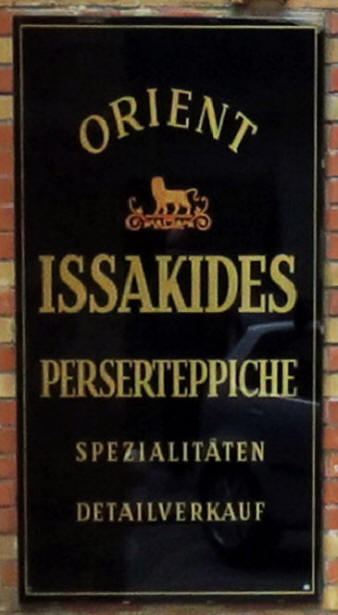
See the black sign to the left of the side doors (above center)? I enlarged and reoriented it (above right) to show that the right side of the church is leased out to Issakides Persian rug store [Fleischmarkt 13, +43-1-533-9754].
I snuck inside the church, just cracked the door open and peaked into the main altar room where a wedding was taking place and got this shot (below left) with my GoPro camera. I didn't dare enter the room, so I used the Canon to take three separate shots (one through each glass frame) to eliminate the door frames and PhotoStitched them to get this beautiful shot (below right).
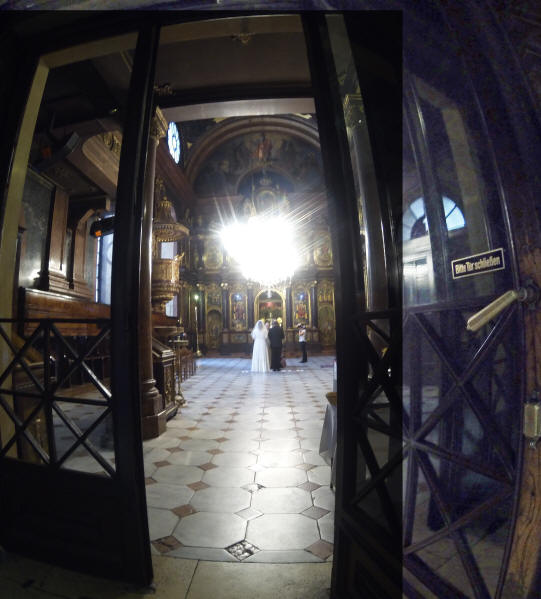
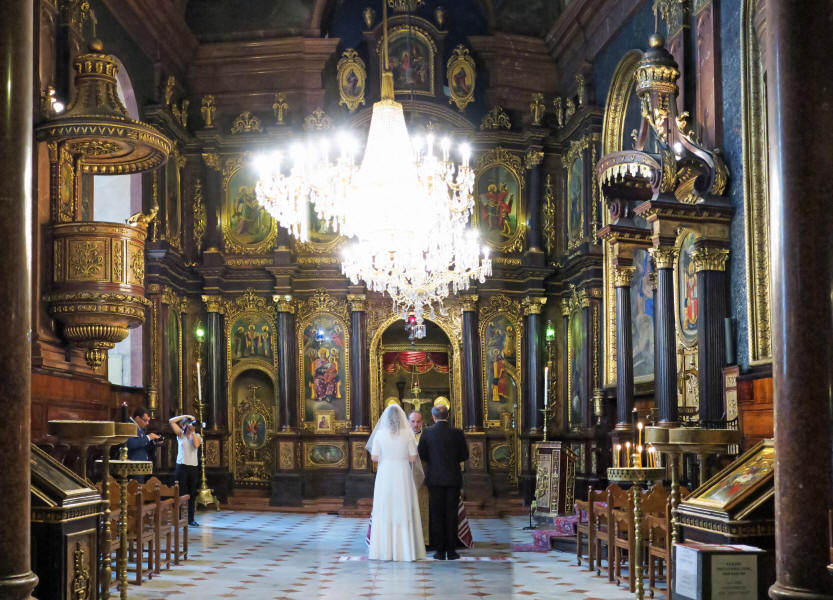
I then edited them to show the beauty of the church interior with its chandeliers, main altar, pulpit and side alter. You could almost identify the priest.
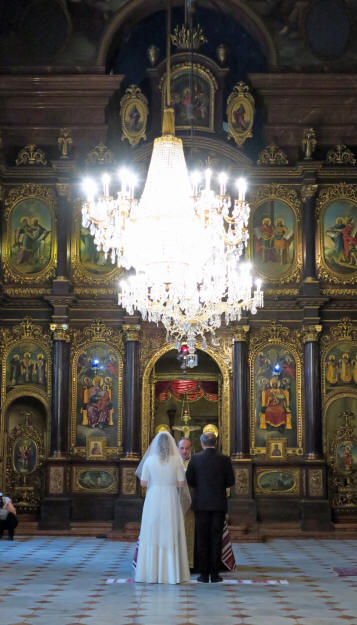
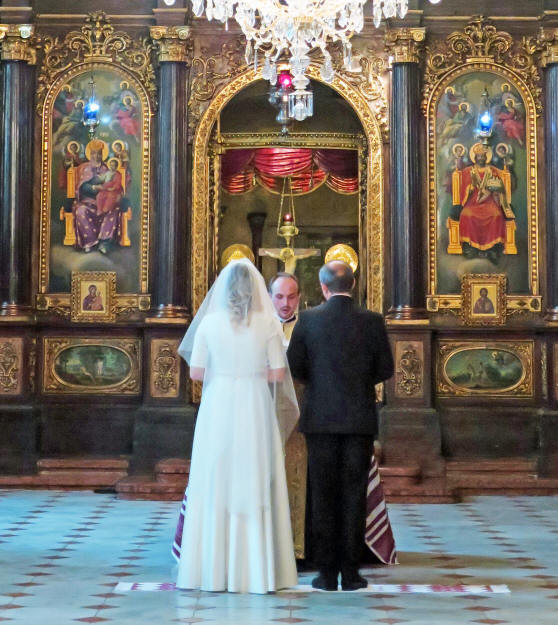
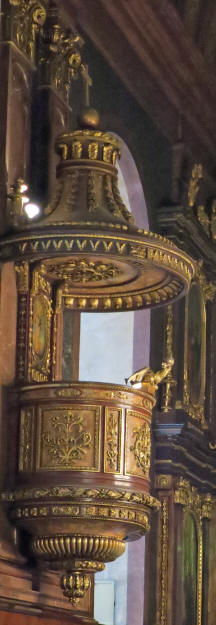
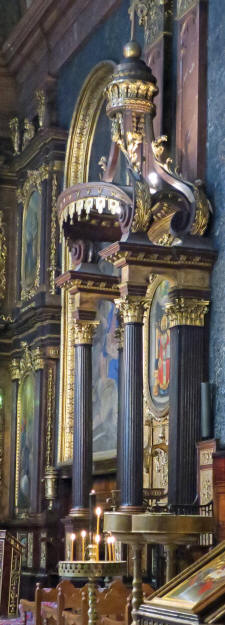
I loved these restaurant signs from the Vienne Cafe [Fleischmarkt 20, +43-1-512-9408] with their displays of Viennese dishes. Note my favorite dish, Schweinhaxen; third one down in center photo.
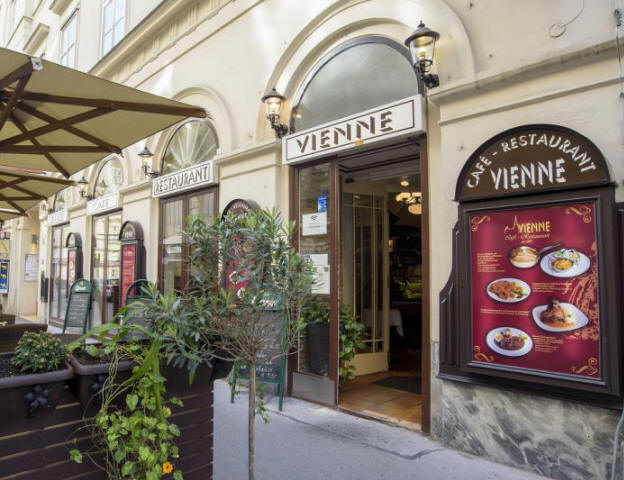
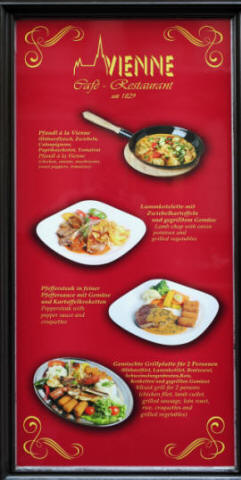
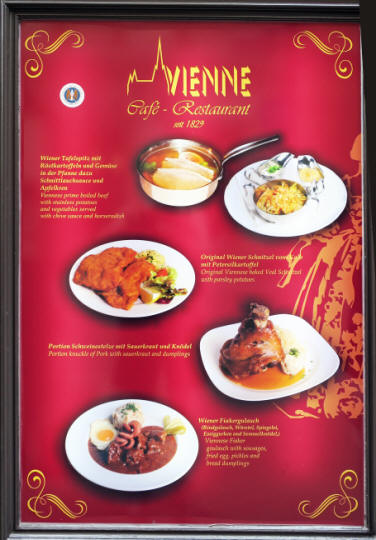
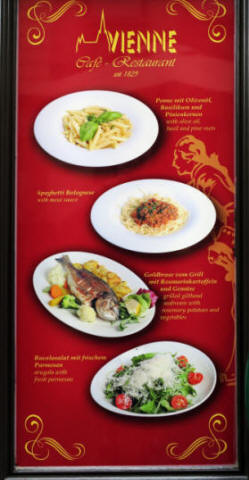
Continuing down Fleischmarkt near my hotel I saw this mural on the building (below left) which was of the Roterturm (red tower), the name of the street nearby. Below right is the mural enlarged.
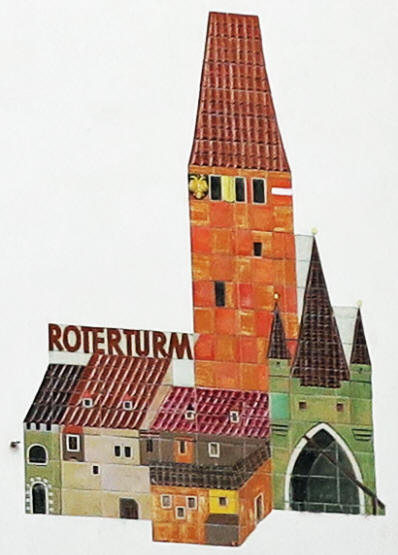
I got back to the hotel and changed into street clothes this time and walked all the way back to Maria Teresa Platz with her huge statue in the center (below left); this is where I ended up yesterday. On the way, I went down a parallel street to The Graben and bought two spoons at the Plastic House [Goldschmiedgasse 4-6, +43-1-533-8211] for �2.80 ($3.32).
I
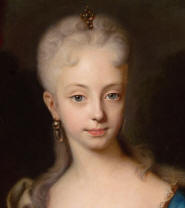 had
to stop and take some good
photos of this historic monument to Kaiserin
Maria Theresia
(1717-80) (left, as a teen). For Vienna, it is important to concentrate a
little on this very unique female ruler. She was the first female to rule
the Holy Roman Empire. It took a lot for her father Charles VI, to
negotiate treaties to allow her to be in that position. When she became
ruler in 1740,
had
to stop and take some good
photos of this historic monument to Kaiserin
Maria Theresia
(1717-80) (left, as a teen). For Vienna, it is important to concentrate a
little on this very unique female ruler. She was the first female to rule
the Holy Roman Empire. It took a lot for her father Charles VI, to
negotiate treaties to allow her to be in that position. When she became
ruler in 1740,
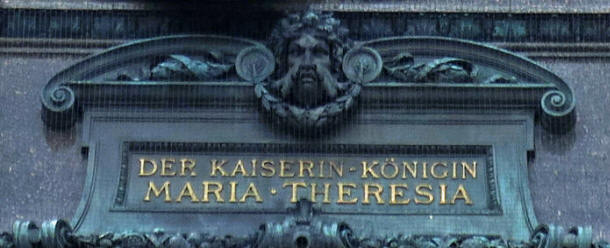 she
inherited a state that was bankrupt and with a weakened and demoralized military
while she was totally inexperienced. She struggled and ultimately
succeeded.
Despite
the fact that she was a very pious Roman Catholic, she promoted the Greek
Catholics as having equal status with
she
inherited a state that was bankrupt and with a weakened and demoralized military
while she was totally inexperienced. She struggled and ultimately
succeeded.
Despite
the fact that she was a very pious Roman Catholic, she promoted the Greek
Catholics as having equal status with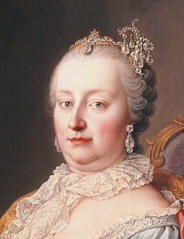
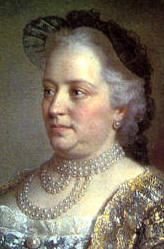 Roman Catholics. However, she also
enacted policies that suppressed exaggerated displays of piety, such as her
prohibiting public flagellantism.
On the
negative
side, she despised
Jews and Protestants, and on certain
occasions, she ordered their expulsion to remote parts of the realm. Later
in her third decade of reign, and influenced by her Jewish courtier Abraham
Mendel Theben, she issued edicts that offered some state protection to her
Jewish subjects such as forbidding the forcible conversion of Jewish children to
Christianity in 1762. One of the most popular and important monuments in
Vienna, the statue of Maria Theresia took 13 years to build and was finished in
1887. First, here are my Canon shots: face on (below left) and from the back side (below
center). Below right is the large poster nearby celebrating her 300th
birthday.
Roman Catholics. However, she also
enacted policies that suppressed exaggerated displays of piety, such as her
prohibiting public flagellantism.
On the
negative
side, she despised
Jews and Protestants, and on certain
occasions, she ordered their expulsion to remote parts of the realm. Later
in her third decade of reign, and influenced by her Jewish courtier Abraham
Mendel Theben, she issued edicts that offered some state protection to her
Jewish subjects such as forbidding the forcible conversion of Jewish children to
Christianity in 1762. One of the most popular and important monuments in
Vienna, the statue of Maria Theresia took 13 years to build and was finished in
1887. First, here are my Canon shots: face on (below left) and from the back side (below
center). Below right is the large poster nearby celebrating her 300th
birthday.
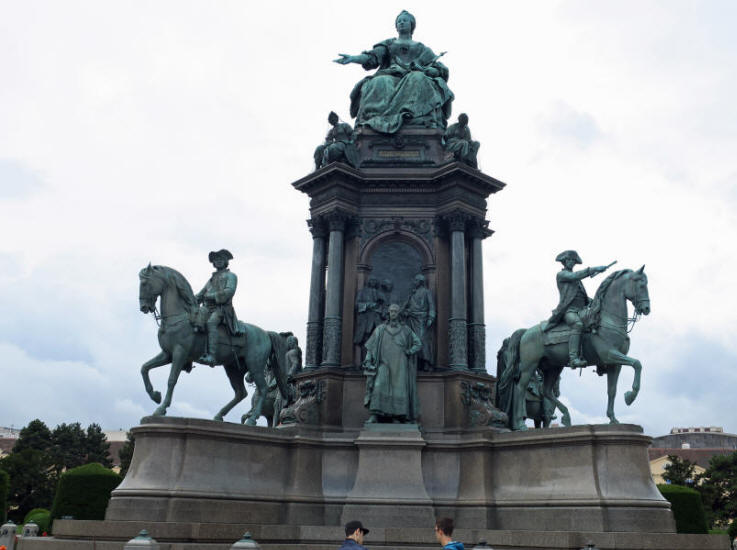
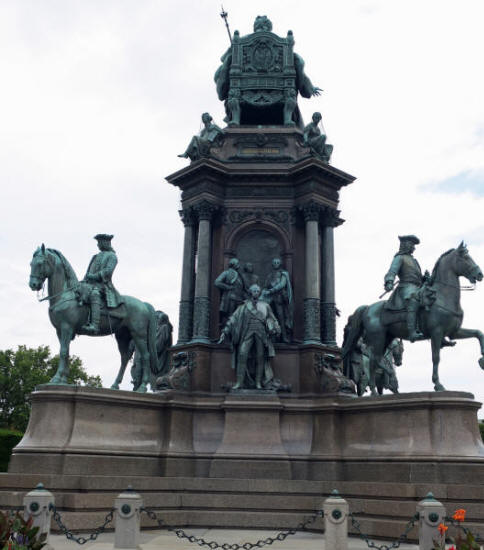
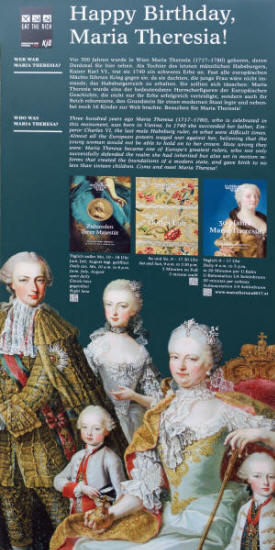
Here are some excellent stock photos; from the left side (left), straight on (center) and from the right side (right).
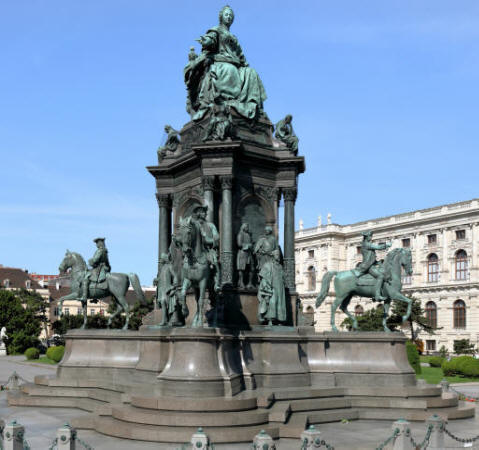
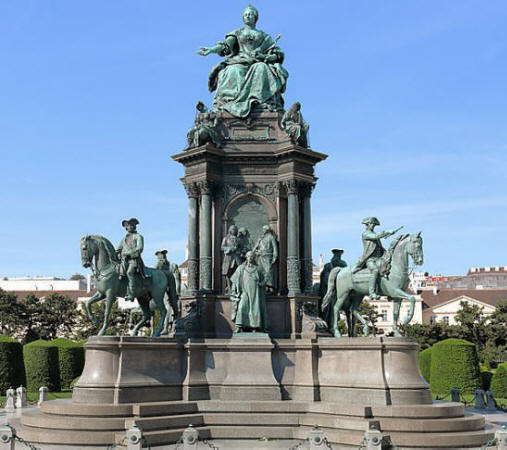
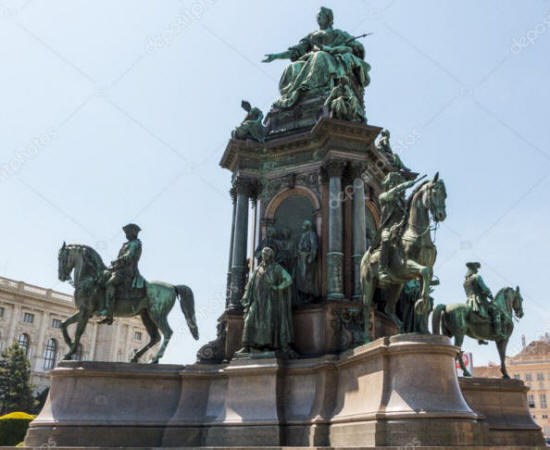
As usual, I got a close up of her (left) and a portrait shot of her face (right).
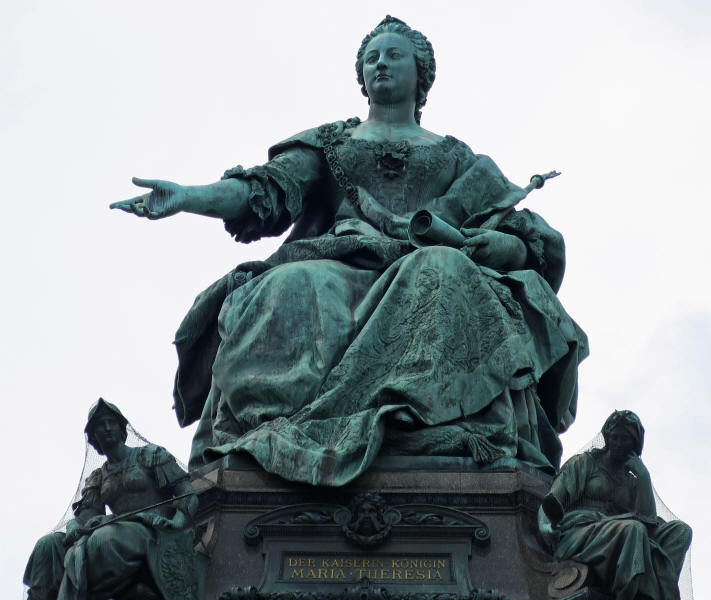
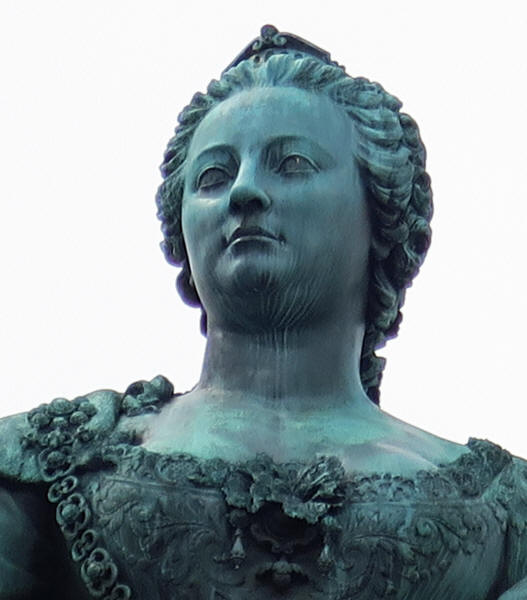
Over the course of twenty years and several wars, she gave birth to SIXTEEN children, thirteen of whom survived infancy and she stated that, had she not been almost always pregnant, she would have gone into battle herself. You may remember that Marie Antoinette was one of her daughters.
She ultimately died from the smallpox she had contracted earlier and was buried with the rest of the emperors in the Imperial Crypt in the Capuchin Church. The church, founded in 1618 and dedicated in 1632, is located on the Neuer Markt square of the Innere Stadt, near the Hofburg Palace. Since I was unaware of this place and did not see it, below are stock photos of the tourist sign with no English.
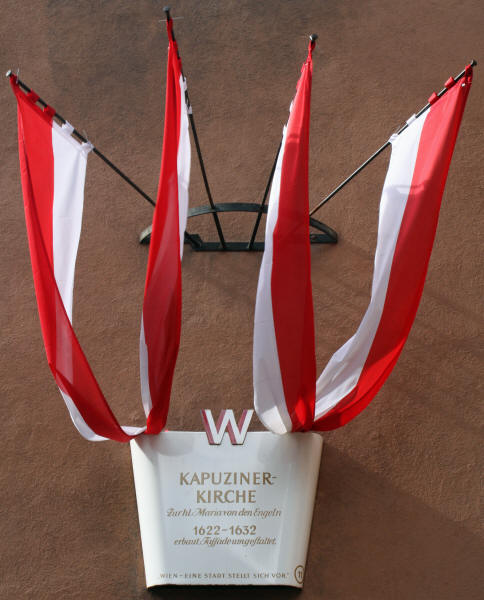
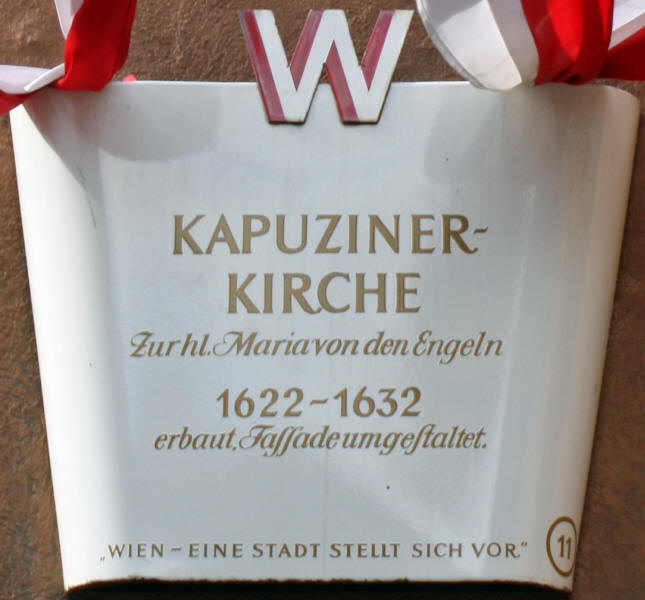
The church has a very unassuming facade and could be easily walked by without notice as the important place it is. Below are stock photos of it.
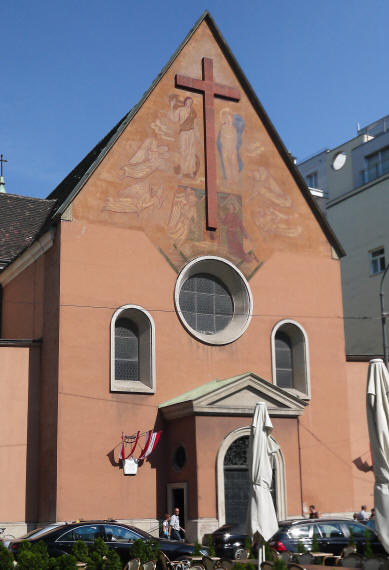
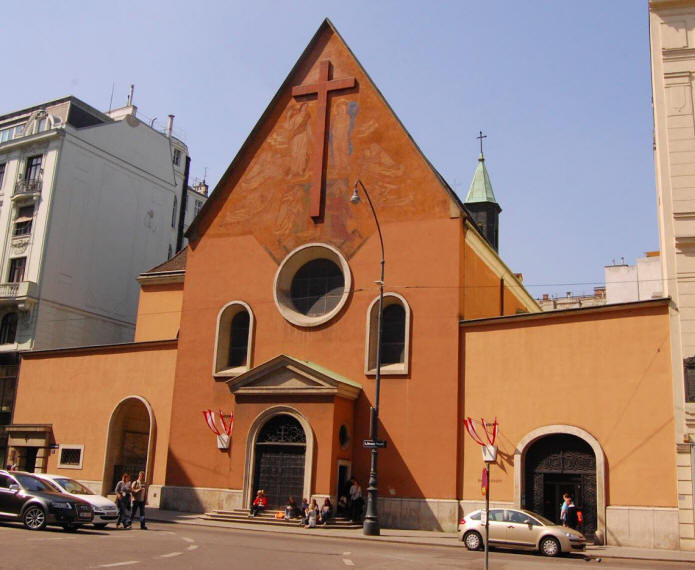
Below is a stock photo of the interior and the main altar (left) and one of the burial rights for Otto von Hapsburg, who was the last Crown Prince of Austria-Hungary from 1916 until the dissolution of the empire in 1919. He was the last to be buried here and there is only one spot left. Pretty good timing.
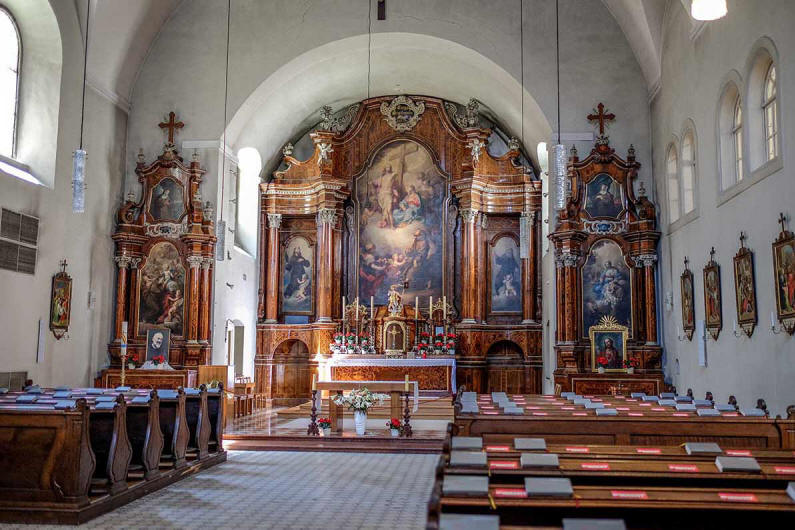

In the crypt below the church there are the bodies of 145 nobles, plus urns containing the hearts or cremated remains of four others; they include 12 Emperors and 18 Empresses. Below is a stock schema map of the burial areas.
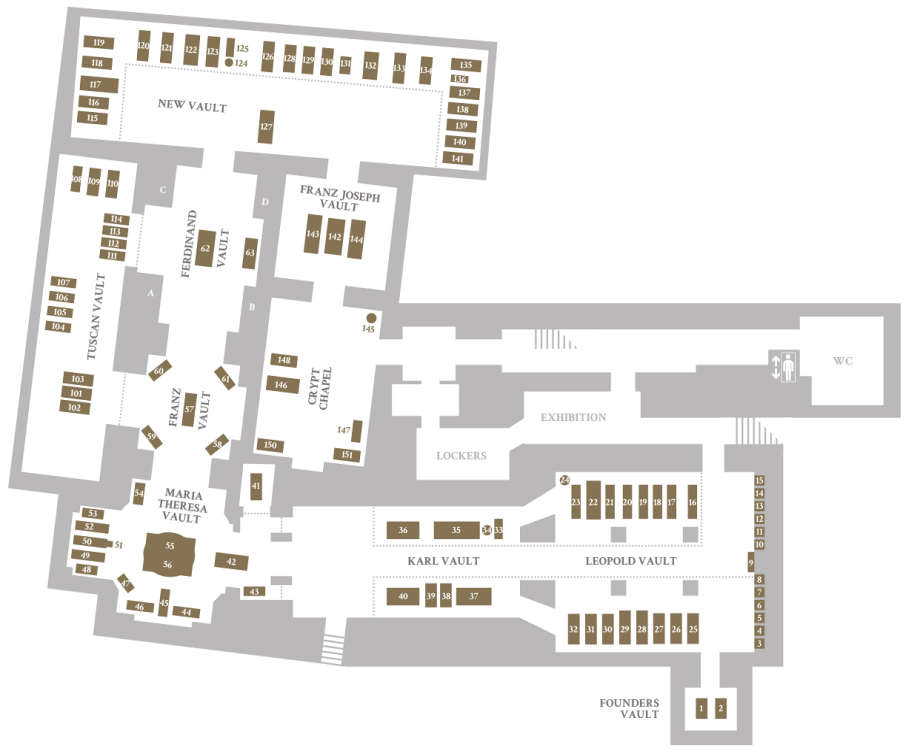
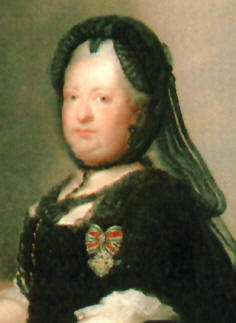
You can see her crypt in the lower left (above, E below). Above right is a stock photo of her as a widow just before her death. Here is another map I found with a description legend.
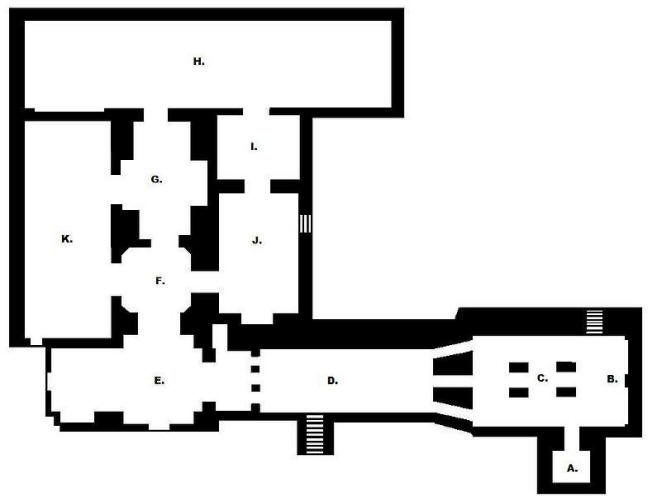

Below left is an example of the aisles of crypts and one of Maria Theresa's tomb (right). Stock.
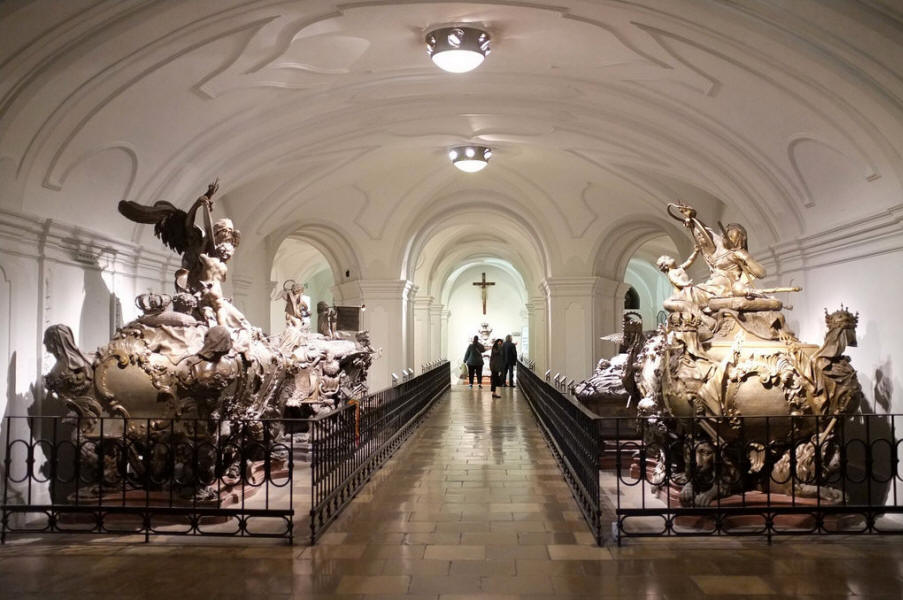
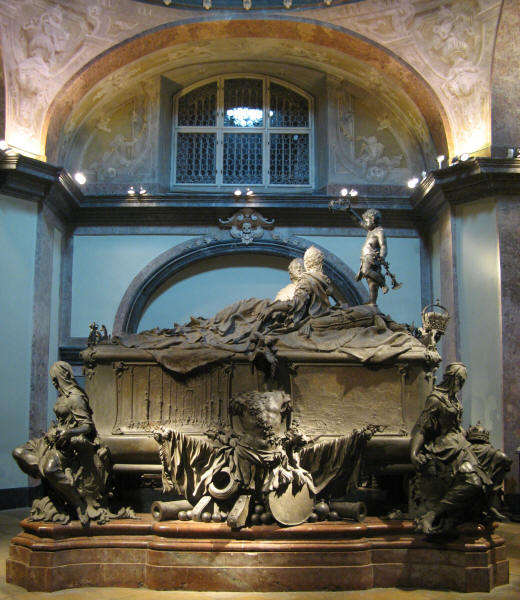
Below are stock photos of it showing the front (left) and from the back with the tomb of Franz Joseph in the foreground.
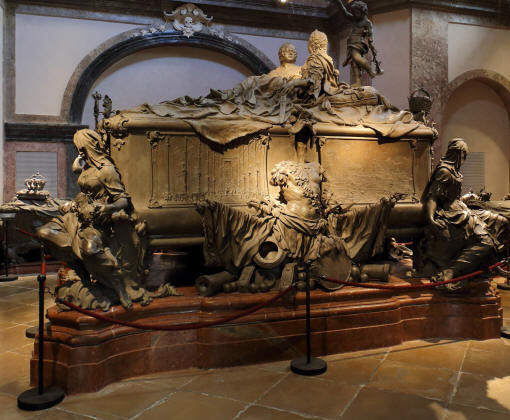
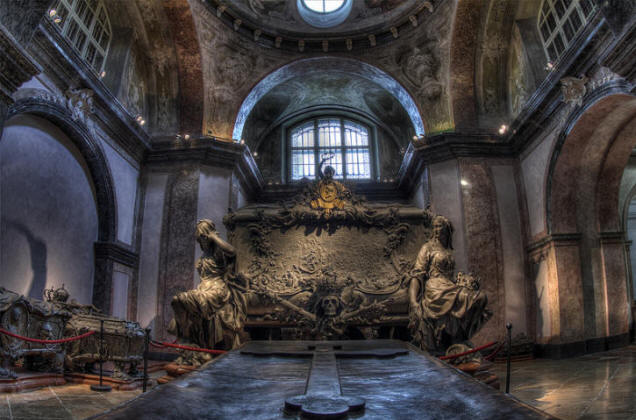
Just for completeness, on their website they have this family lineage tree for Maria Theresa
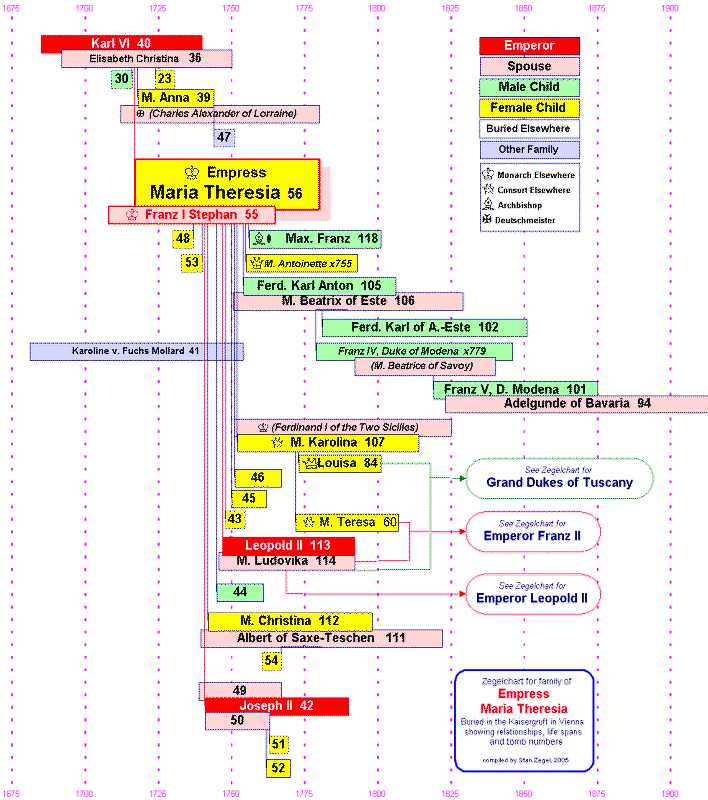
Back to the monument. Surrounding her are four equestrian statues. They are called the four "Paladins of the Empress". On the frontal view, they are Field Marshal Leopold Joseph von Daun (1705-66) (left) and Field Marshal Ernst Gideon von Laudon (1717-90) (right), whose last appointment was that of Commander-in-Chief of the armed forces of Austria (with their stock portraits).
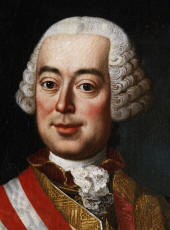
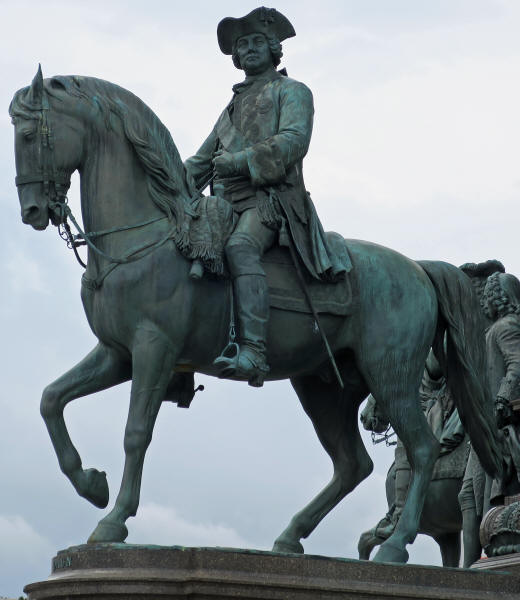
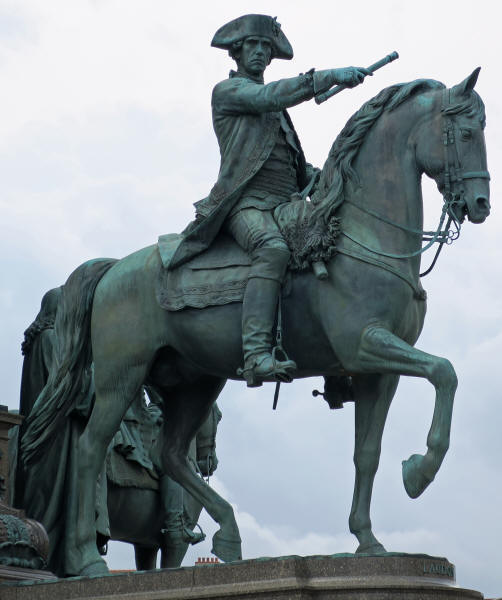
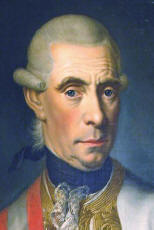
Below are the two from the rear side: left is Field Marshal Otto Ferdinand von Traun (1677�1748) who fought during both the Spanish War and the Austrian War of Succession. On the right is Field Marshal Ludwig Andreas von Khevenh�ller (1683-1744) (with their stock portraits).
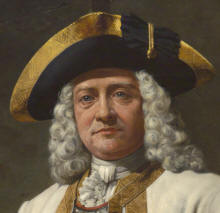
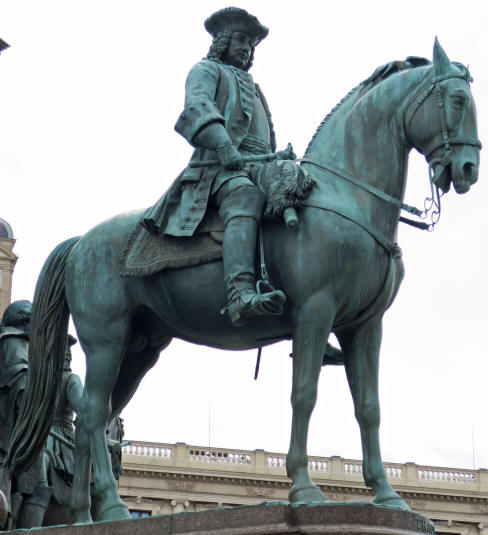
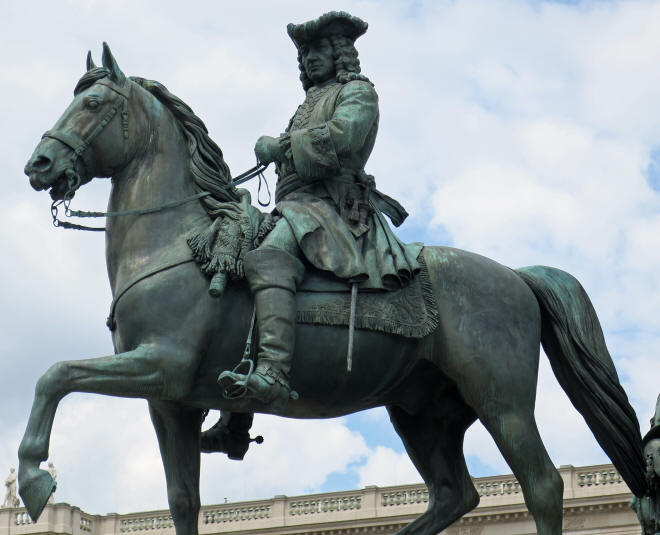
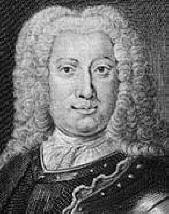
There are four other men memorialized on each side of the main base. On the left is Wenzel Anton of Kaunitz-Rietberg (1711-94), the State Chancellor of the Habsburg Monarchy for forty years serving her as well as Franz Joseph II and Leopold II. Center left is Friedrich Wilhelm von Haugwitz (1702-65), the Supreme Chancellor of the United Court Chancery.
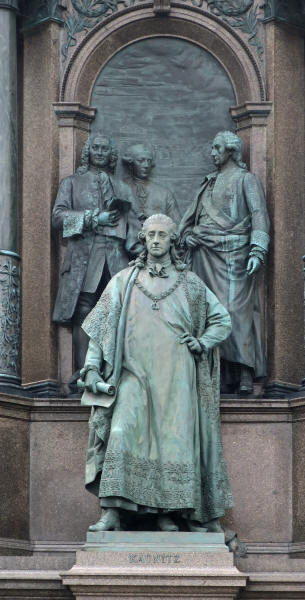
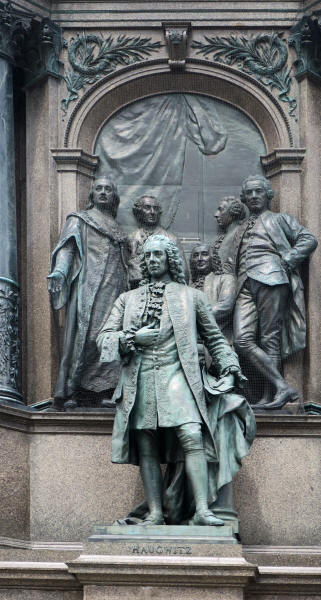
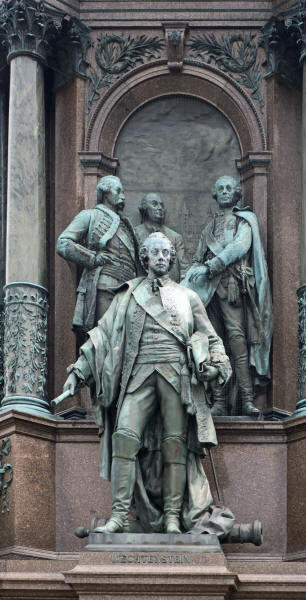
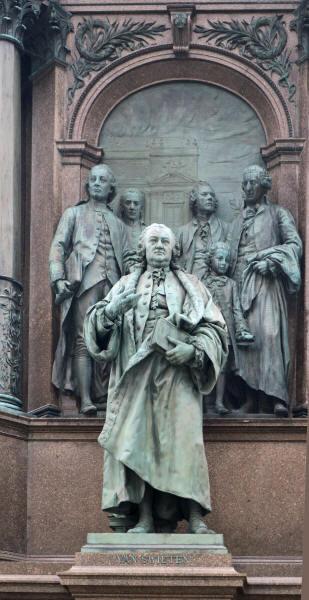




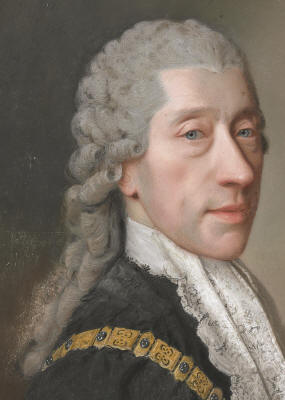
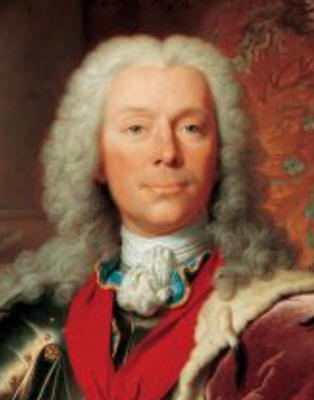
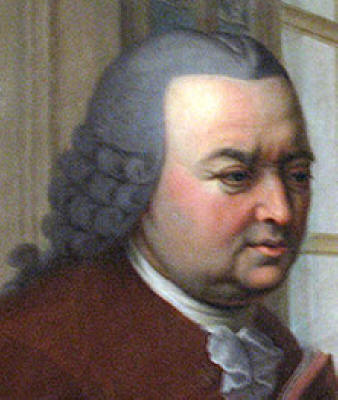
Center
right is
Joseph Wenzel I Liechtenstein (1696-1772), who was Imperial Envoy to Berlin
From 1735-6 and Ambassador to Paris between 1738-41. In 1760, he escorted the
future bride of Josef II to Vienna. He ruled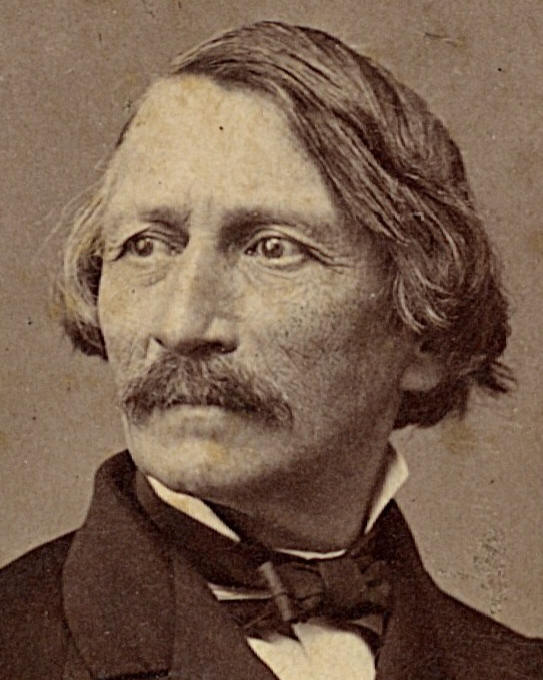 Liechtenstein three times
during his life. On the right is
Gerard van Swieten
(1700-62) who was a Dutch physician and became her personal physician from 1745
and transformed the Austrian health service and
medical university education.
Maria Theresa promulgated institutional, financial and educational reforms, with
the assistance of Kaunitz, Haugwitz and Van
Swieten.
Liechtenstein three times
during his life. On the right is
Gerard van Swieten
(1700-62) who was a Dutch physician and became her personal physician from 1745
and transformed the Austrian health service and
medical university education.
Maria Theresa promulgated institutional, financial and educational reforms, with
the assistance of Kaunitz, Haugwitz and Van
Swieten.
I turned to the left and there was the Museum and opposite it is the Natural History Museum (below left). On the right is stock photo of the interior hallway. Both buildings opened around 1891 by Emperor Franz Joseph I. Both buildings were built between 1871-91 according to plans drawn up by Gottfried Semper (1803-1879) (above right) and Karl Freiherr von Hasenauer. Semper built the beautiful Opera House (below) we visited in Dresden in 2007 (See Germany/Dresden).
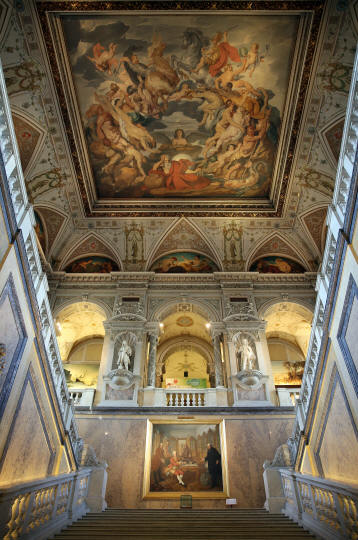
Below left is my shot of the Dresden Opera House from 2007. Below right is a stock photo of dinosaurs from the Sauriersaal area of the Natural History Museum. Unfortunately the museum was closed today so I could not go in.
Below are my GoPro shots of the two museums, facing each other.
The Museum of Fine Arts
The above link is to their site with many images of the art.
I went in the entrance of the Kunsthistorisches Museum (below left) at 12:10 AM and it was free for admission today. The building is exquisitely covered with beautiful statuary. Below right is my PhotoStitch aerial view of the entrance when you get inside. If you carefully look into the hole surrounded by the red couch you can see the main entrance on the floor below (Floor 0). The cafe is on Floor 1 and I'm up on Floor 2.
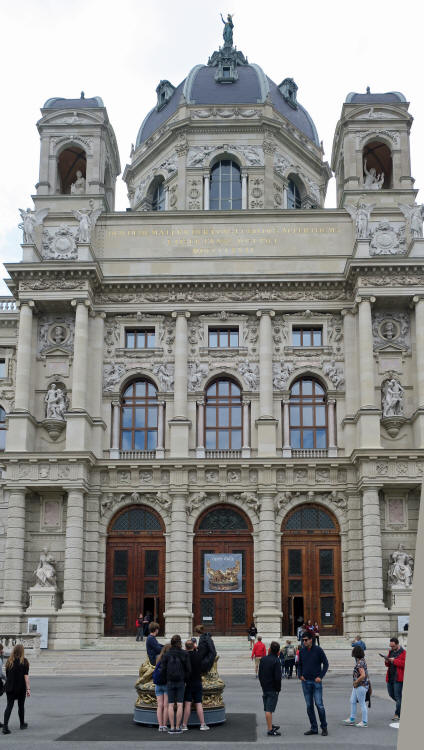
.jpg)
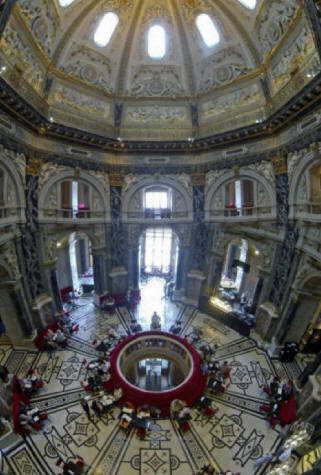
Even standing in front of the entrance (above left), it is very difficult to see the details higher up. It's worthwhile taking a closer look at the upper areas of the entrance exterior. Below is the lettering at the top, above the Floor 2. It says: "Den Denk Malern der Kunstund des alterthums" or "The monuments of art and antiquity"; Kaiser Franz Joseph I, 1881. When it's enlarged like this, using a Canon 18mpx camera, you can see the fine detail of the angel statues and the sculptures. There's art outside that few people get to appreciate without binoculars.

Much lower down, just above the entry doors there are detailed depictions of artists (in the squares) and torsos and faces (over the arches). The detail is really astonishing lasting almost 140 years.

Now, back inside, below left is another angle of the cafe below. On the right is a look at the detail of the interior of the dome above the cafe.
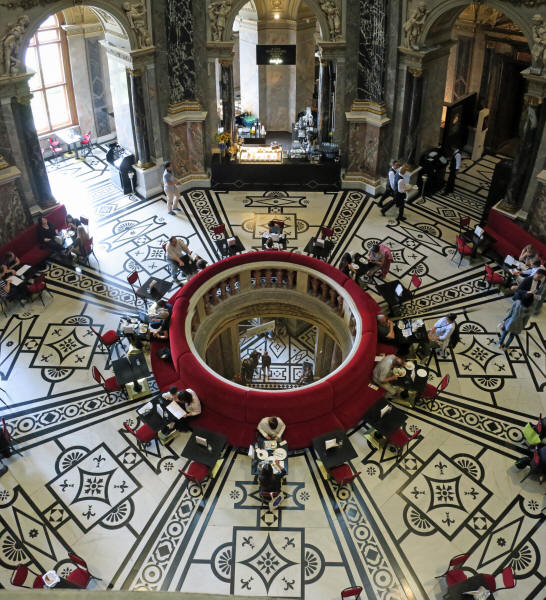
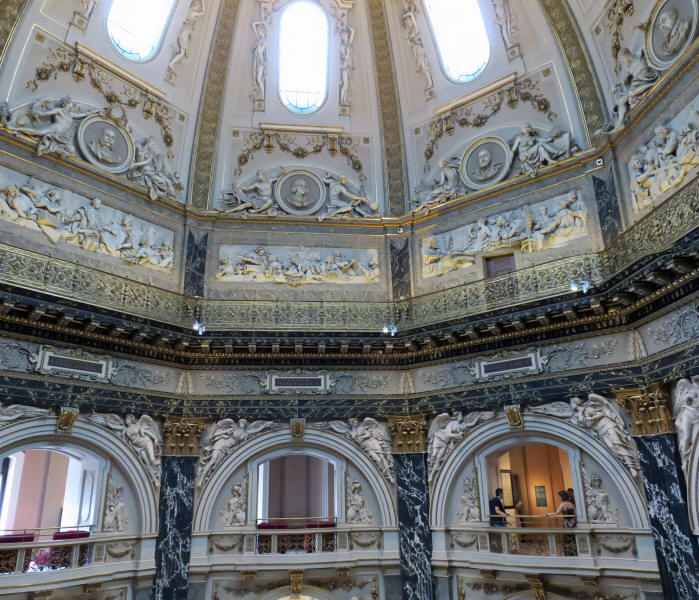
I took several shots of the panels and PhotoStitched them into one but it is impossible to flatten a circle.
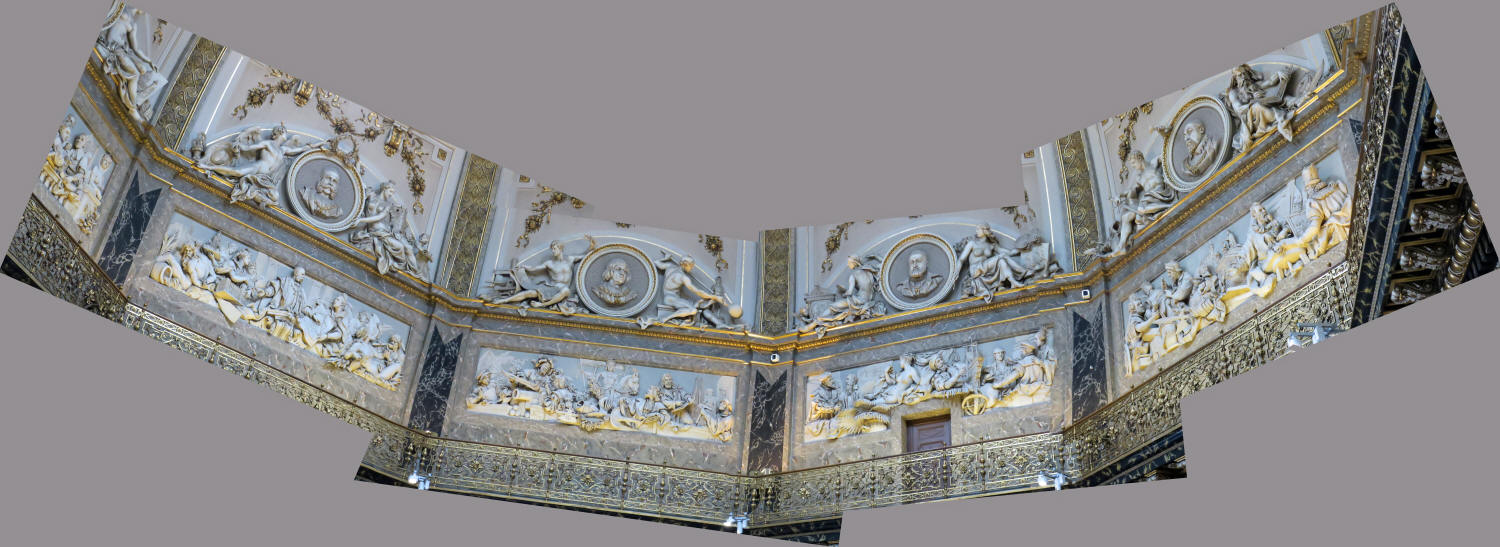
When you are inside, the museum is very well labeled almost everywhere in both German and English, so it is easy to find where you want to go. They have large placard signs in the halls (below left), labels inside the elevator (center) and carefully labeled floor plan maps for each floor (Floor 2, right). It couldn't be nicer.
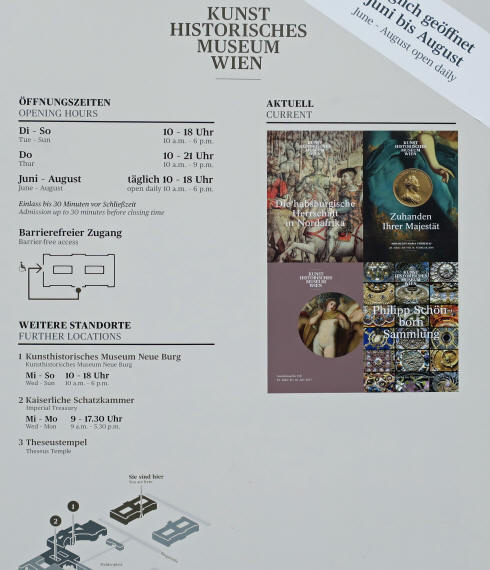
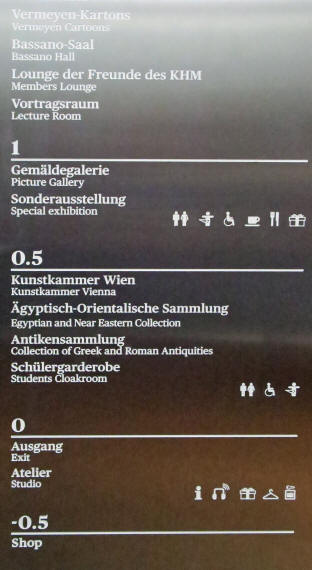
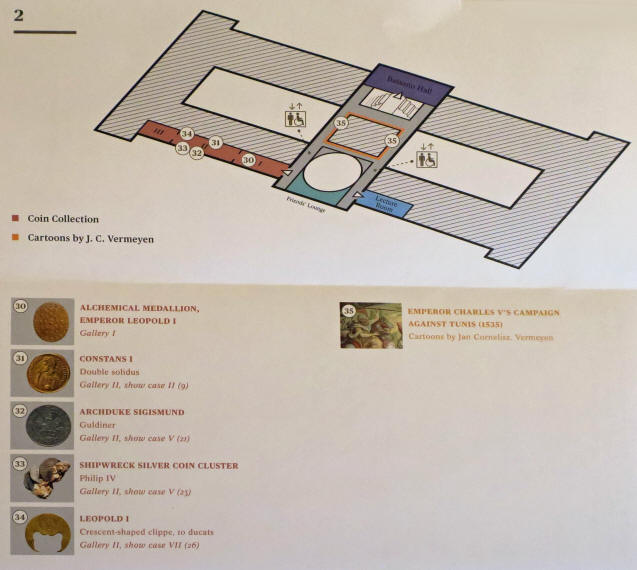
.jpg)
Vermeyen Tapestries
I immediately did my trick of taking the elevator to the top floor (Floor 2) and began there. Then I walk down the remaining floors.
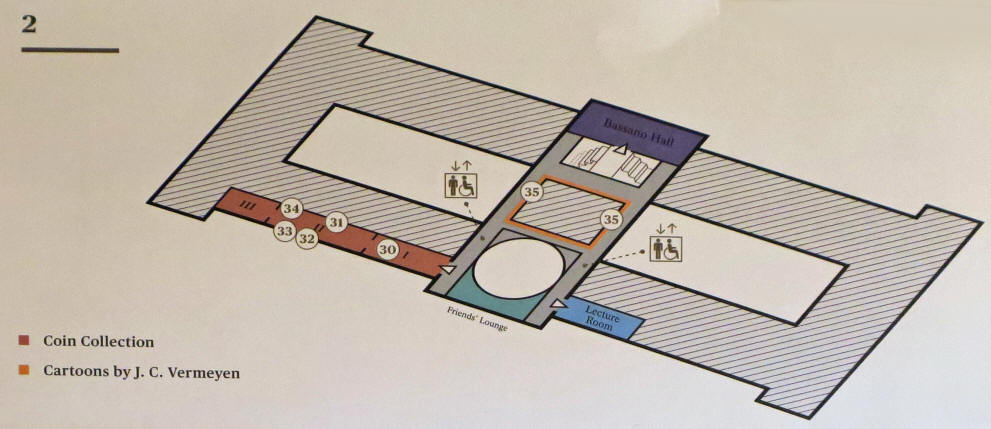
The first thing I came to wa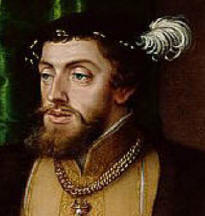
 s this display, in the center, of the Vermeyen
tapestry cartoons (central square 35, above) on a circular wall in an area with many displays.
Here is the back story:Emperor
Charles V
(1500�1558) (left) was Holy Roman Emperor from 1519�56, notably during the trial of
Martin Luther. In June 1535, Charles V set sail from Sardinia with a fleet
of 400 ships and over 30,000 soldiers to re-conquer the Kingdom of Tunis from
the Ottomans. To document the campaign he brought not only historians and
poets but his court painter,
Jan Cornelisz
Vermeyen (1504�59) (right). Eleven years later, in 1543, he was
commissioned to paint a total of twelve monumental tapestries (called
"cartoons") celebrating the campaign. They were based on the many drawings
and sketches he had made during the battles.
Here is some background information they displayed.
s this display, in the center, of the Vermeyen
tapestry cartoons (central square 35, above) on a circular wall in an area with many displays.
Here is the back story:Emperor
Charles V
(1500�1558) (left) was Holy Roman Emperor from 1519�56, notably during the trial of
Martin Luther. In June 1535, Charles V set sail from Sardinia with a fleet
of 400 ships and over 30,000 soldiers to re-conquer the Kingdom of Tunis from
the Ottomans. To document the campaign he brought not only historians and
poets but his court painter,
Jan Cornelisz
Vermeyen (1504�59) (right). Eleven years later, in 1543, he was
commissioned to paint a total of twelve monumental tapestries (called
"cartoons") celebrating the campaign. They were based on the many drawings
and sketches he had made during the battles.
Here is some background information they displayed.
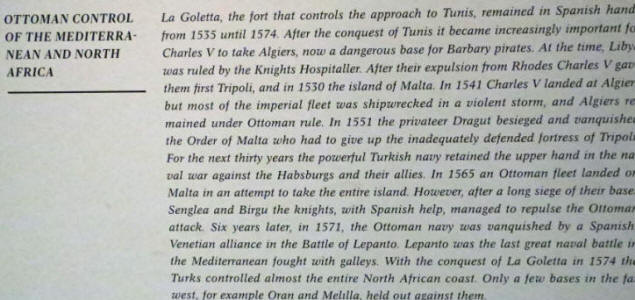
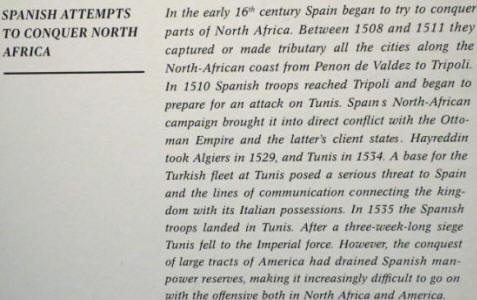
Because of their size and the circular manner of display, the Canon could not get adequate shots. I used the GoPro and with a little PhotoShop, I got what you see below. The first is "The Capture of La Goleta".
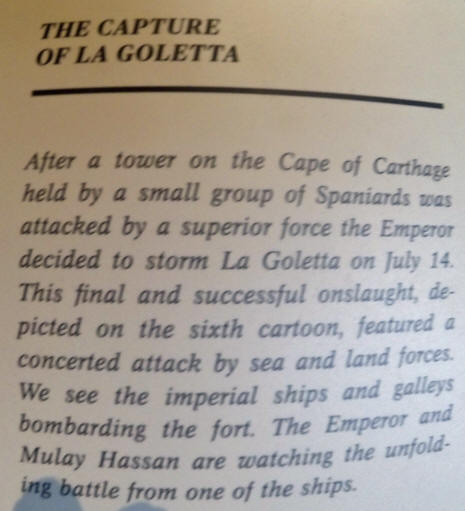
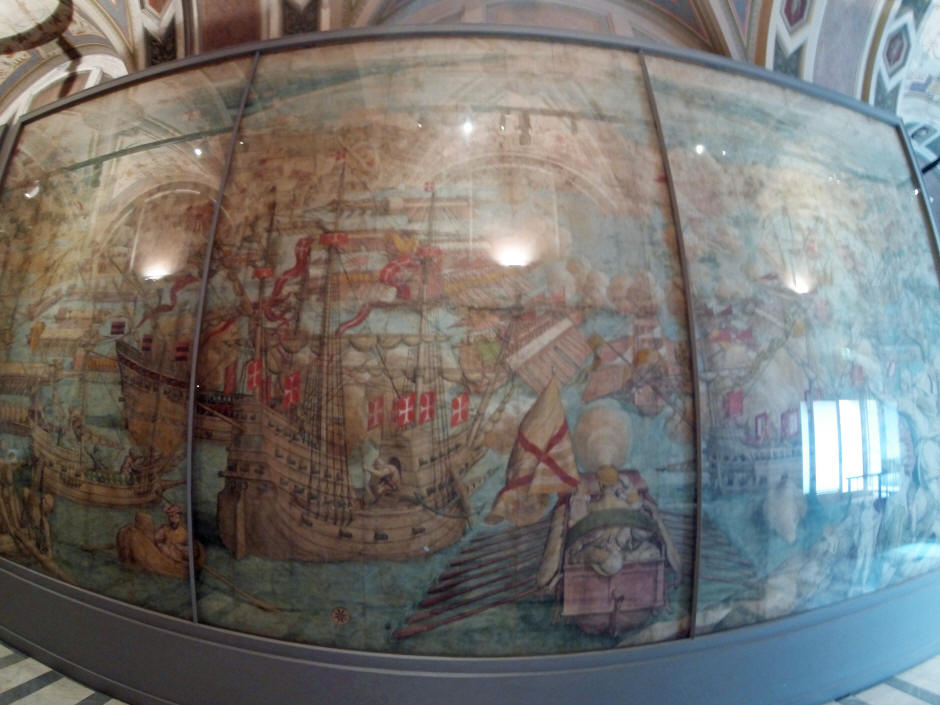
Then below is titled "The Pitched Battle on the Road to Tunis".
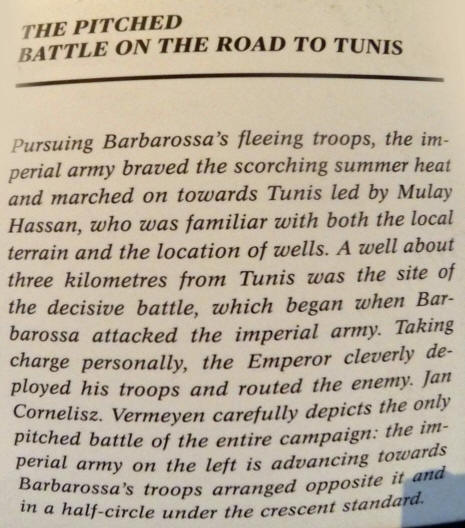
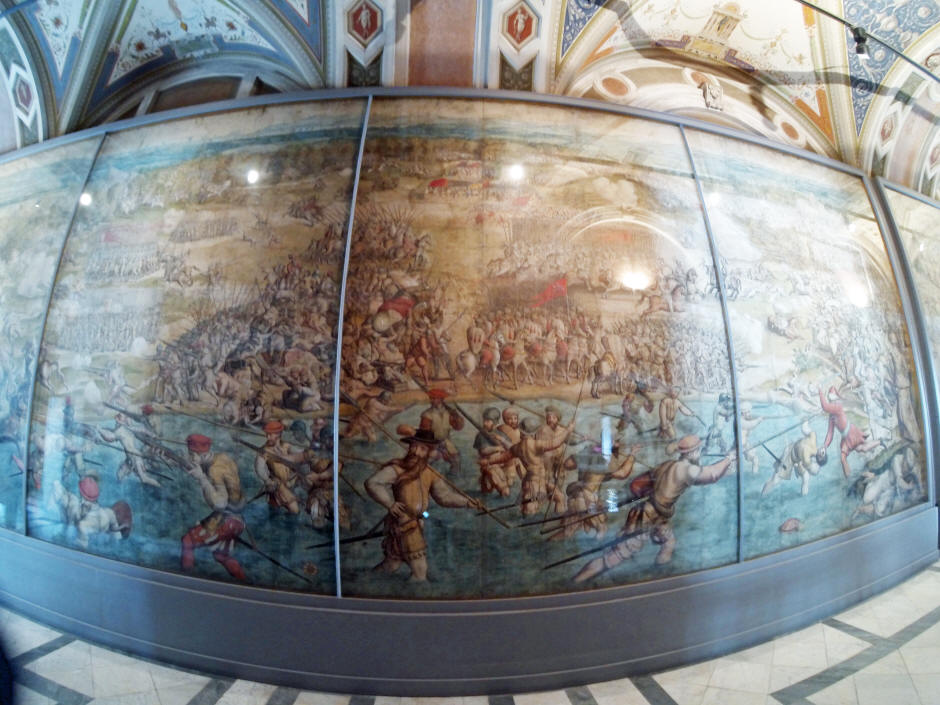
And finally "The Capture and Pillage of Tunis".
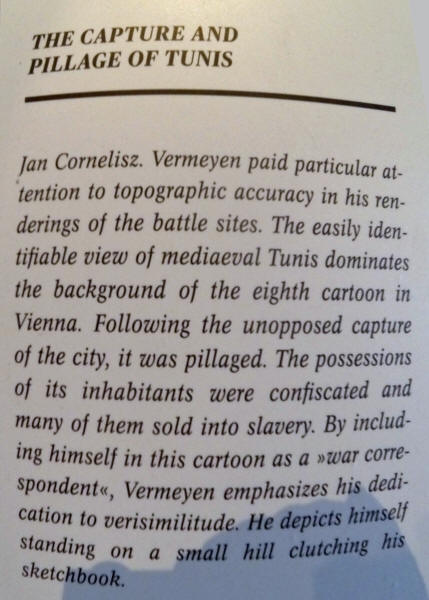
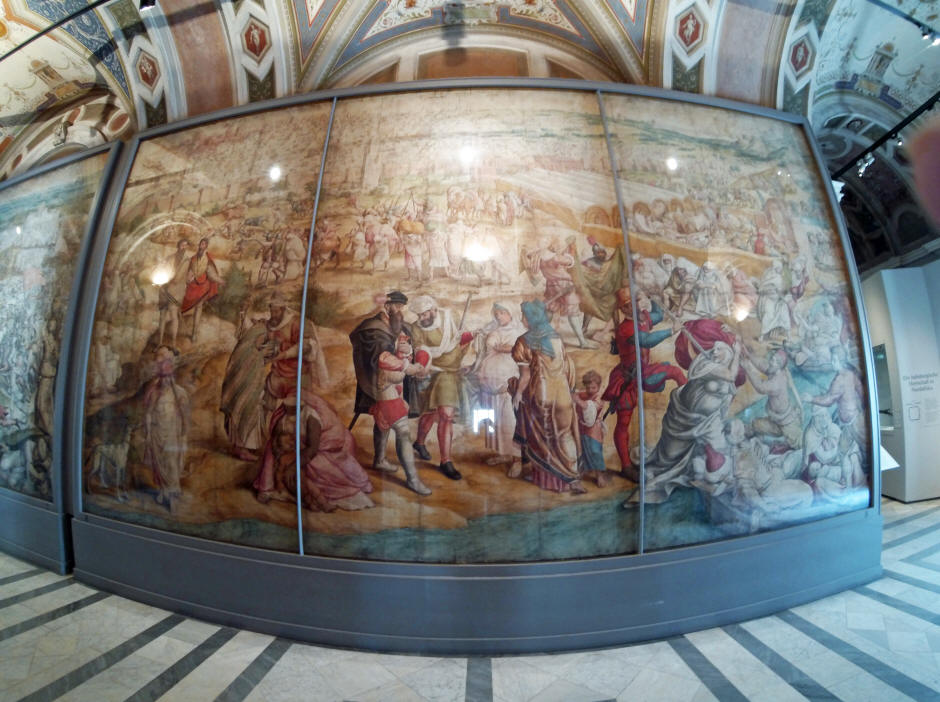
You can see on the very right side of the above photo these display cabinets. I took shots of a few of them. Most of these are of weapons and other pieces from the era of these wars. You can read the descriptions. Here are swords, ...

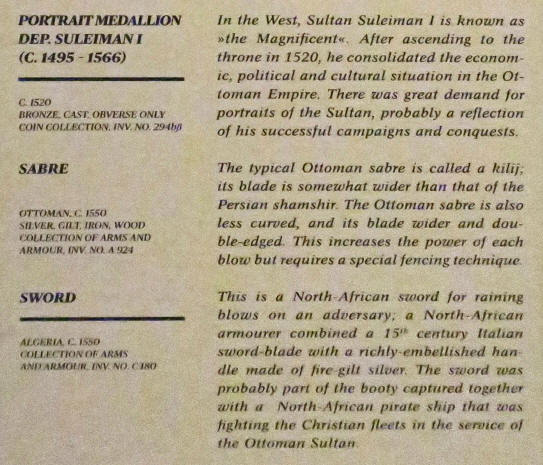
... rifles, helmet ...

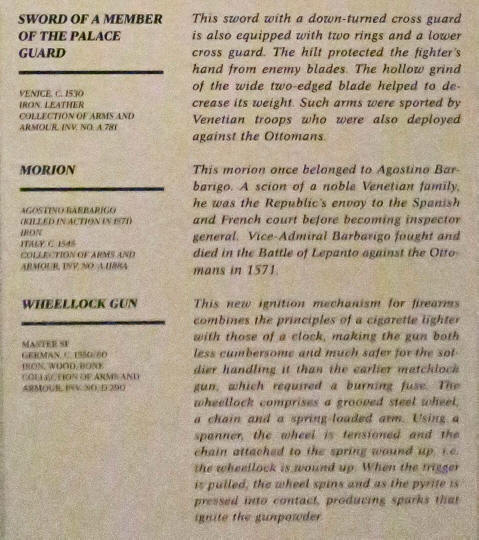
... crossbows ...
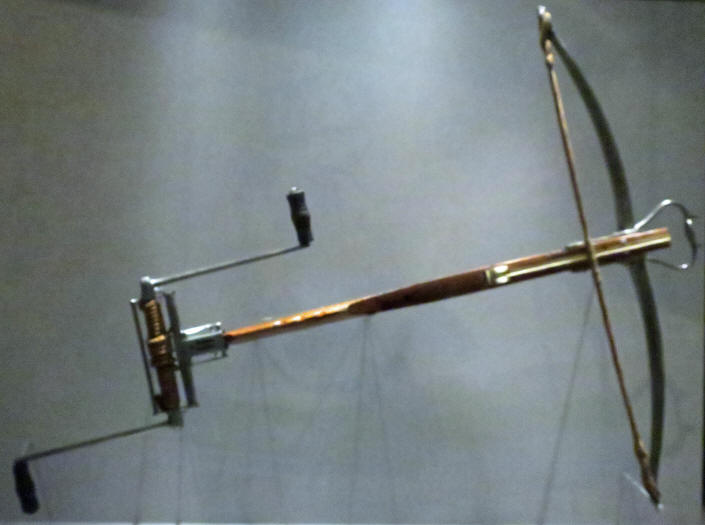

... and Charles V's gloves.
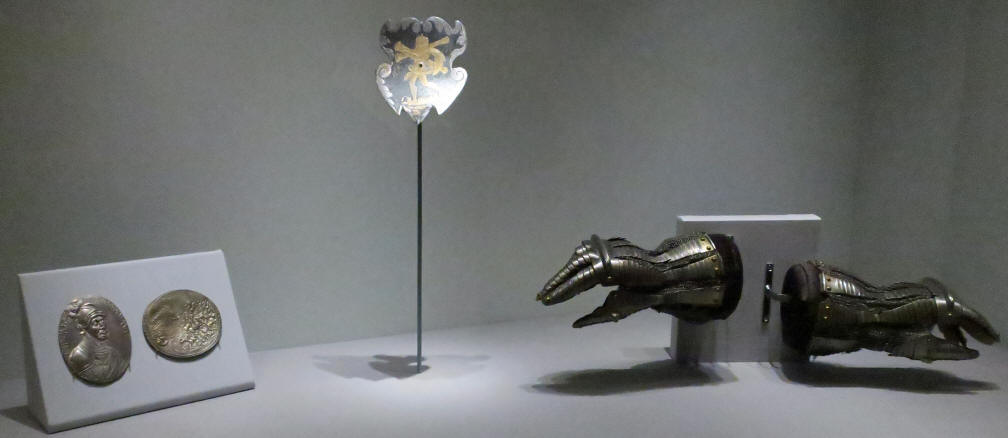
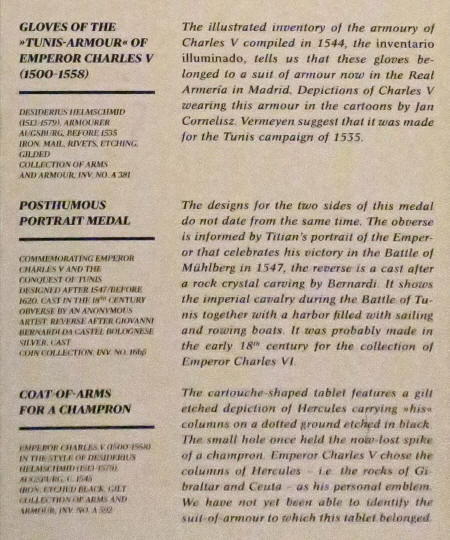
I finished that collection and then headed over to the three Galleries of the Imperial Coin Collection and began my tour of the coins of the Empire (map below from their website).
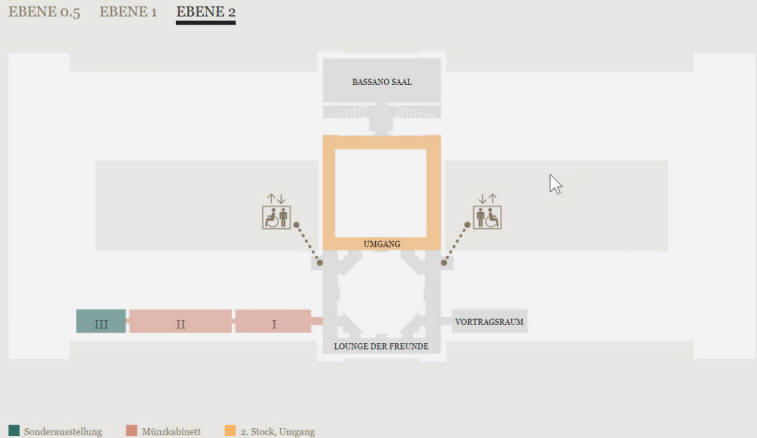
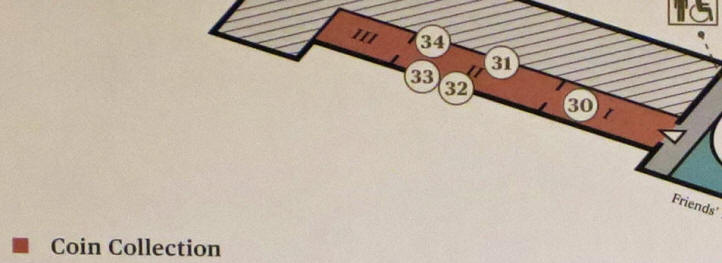
The Coin Collection is one of the five largest and most important coin collections in the world. It contains 600,000 objects from three millennia; not only coins, but also paper money and medallions. Only 2,000 objects can be seen in the three halls (above) of the permanent display, which represents only a small part of the holdings. Below are three stock photos from their website.

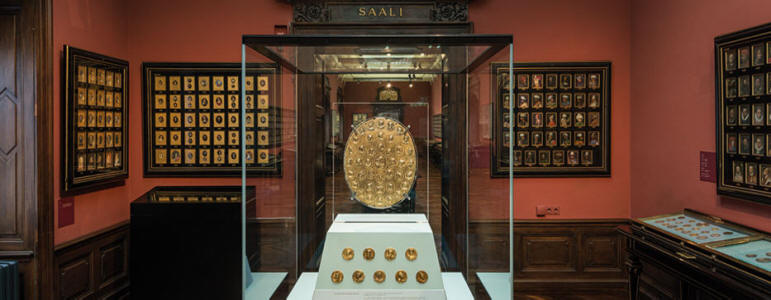
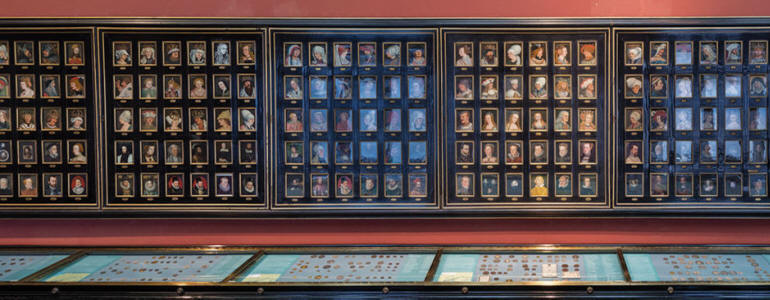
Below is my Canon shot (left) looking ahead and GoPro shot (right) looking back of Gallery I that I entered first.
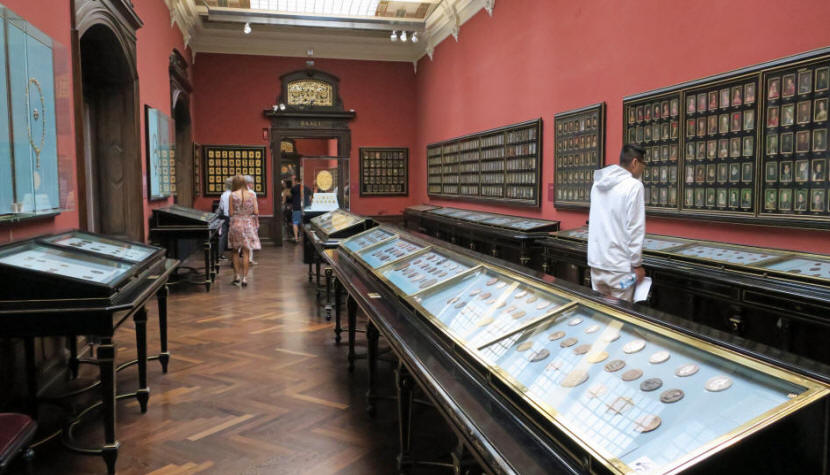
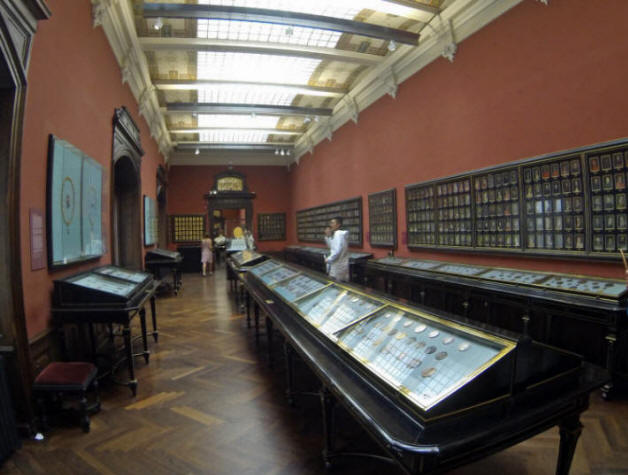
They began the display with an overview ...
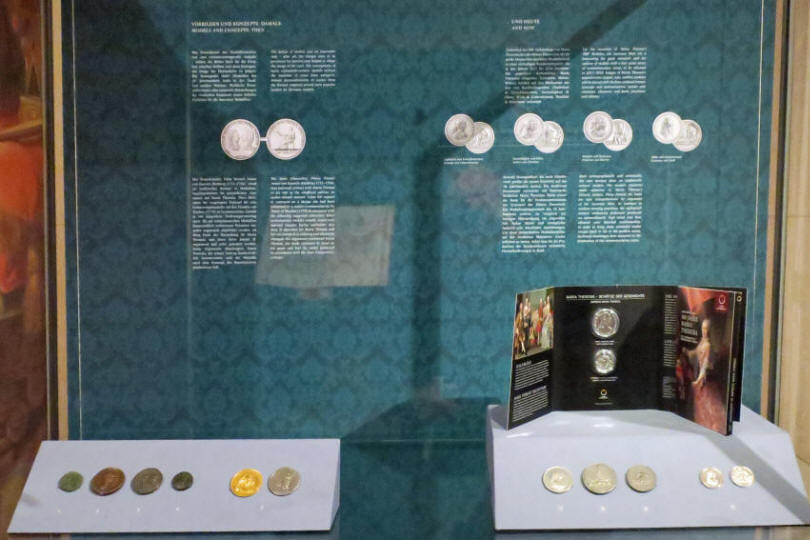
... of the collection (above), and below are my photos of the coins in the lower part of this display.

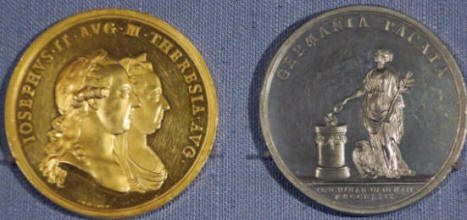
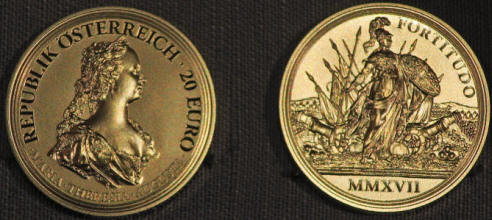

The black card (above right, below) is to celebrate Maria Theresa's 300th birthday, where the Austrian Mint is honoring her with a four piece series of commemorative coins with images of her popular roles as regent, wife, mother, and widower which are combined with the four cardinal virtues; courage and determination, justice and character, clemency and faith, and prudence and reform. The one on display (below) is "courage and determination".
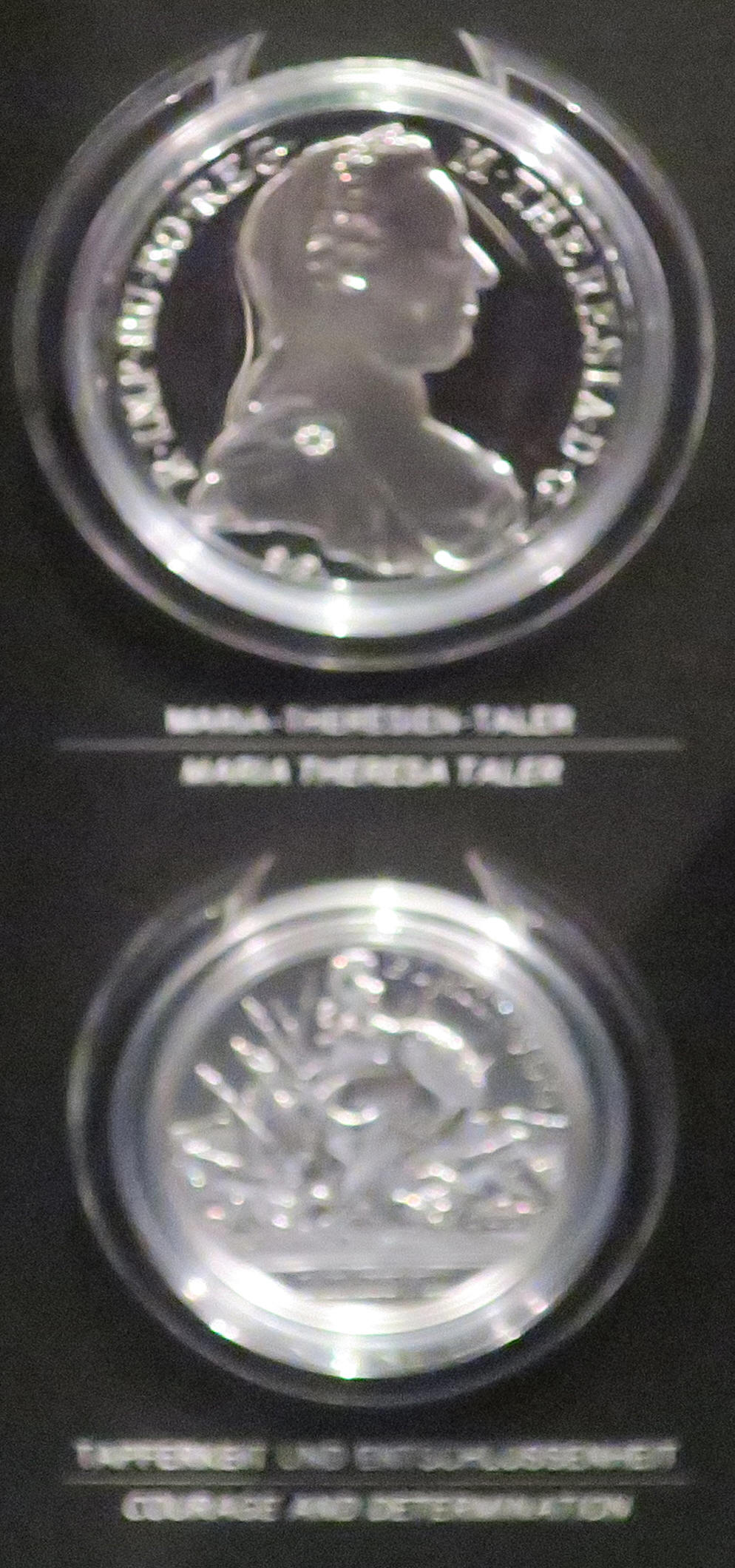
These weights on display (below left) were used as teaching aids at the Viennese Mint in the 18th Century. On the right is a medallion encased in wood with the image of the Empress when she was young.

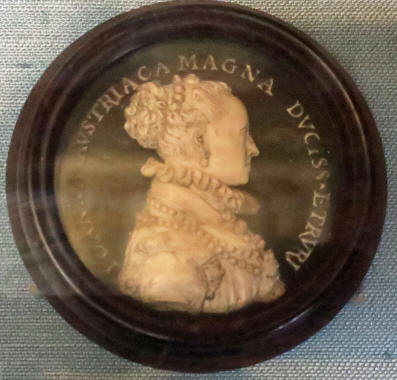
You won't believe that I did not photograph all 2,000 coins in the collection, but I didn't. I only took shots of interesting, historic or ones that gave an example of what they have here. If you have no interest in coins, use the scroll bar to quickly scroll past them. If you have an interest in historic coins, I've included the description panel below them that describes each coin. You might need magnifiers for some.
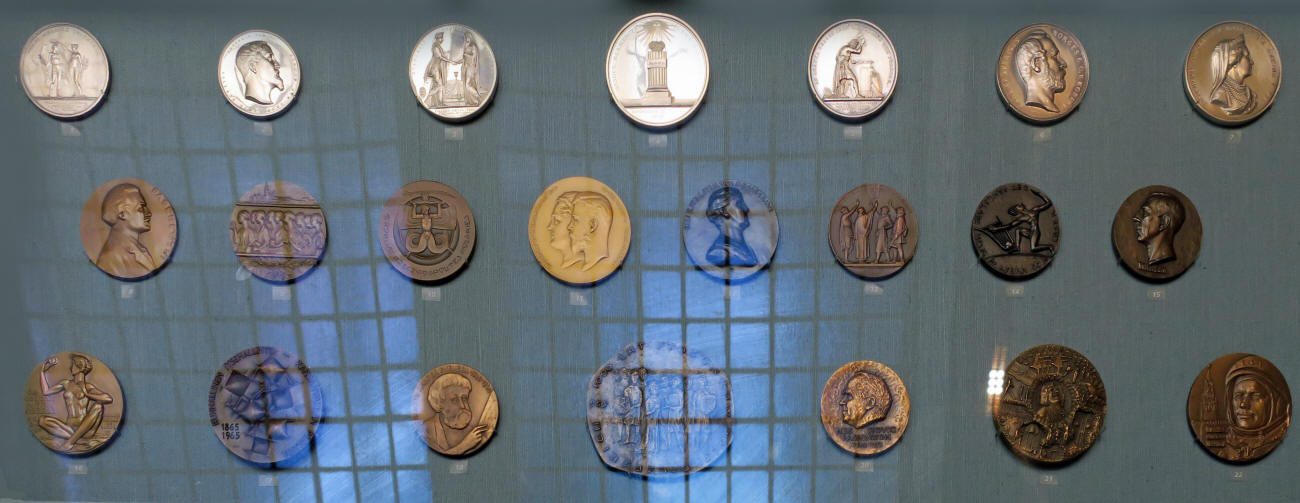

Each coin has a number below it matching the descriptions in the label below
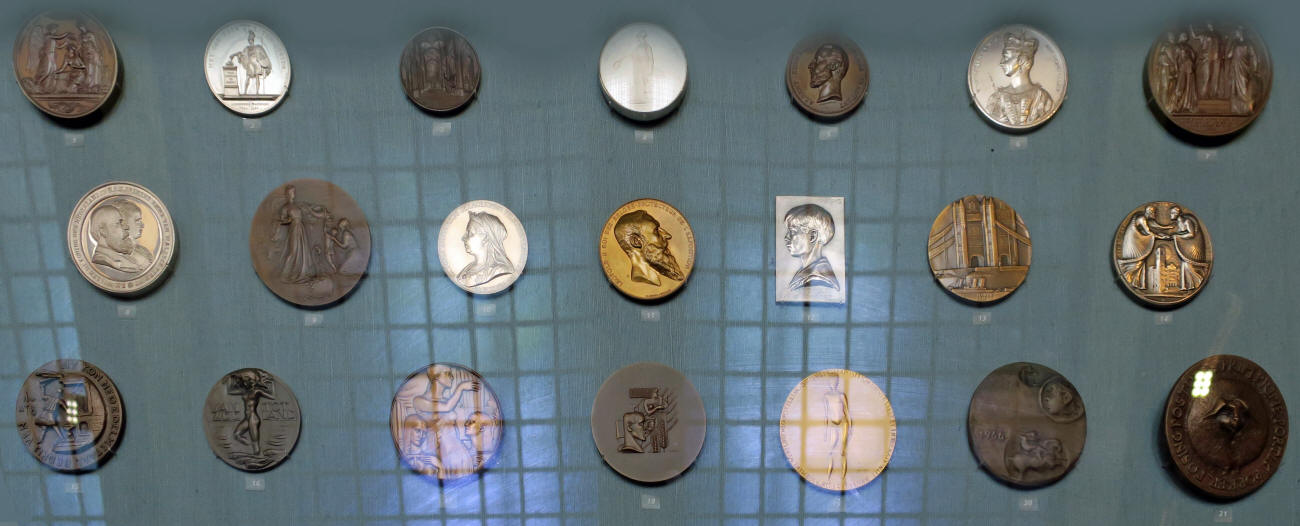

Coins.
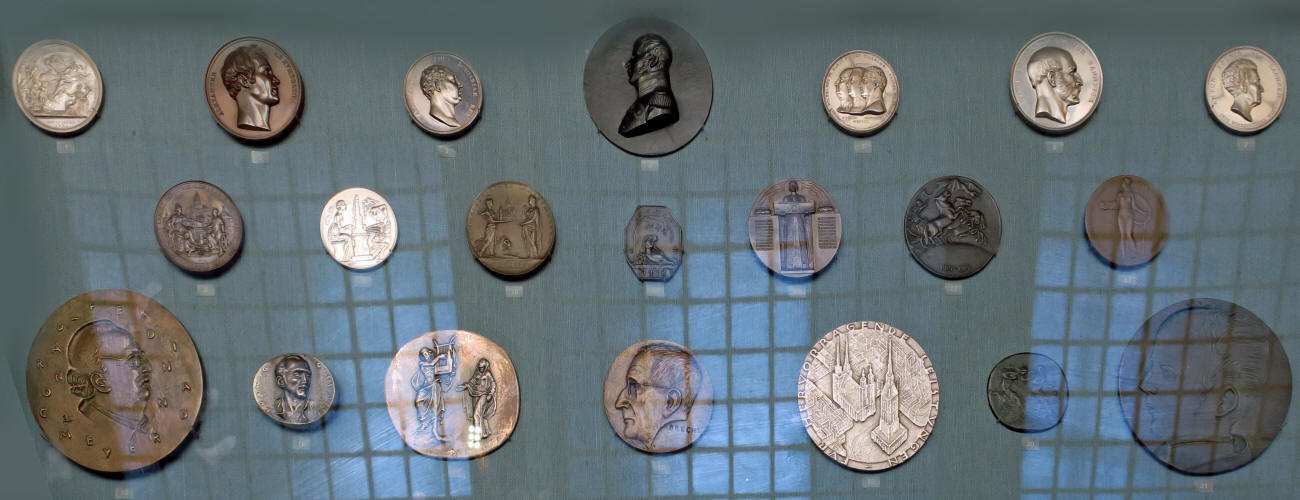

Coins.
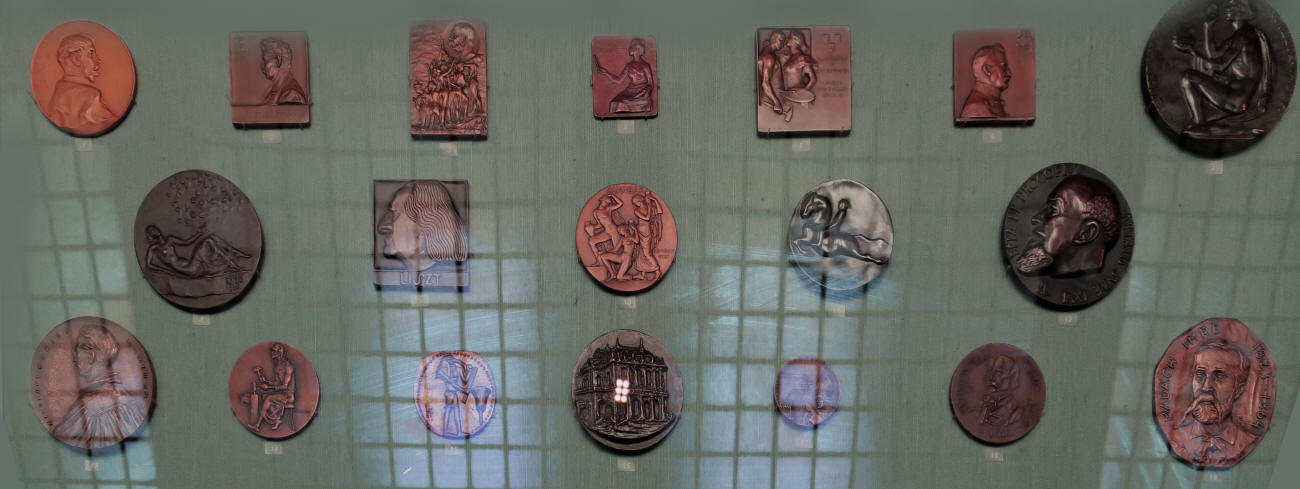

Coins.
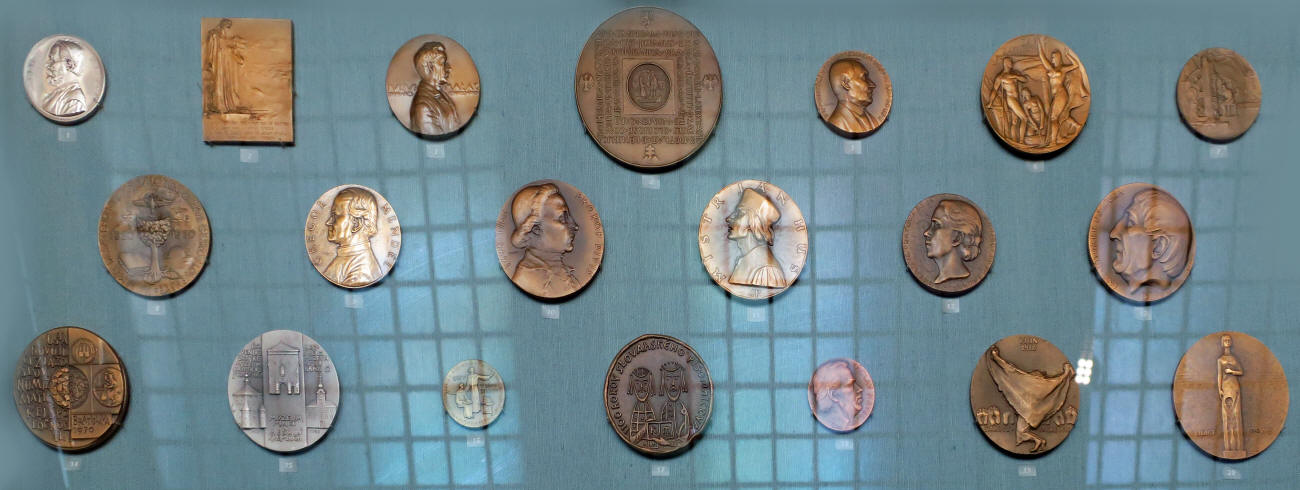

Coins.
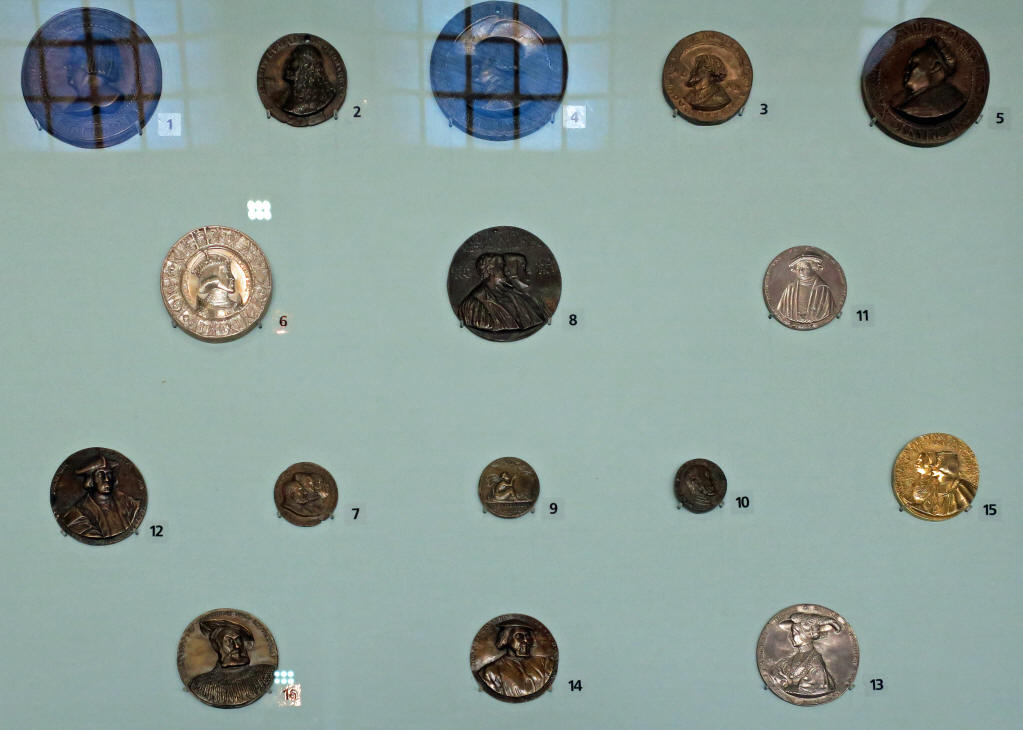
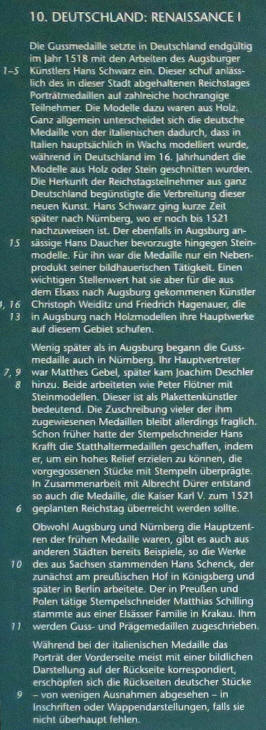
On the wall, there were two classy necklaces, each with a broach.
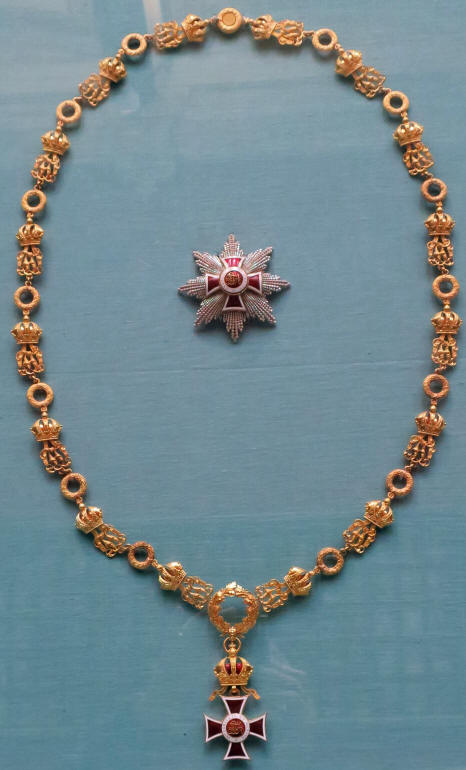
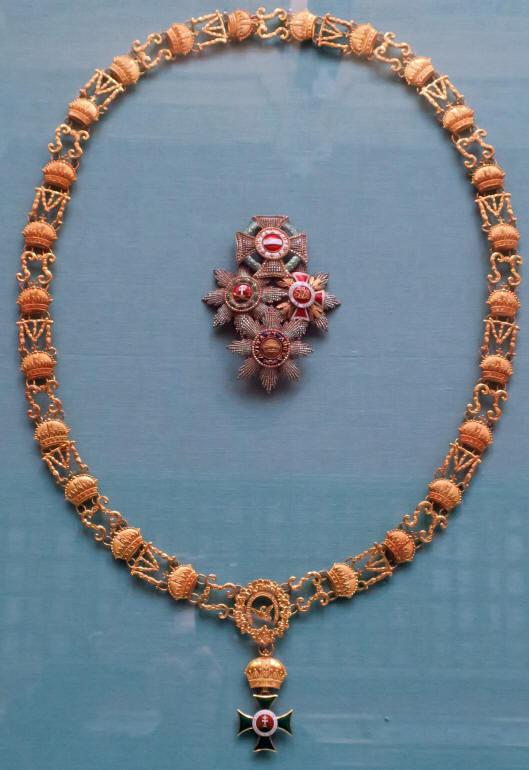
Back to coins.
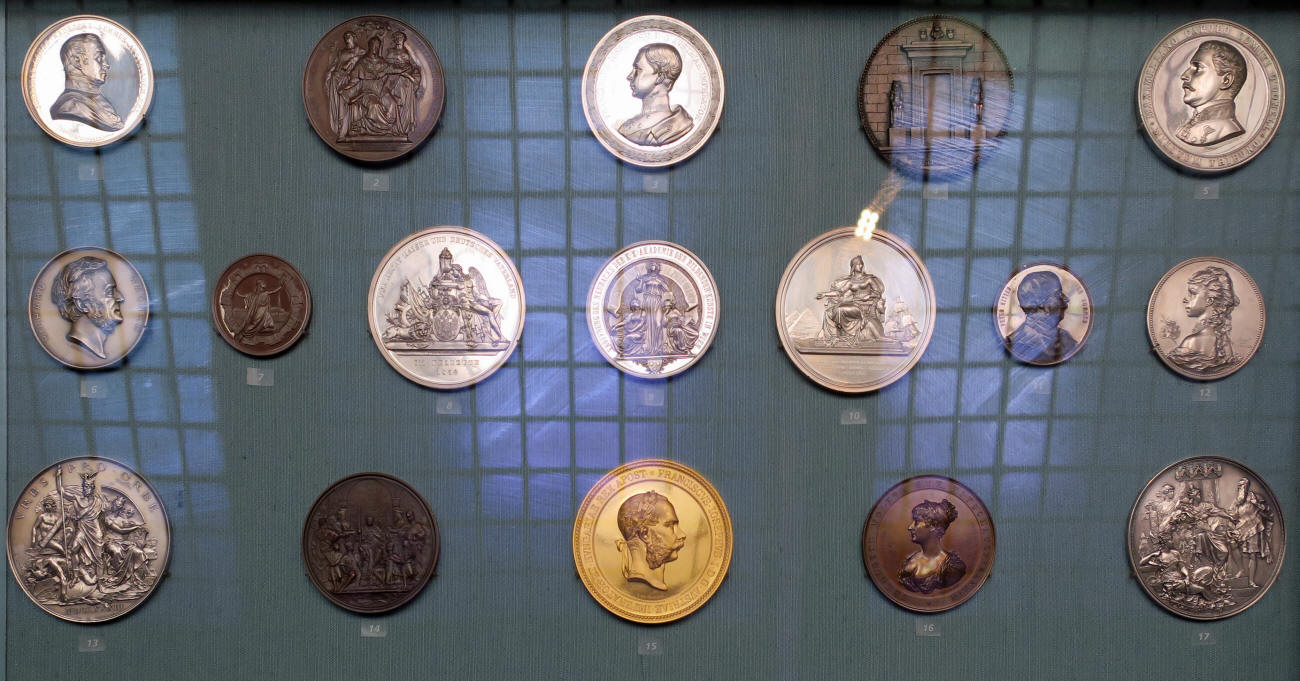

Coins labeled "Modern Austrian II".

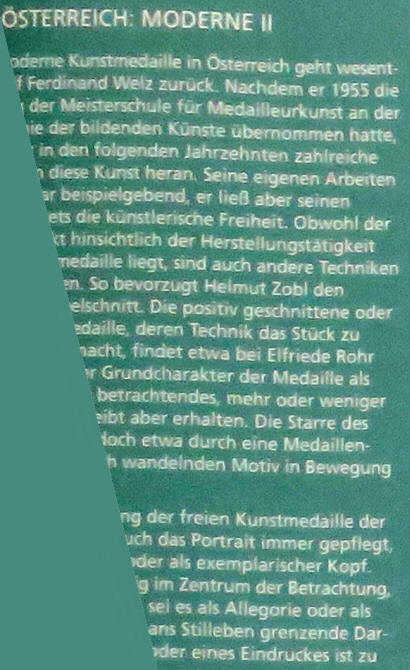
This is the view half way down Gallery (Saal) I. You can see the coins nicely laid out in the cases on the left and right sides and in the center aisle. Down at the end (enlargement right), you see the entrance to Saal II and beyond that to Saal III.
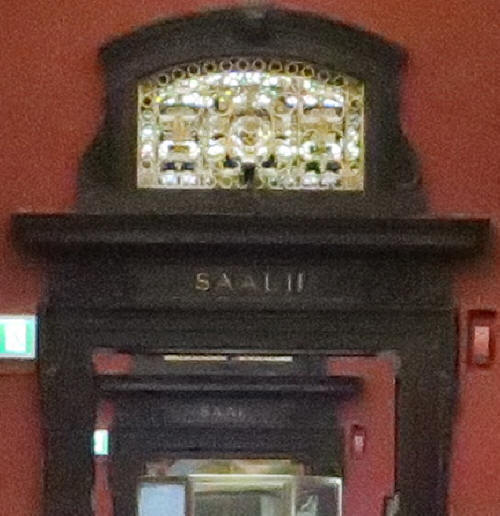
You can see the necklaces on the wall on the right (below left). At the end of Saal I there is a large gold medallion in a case with coins (below).
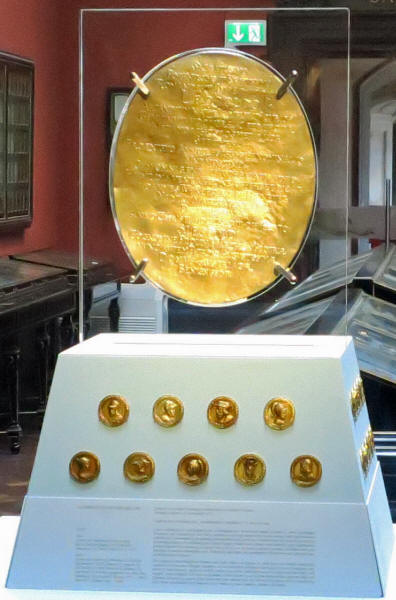
I got a good shot of both sides of it. It is about Leopold I and in Latin (left) and covered with people's portraits on the other side (right).
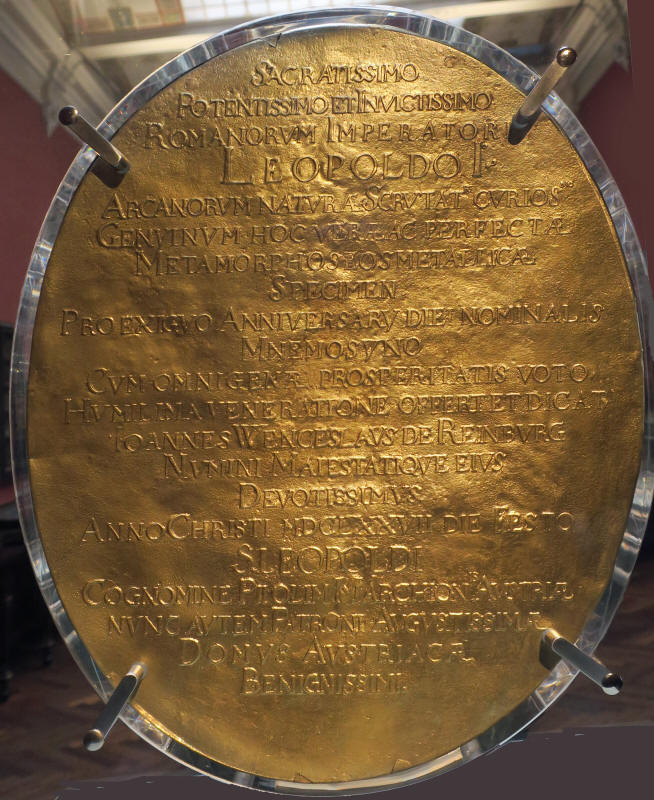
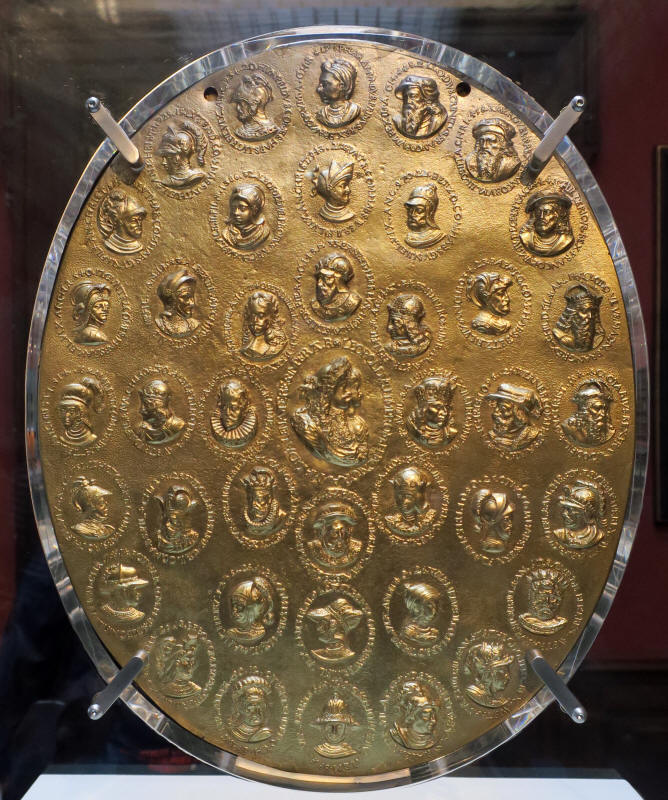
Here is an enlargement of the center of it showing Leopold I and his wife dead center.
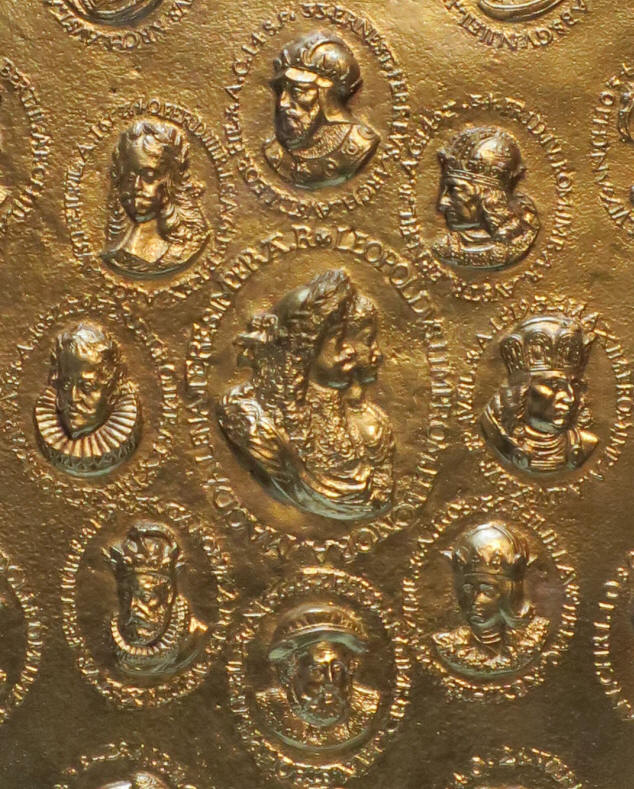
I am now in Gallery II where there was an array of Alchemist's medallions of French kings labeled only in German.
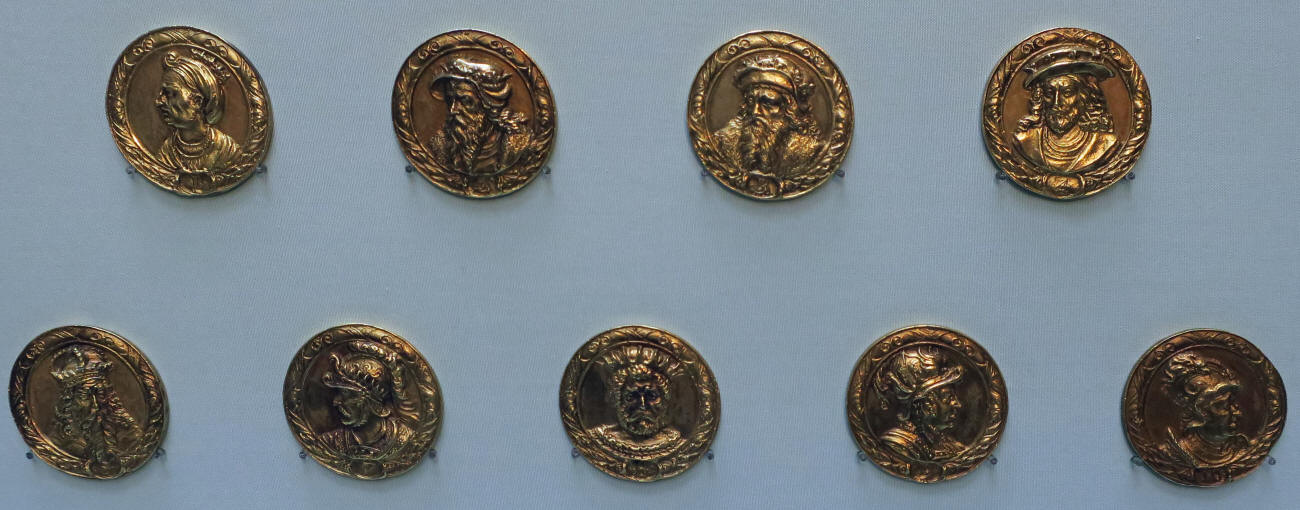

More alchemist's medallions, these with members of the House of Hapsburgs.
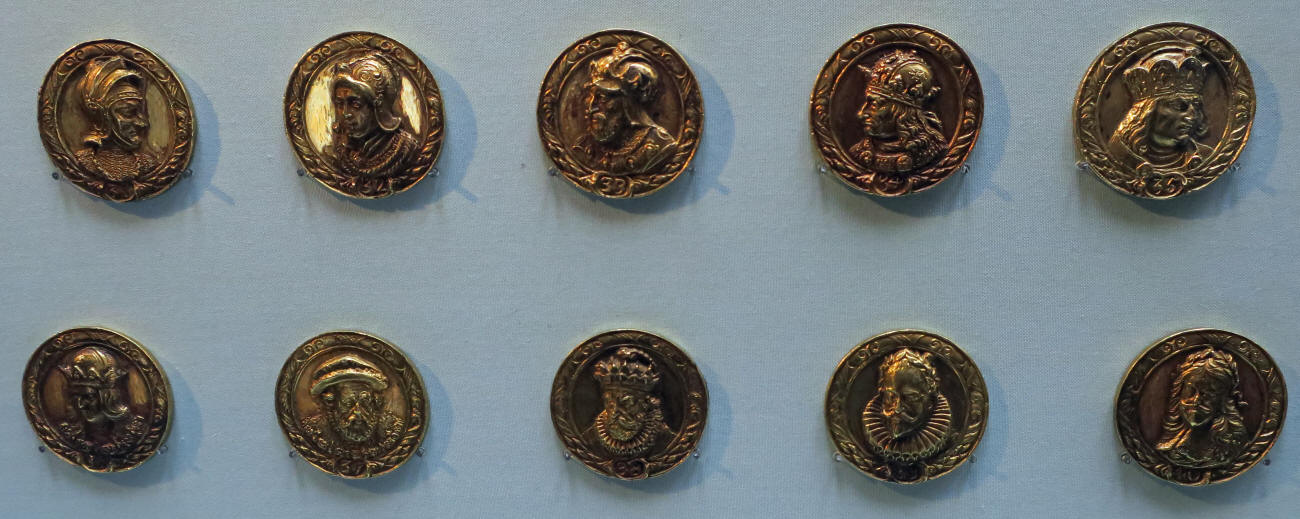

And there were more.
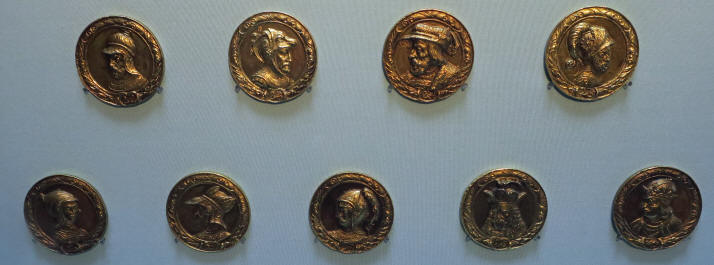
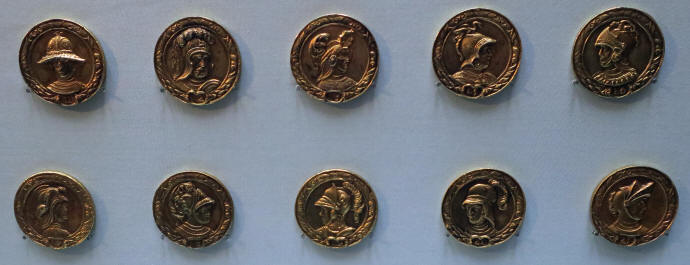


Now back to more coins.
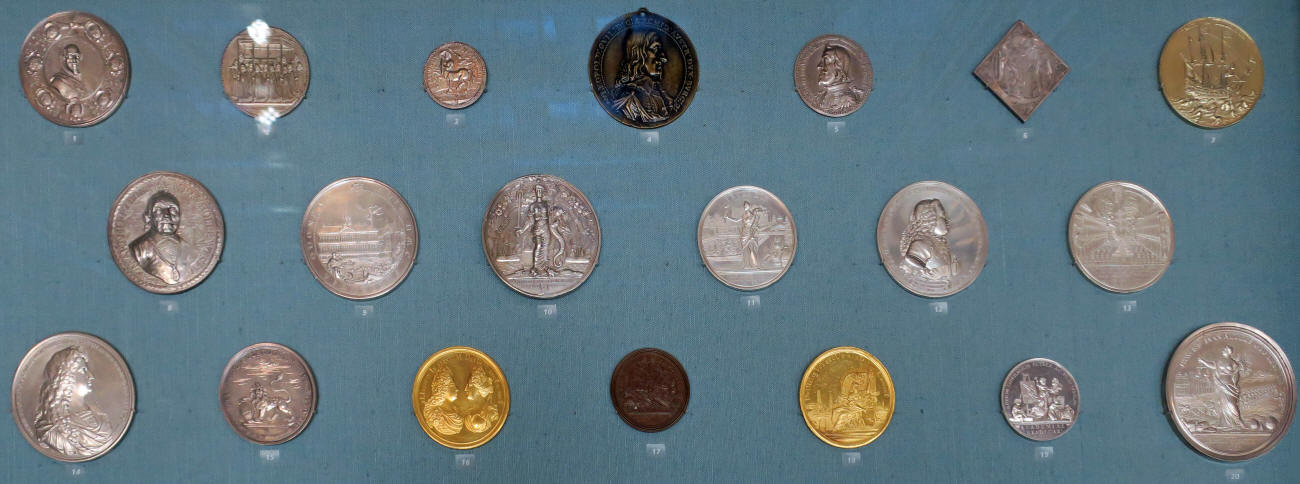

Coins.
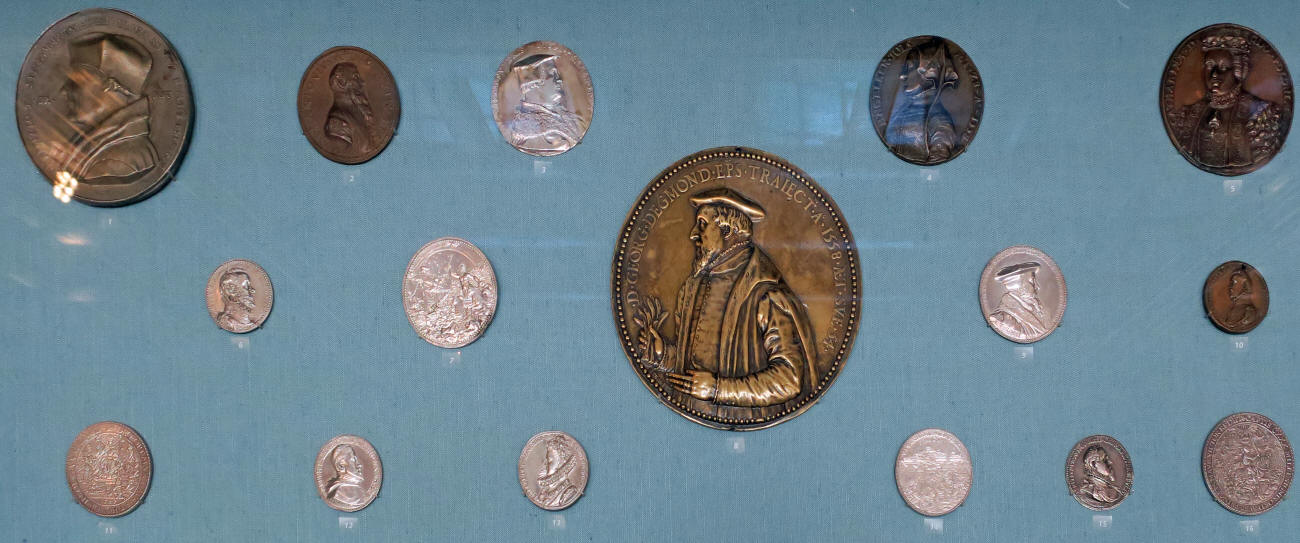

Coins.
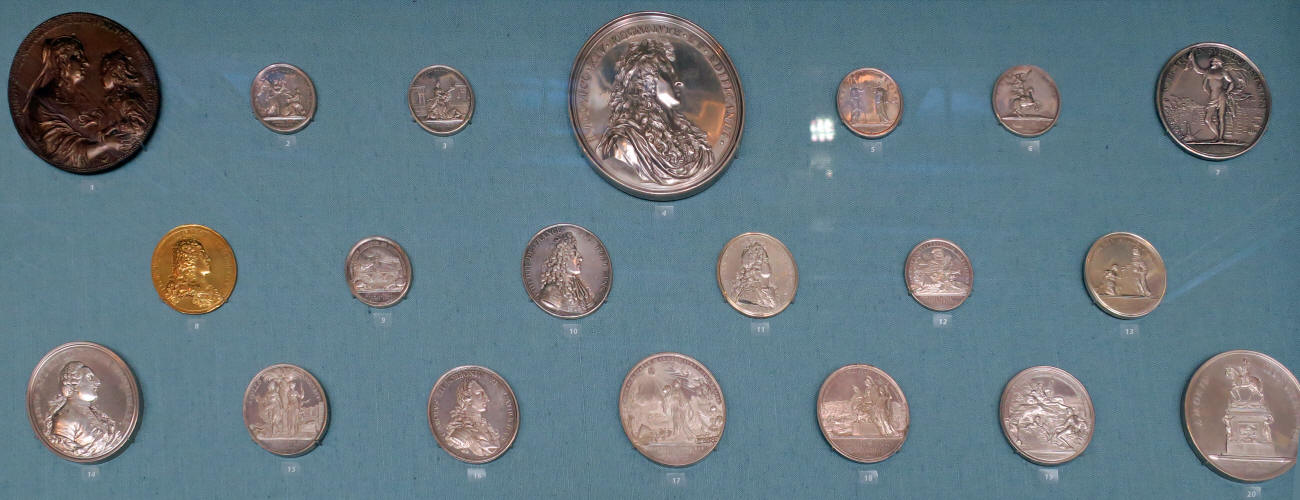

Coins.
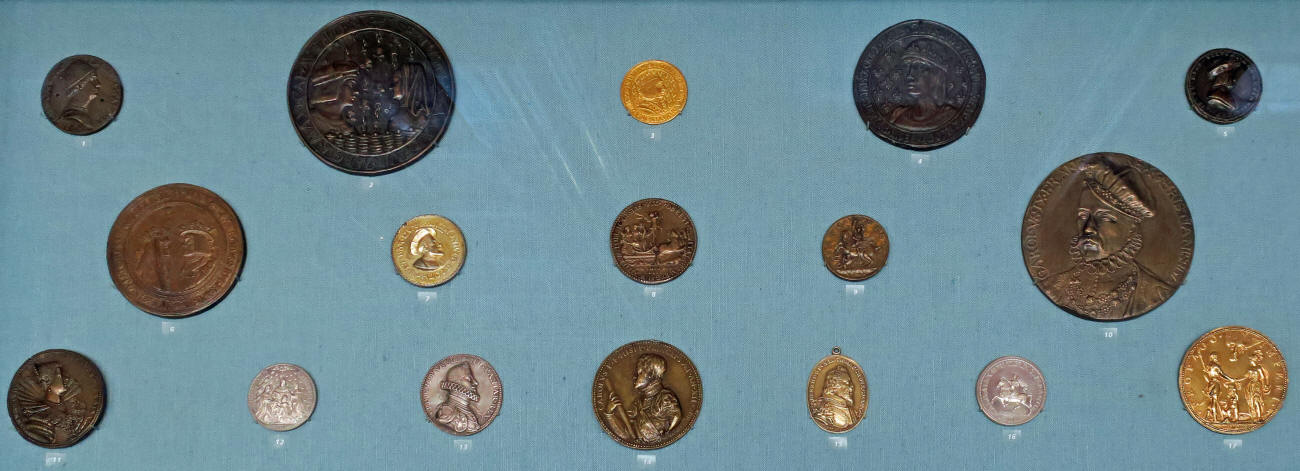

Here is the view looking back. I didn't see them when I was there, but you can see that there are currency notes displayed in the lighting fixtures above your head. Notice in the photo, the series of small portraitures on the walls above the coin displays to the right. There are paper currency notes on left wall.
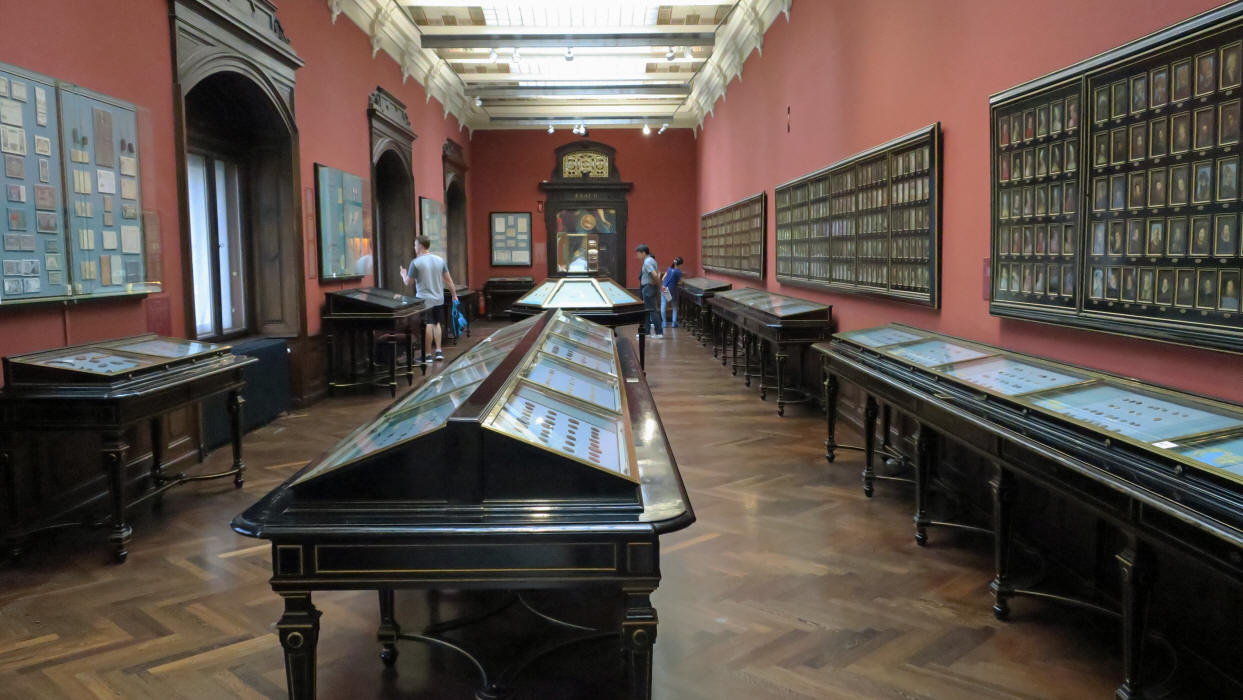
Below is an example of one of them. The pink sign to their left, translated from German, says ...
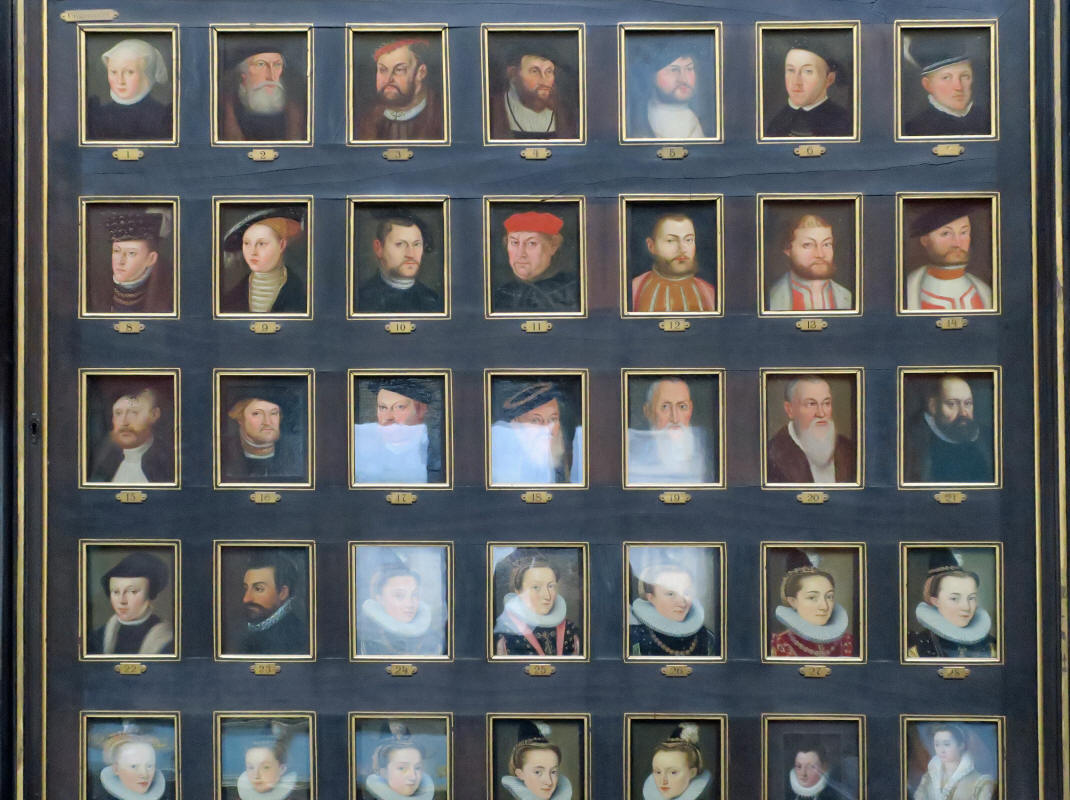
... "Plate C: Unknown German portraits, almost all originating from the original collection of Archduke Ferdinand, only a few and later acquisitions". Again more coins. Look carefully at some of these.
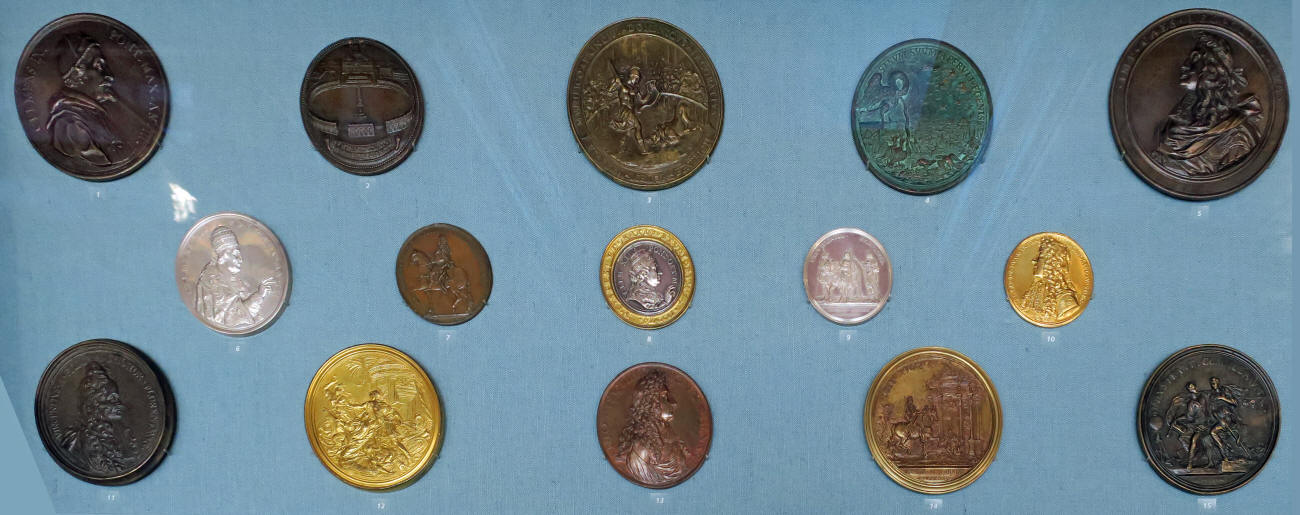

Coins.
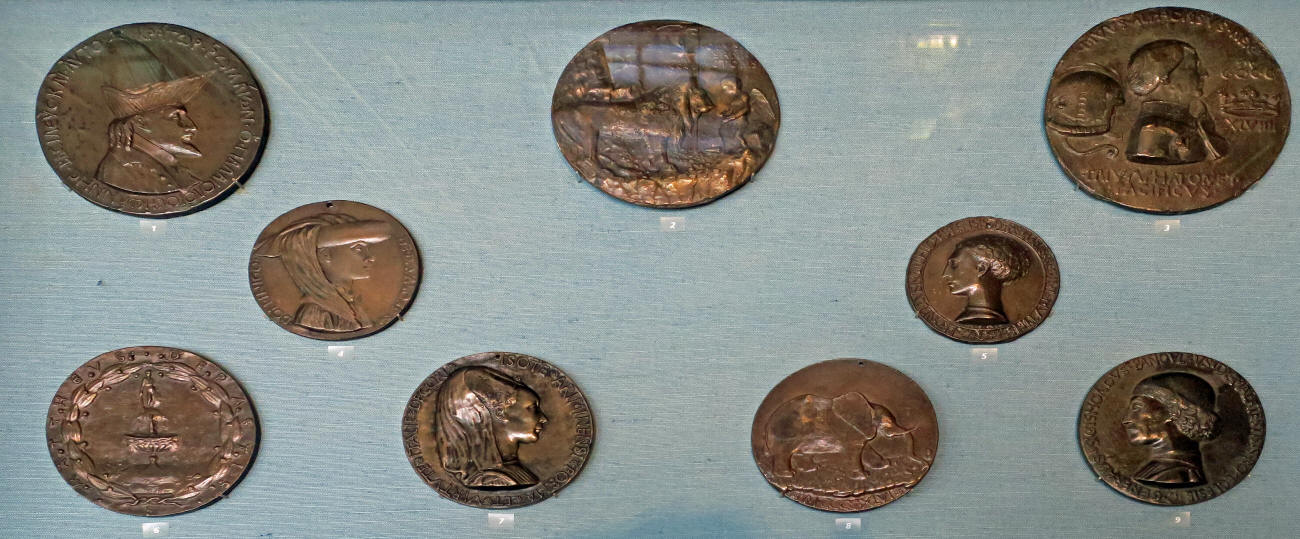

Coins.
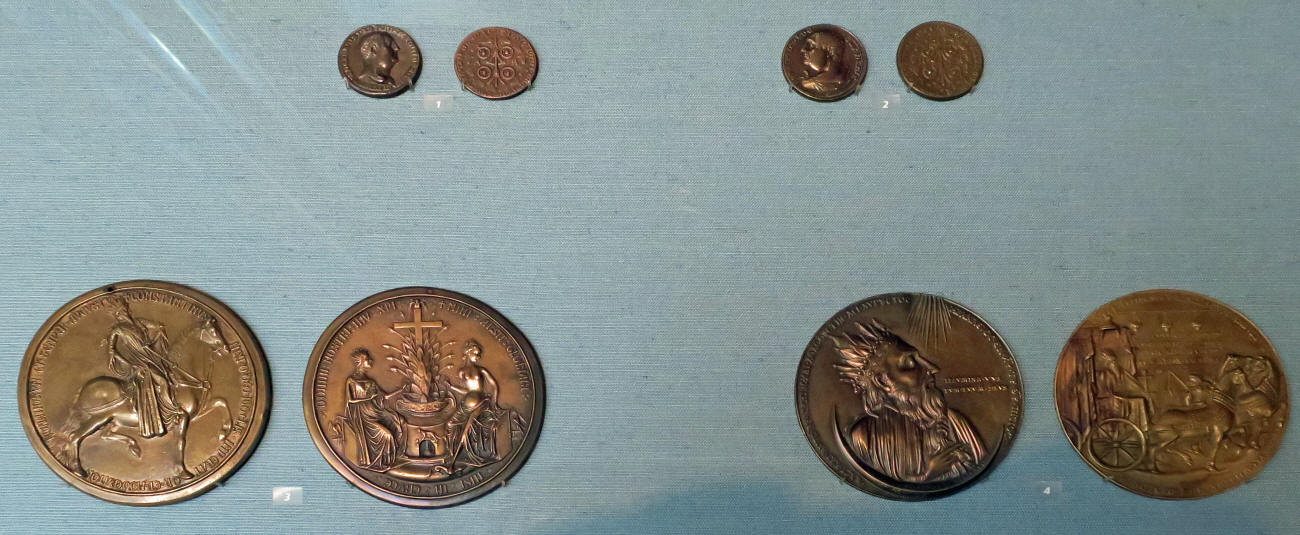

Coins; the big one in the center is Kaiser Leopold I.
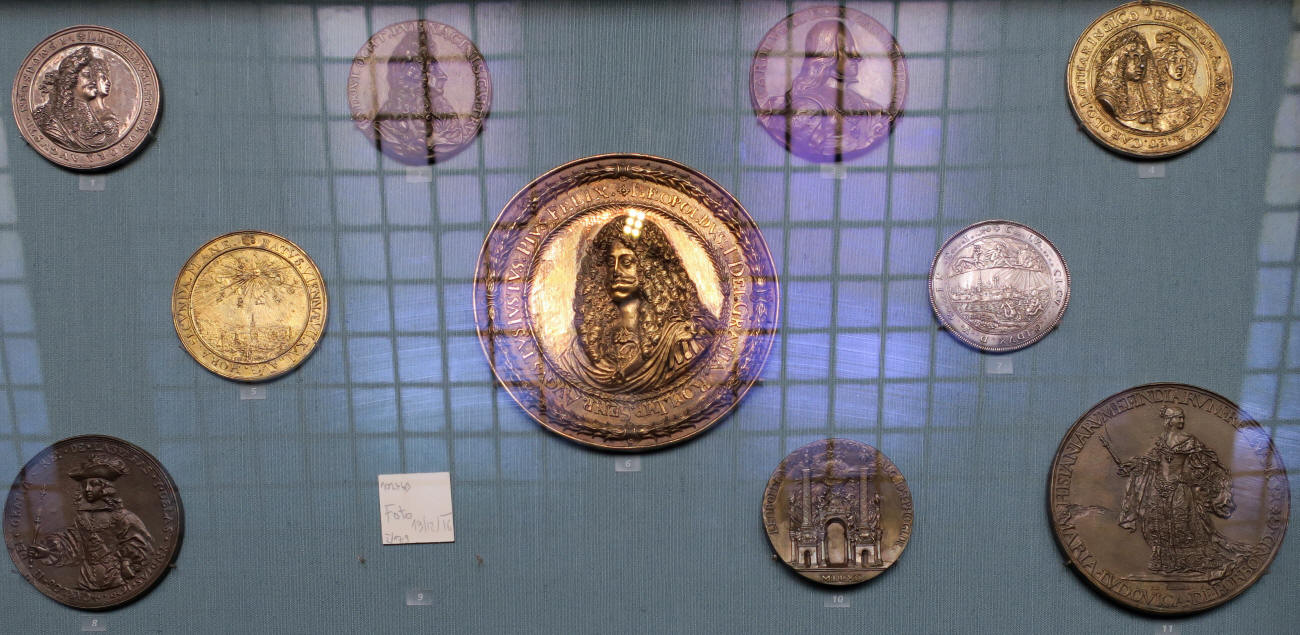

These are labeled "Early Classic" from southern Italy, Greece and Turkey.
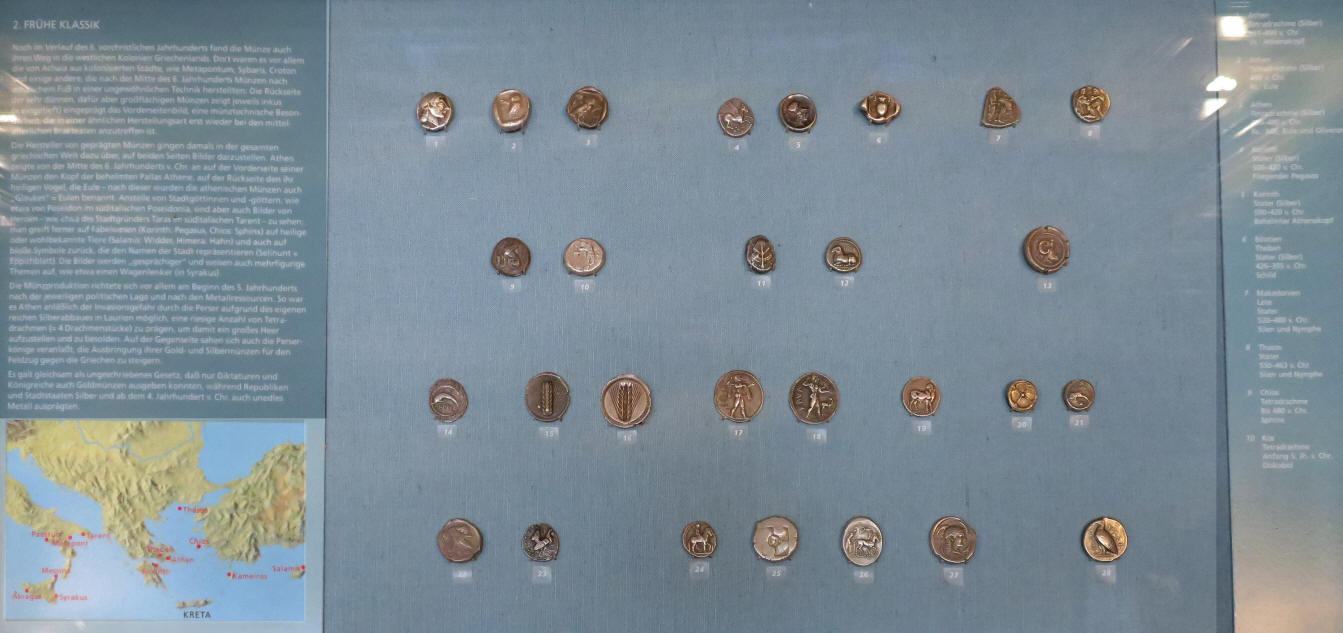
I now approach the end of the Gallery II to enter Gallery III.
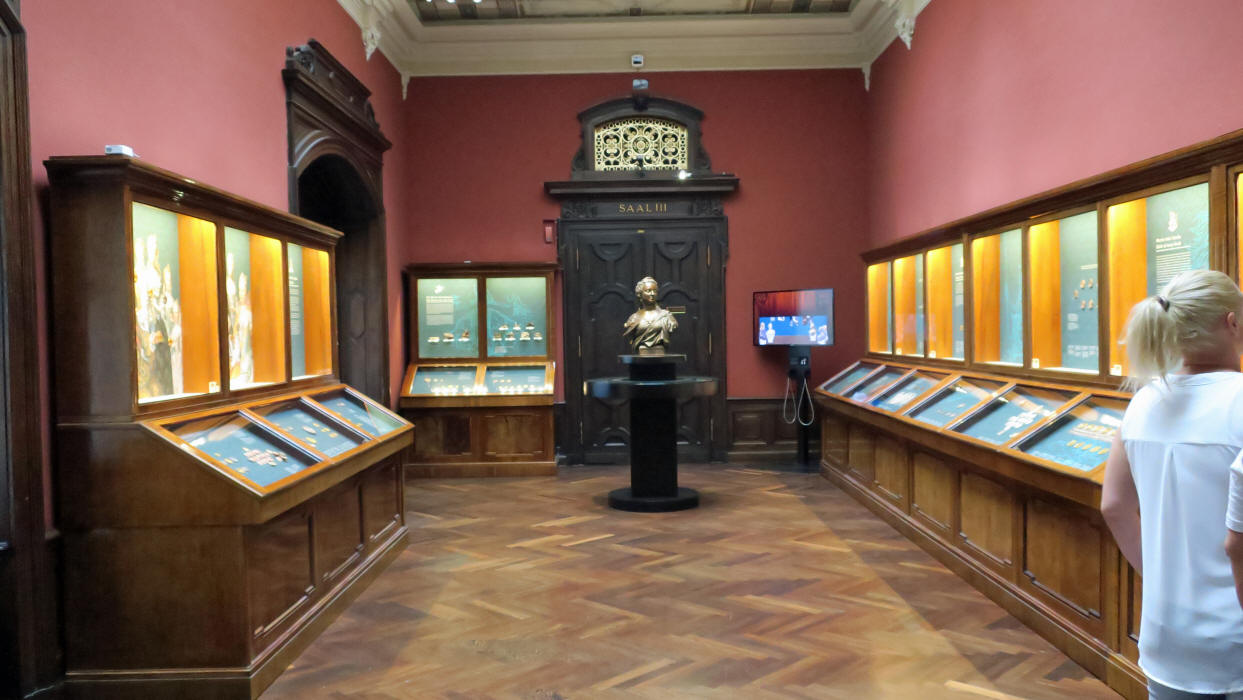
From above, you can see this very well done bust of Maria Theresa (below left). Below right is a medallion of the Archbishop of Salzburg, Sigismund III von Schrattenbach (1753-71) in the weight of 50 ducats.
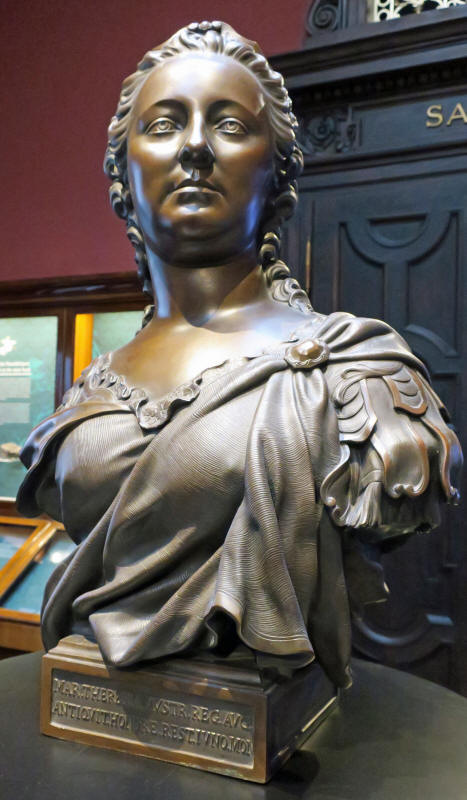
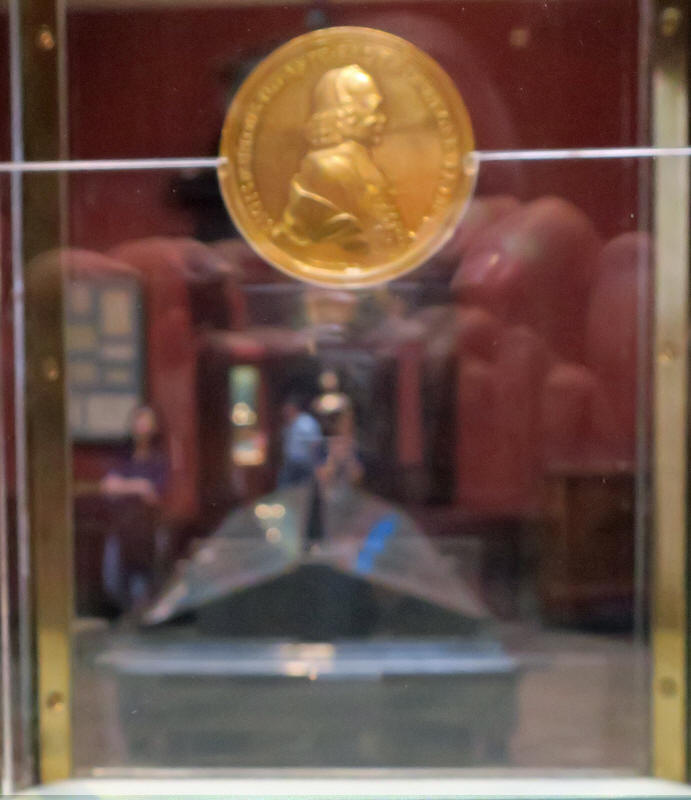
Coins.
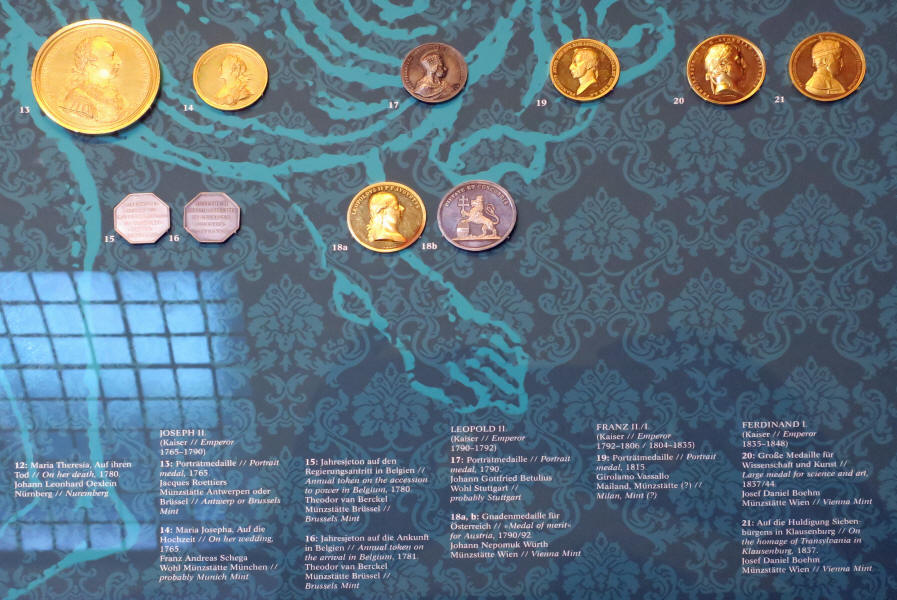
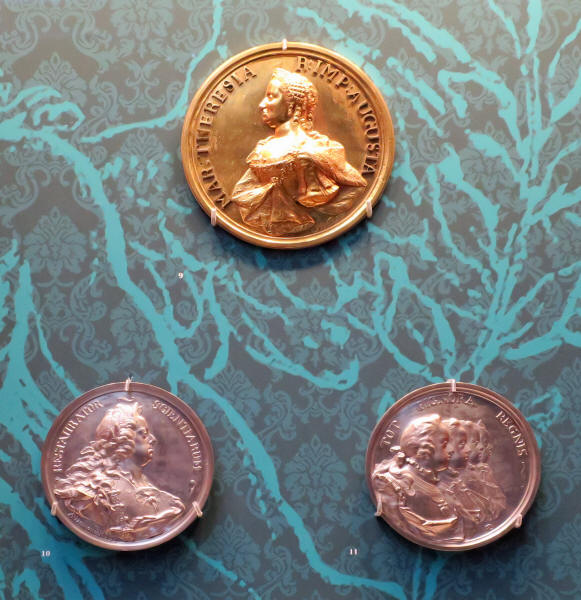
Coins and merit decorations labeled "In the Imperial Tradition".
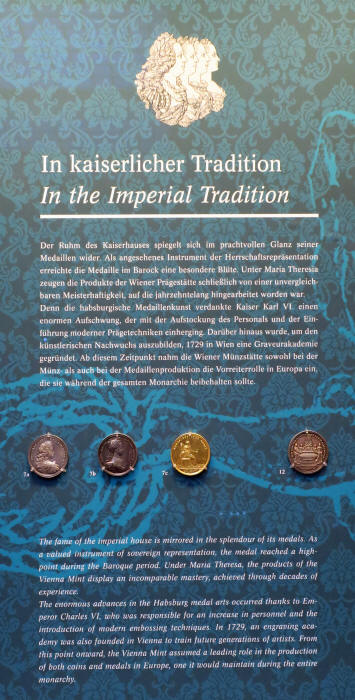
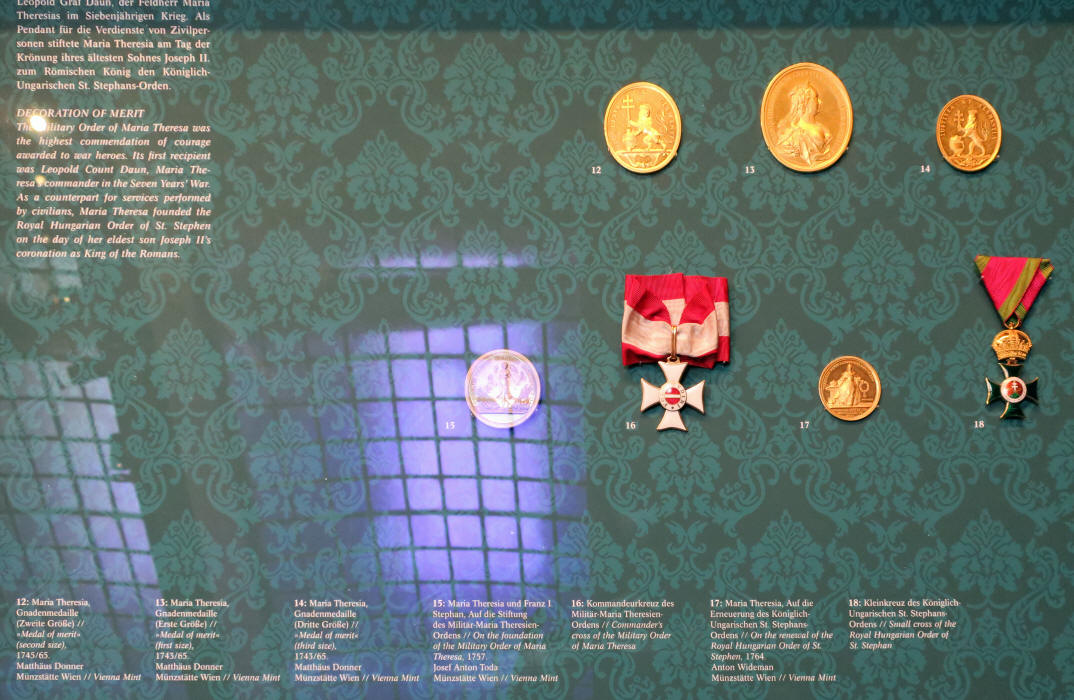
These are labeled the "Struggle for Succession".
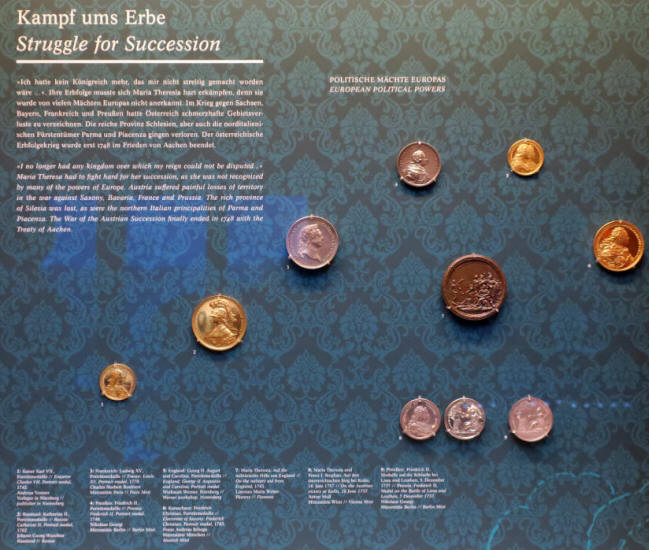
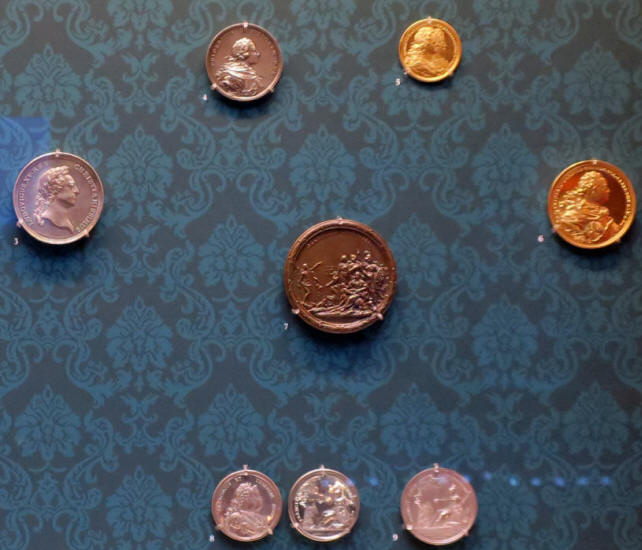
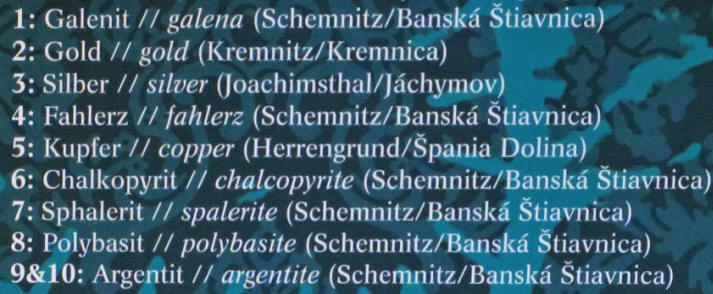
They also had these large chunks of minerals on display. L-R from the top row are 2) Gold, 3) Silver, 5) Copper; center row 9) & 10) Argentite, 8) Polybasit; bottom row 7) Sphalerit, 1) Galenite, 4) Tetrahedrite, and 6) Chalkopyrit. Strange ordering of the numbers, I thought.

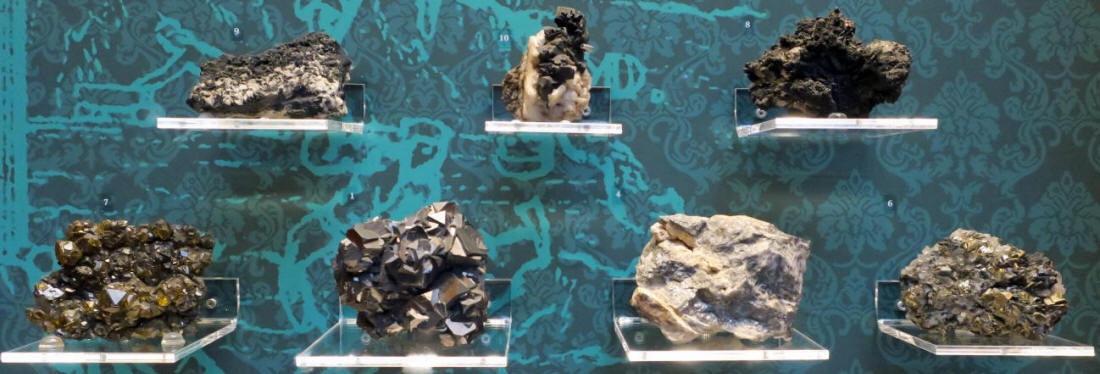
There were more weights and other items (left) as well as a display of yens, dollars and euros with a lineage of coins (right).
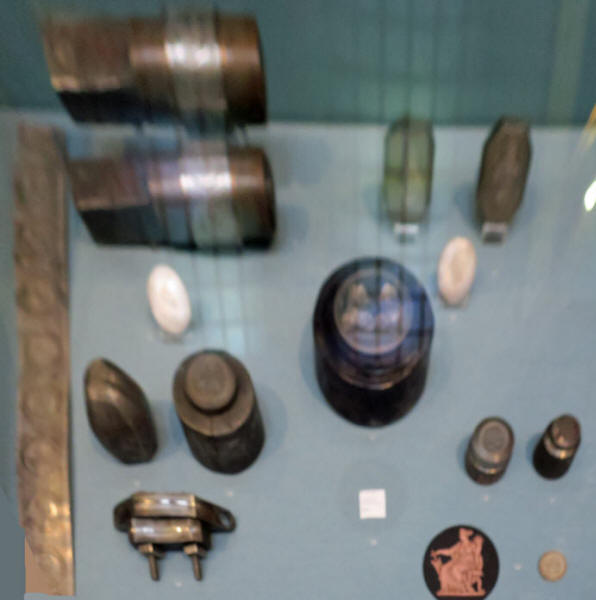
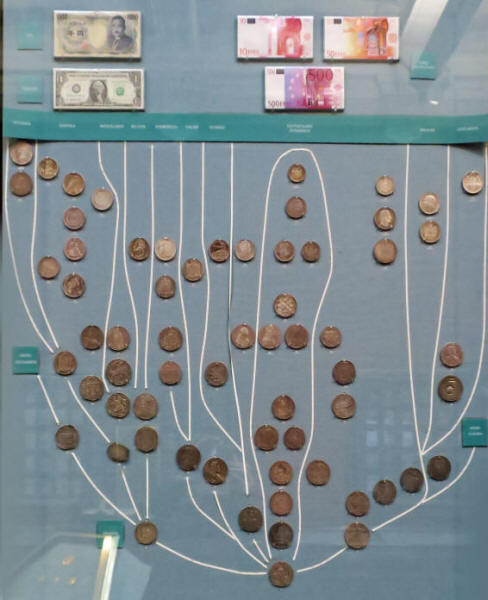
There are more displays showing various means of paper currency as well as some beads.
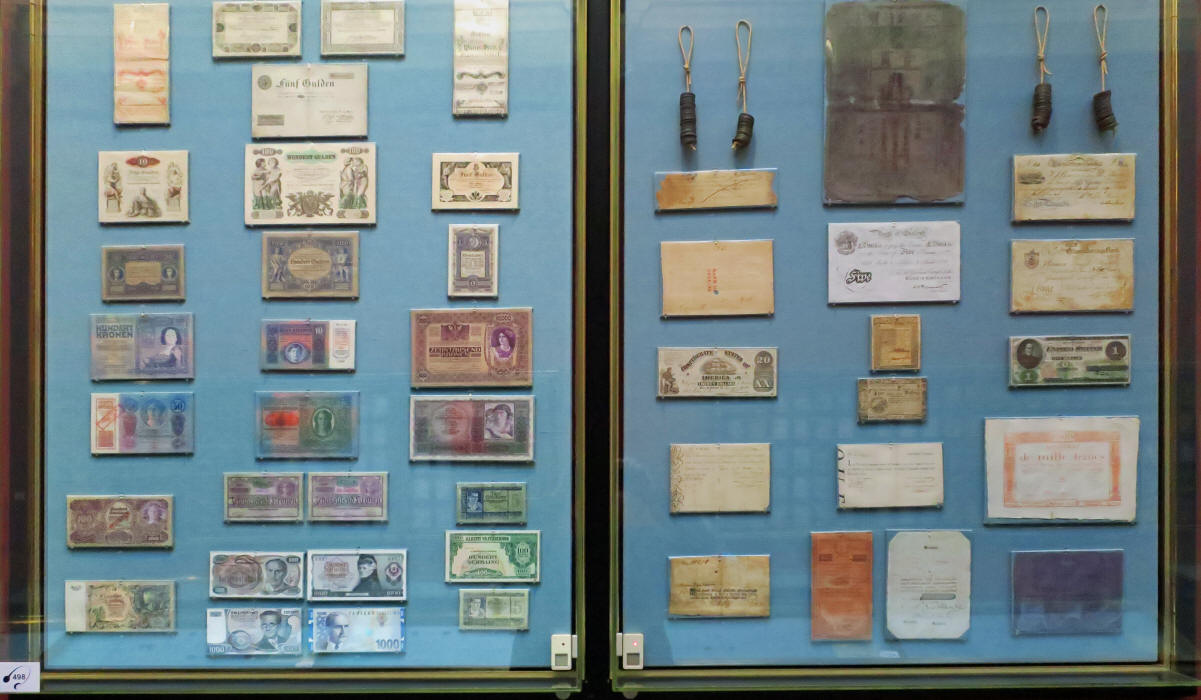
They showed other methods of currency representations as shown below left. I found this stock photo of a coin I didn't see (below right). It is of Byzantine Justinian I (527-65 BC) in Room II Showcase 12.
They showed this display of small medallions and grace medallions.
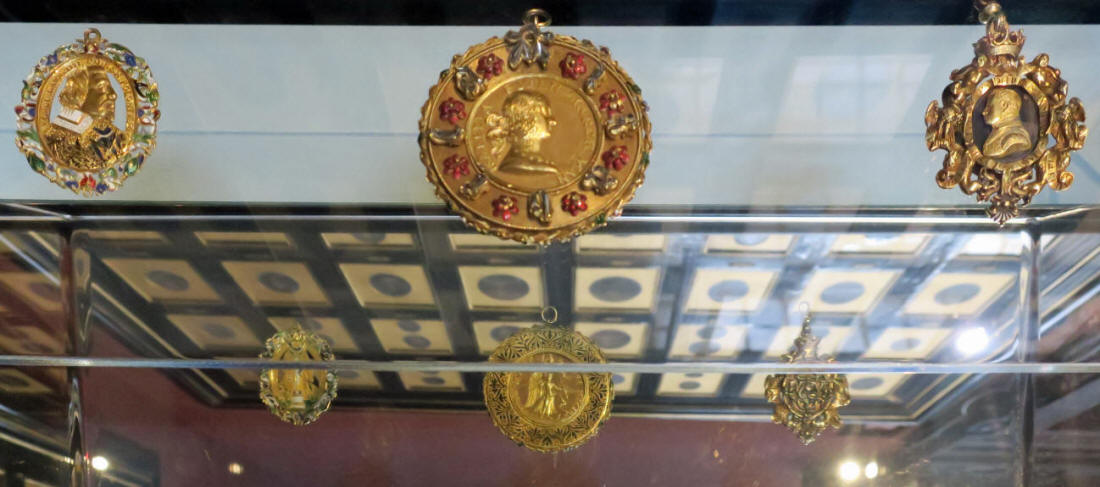

I was finally finished and got these shots of this silver artistic plaque and this poster.
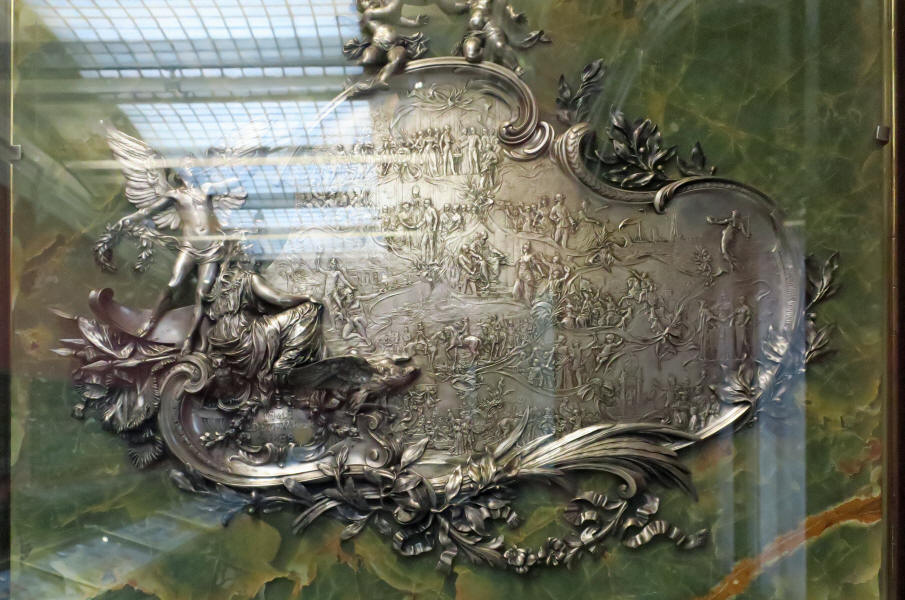
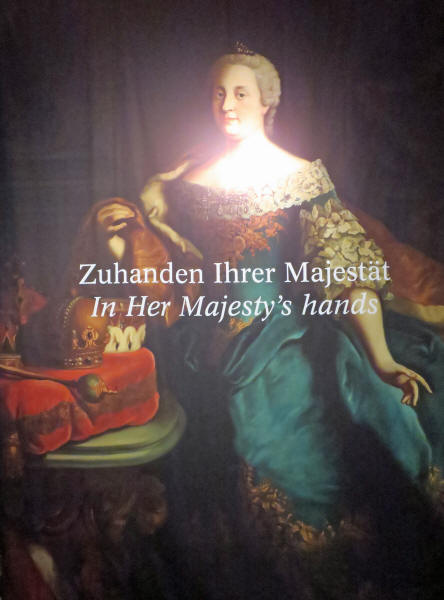
It was time to go, so I walked down the beautiful staircases to Floor 1. Remember Floor I is one flight up from the ground floor (Floor 0). I had to PhotoStitch this staircase shot (below right) with this huge mural on the ceiling.
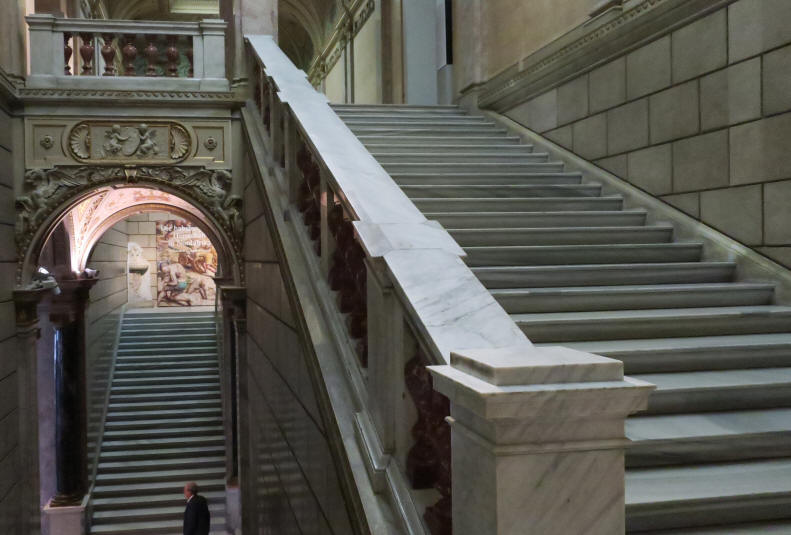
If you flip the picture (below left) and then crop and distort the mural (right) you can turn it into a painting.
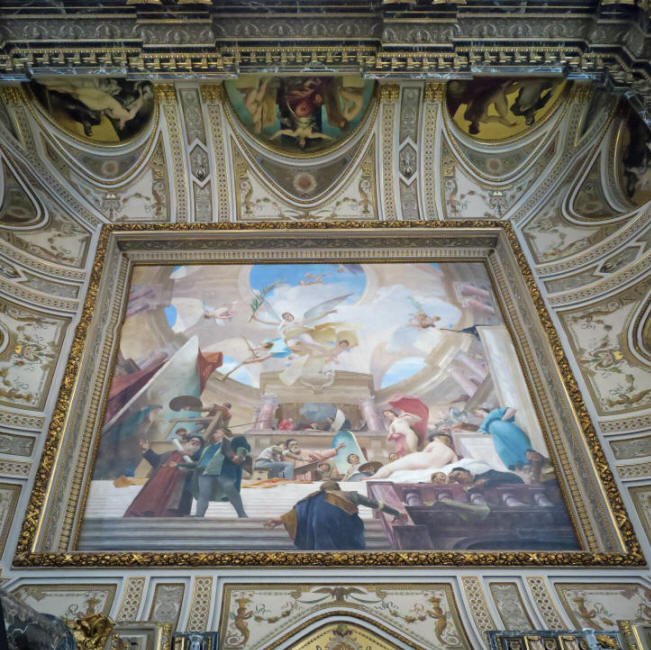

After all this, with enlargement, you can see that the centerpiece of the mural is of a teacher instructing his pupil in the painting of nudes, while scholars are discussing documents above them (my photo below).
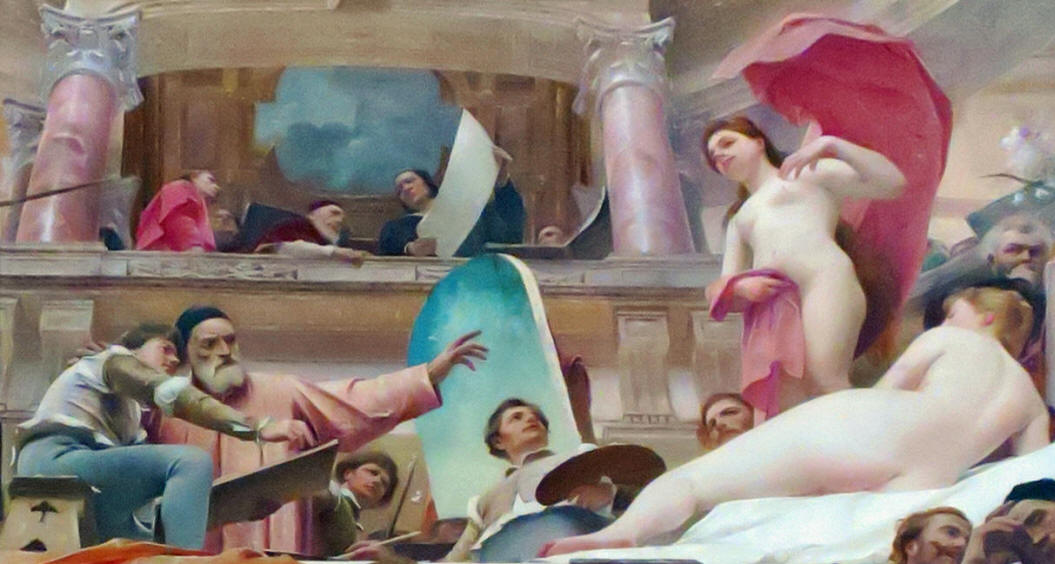
ART Gallery
As you can see in their map (below), the right side (purple, Galleries I-VII and Rooms 1-13) of Floor 1 are the Italian, Spanish and French paintings and on the left (pink, Galleries IX-XV and Rooms 14-24) are the Dutch, Flemish and German. Room VIII (blue) is for special exhibits and the green is the cafe.
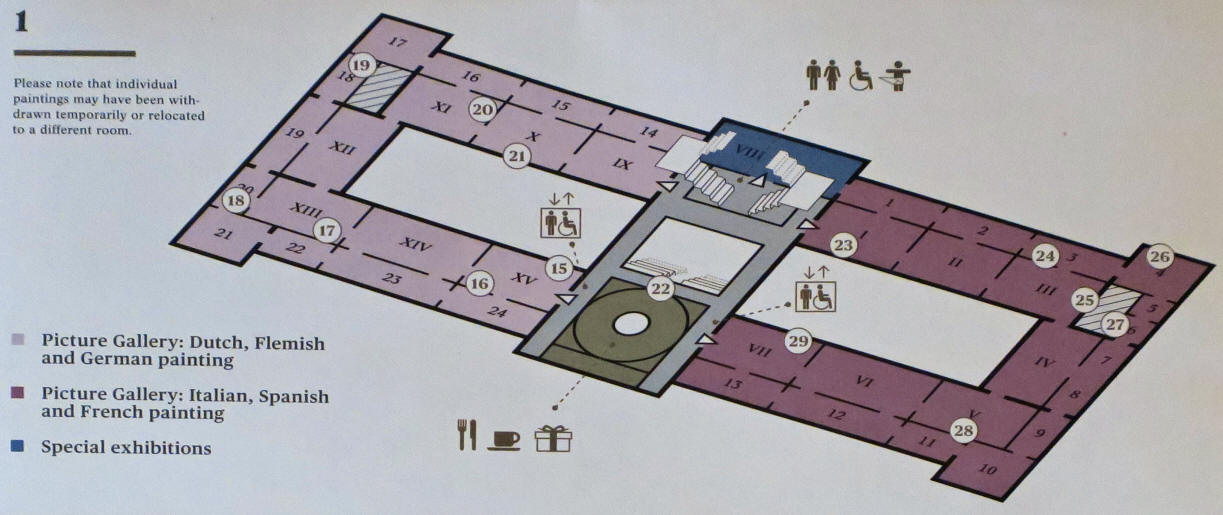
Below the map, they show examples of special art work and where they are located by number. There are paintings by such famous artists as D�rer, Holbein, Rubens, Vermeer, van Dyck, Bruegel, Klimt, Titian, Bellini, Caravaggio and Bellotto.
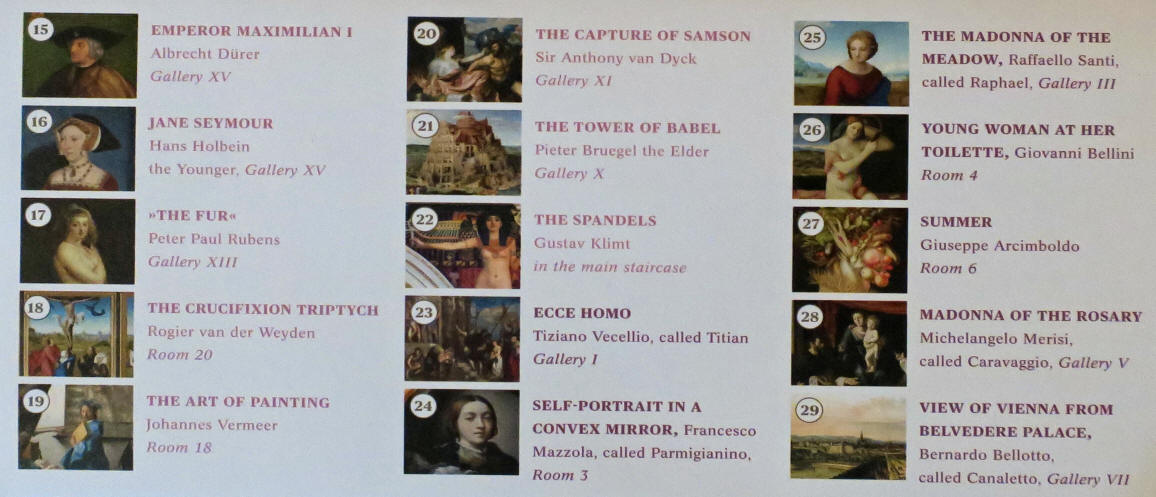
This is the map from their website.
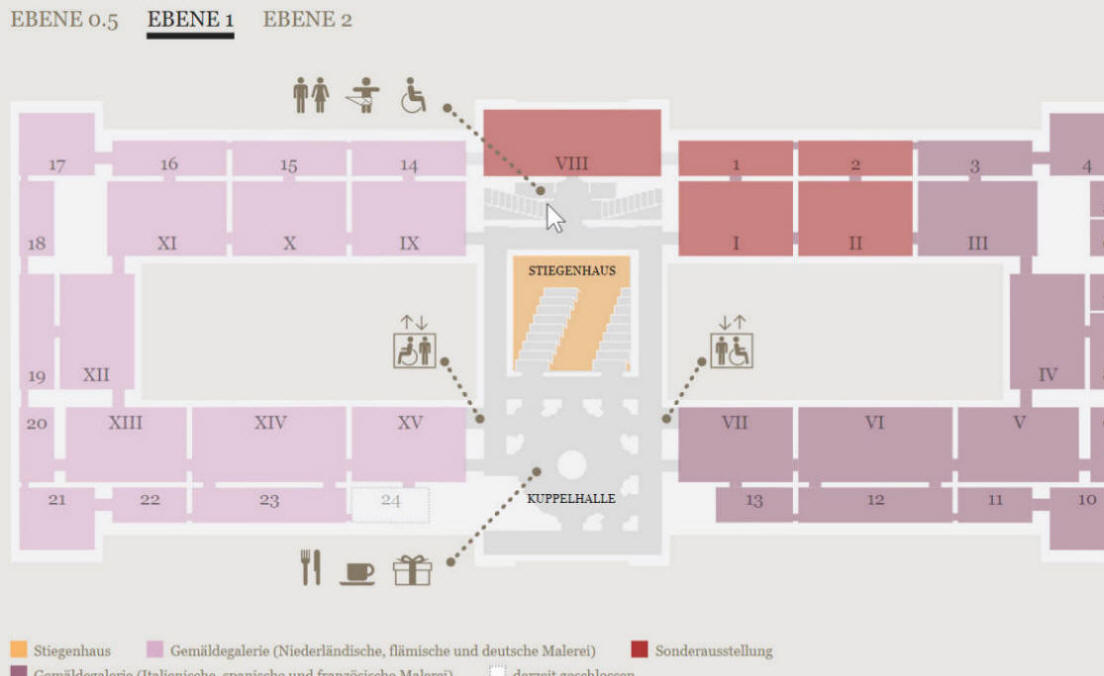

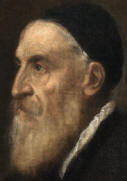 Their map labels Gallery I-II, VIII and Rooms 1-2 as special exhibitions. I decided to start on the right side and see the
Italian, Spanish & French
Renaissance art in Galleries I-VII as well as Rooms 1-13. The
first room I entered was Gallery I (below left) with a section devoted to
Tiziano Veccellio (1490-1576)
known as Titian. To the right is his self portrait which is in the Prado
Museum in Spain. He is considered a founder of the Venetian School of
Italian Renaissance painting. This museum has the second-largest
collection of his works. I enlarged the sign (the English side) so you can
read it.
Their map labels Gallery I-II, VIII and Rooms 1-2 as special exhibitions. I decided to start on the right side and see the
Italian, Spanish & French
Renaissance art in Galleries I-VII as well as Rooms 1-13. The
first room I entered was Gallery I (below left) with a section devoted to
Tiziano Veccellio (1490-1576)
known as Titian. To the right is his self portrait which is in the Prado
Museum in Spain. He is considered a founder of the Venetian School of
Italian Renaissance painting. This museum has the second-largest
collection of his works. I enlarged the sign (the English side) so you can
read it.
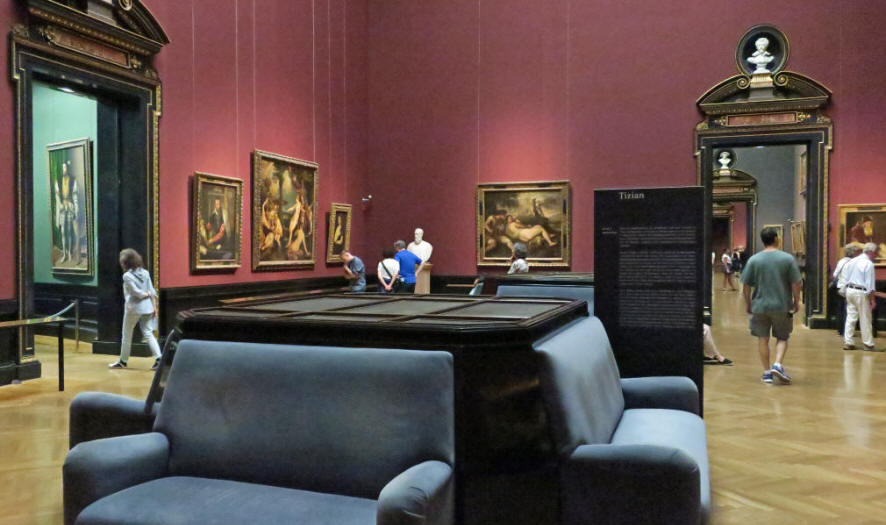
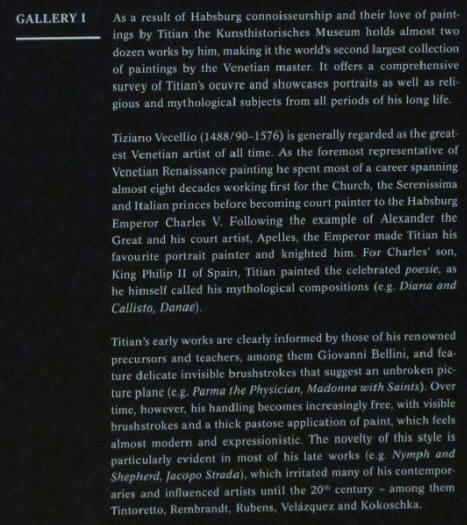
Of his estimated 400 works of art, 300 remain today. He died of the plague in Venice in 1576 and was buried in the Basilica di Santa Maria Gloriosa dei Frari (or the Frari) (below left), located in the Campo dei Frari at the heart of the San Polo district of Venice. I'm sure I have visited it. Much later, the Austrian rulers of Venice commissioned Antonio Canova to sculpt this large monument inside the church (below right).
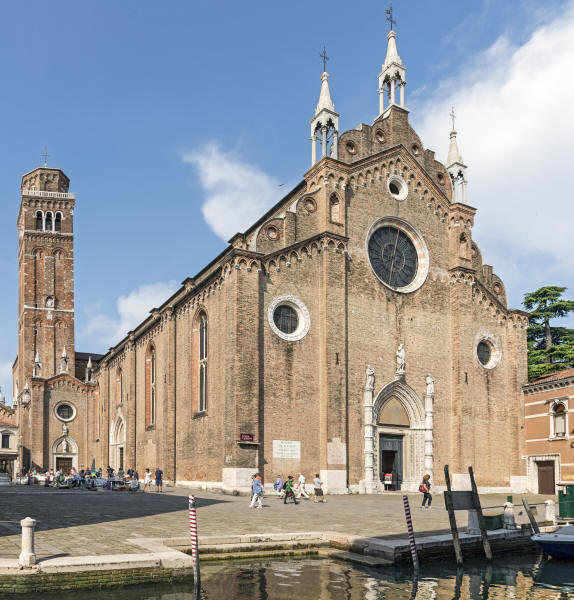
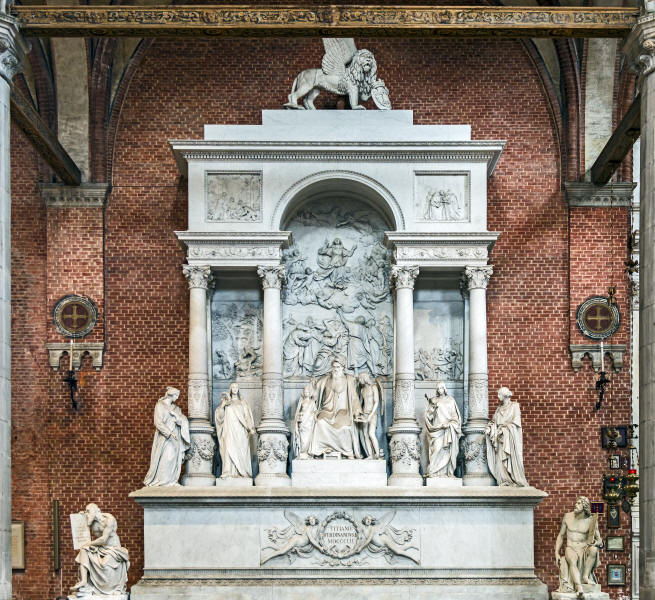
Stock photos above. Just before I entered the room, they had this poster display regarding the "Game of Thrones" which is interesting. It says "Das Gem�lde von Eis und Feuer" or "The Painting of Ice and Fire". I enlarged the section in English below. There was also this beautiful marble piece entitled "Jacob and Rachel at the Well" by Italian sculptor, Democrito Gandolfi (1797-1874) from Bologna (below right).

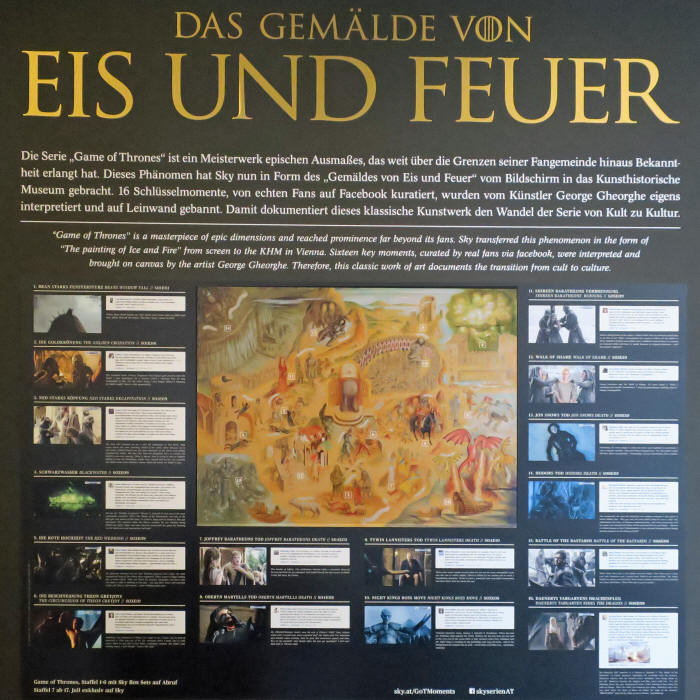
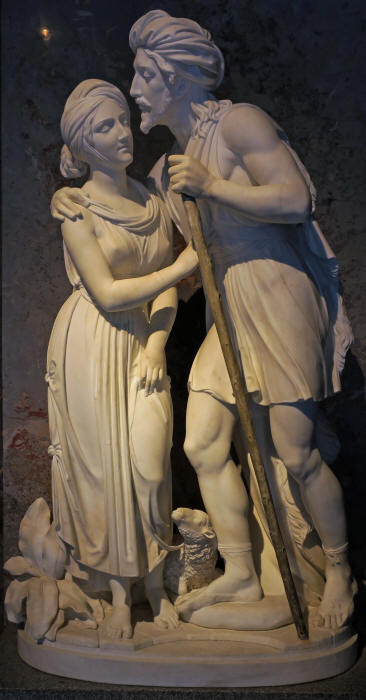
Below left are stock photos of the piece from the left side and the right side, with better lighting. The enlargement of my shot (below right) shows the fine detail in the work.
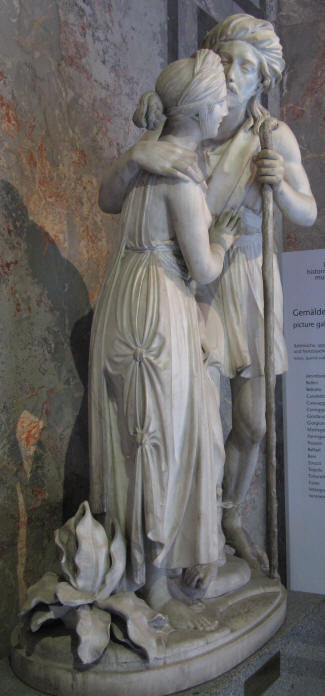
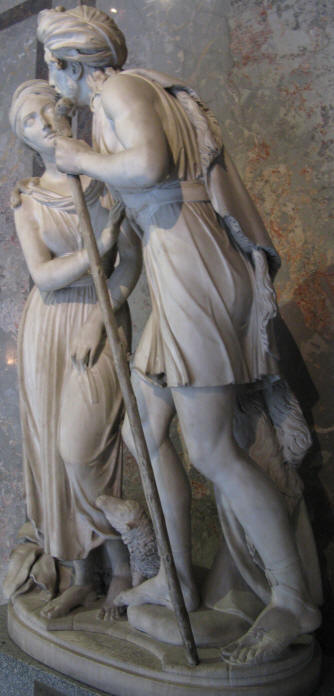
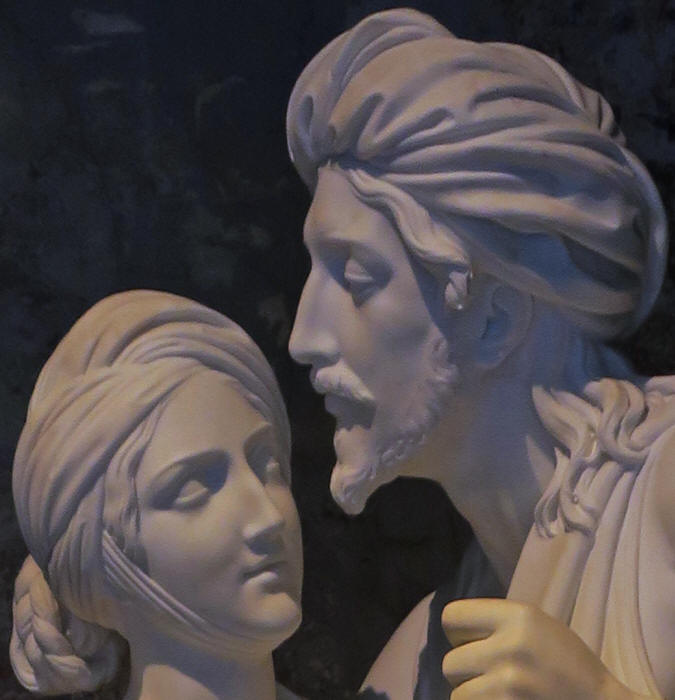
Now, back to the paintings. They freely allow you to photograph anything you want in this museum. The problem arises that since some of them are quite high up, they come out like a trapezoid (bigger at the bottom than at the top) or at a severe angle. Also, for some reason there was a greenish tint due to the lighting in the rooms. The photos you see below are the result of hours of PhotoShop work straitening out and adjusting the color hues and contrast to produce a better representation of the art as if you were standing directly in front of it. These two below, by Titian, are examples of his technique. Left is a portrait of "Johann Friedrich I" (1503-54) called Johann the Magnanimous, who was Elector of Saxony. I never found a title for the one on the right.
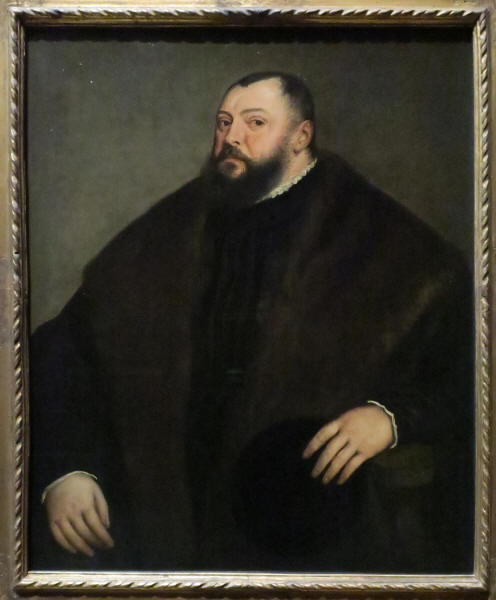
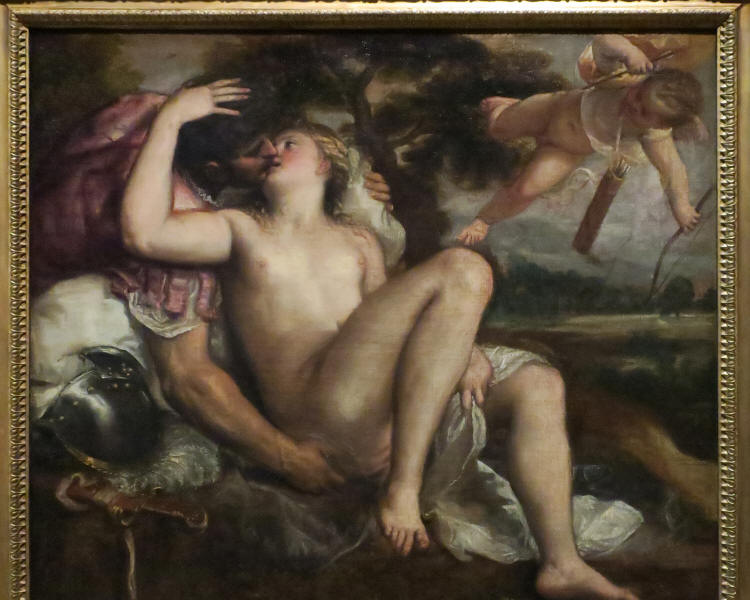
This one by Titian is titled "Madonna with Child and Saints" from 1520.
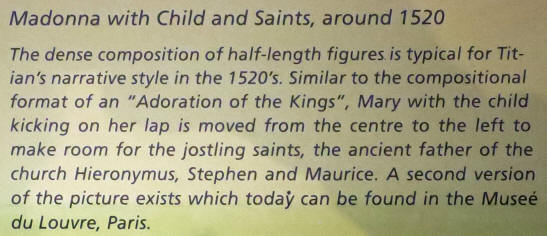
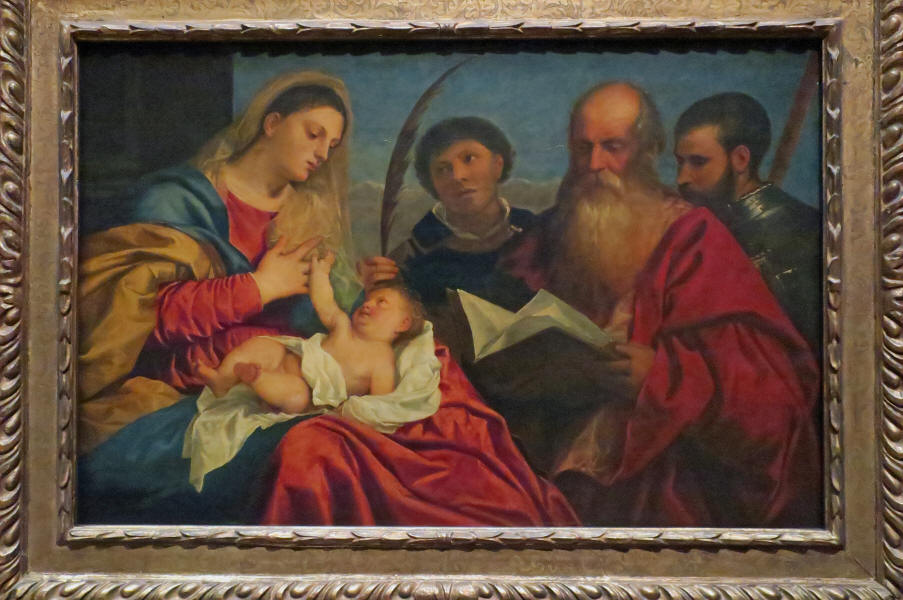
The two below are both Titian's: left is "Diana and Kalisto" and I didn't get the title of the nude on the right.
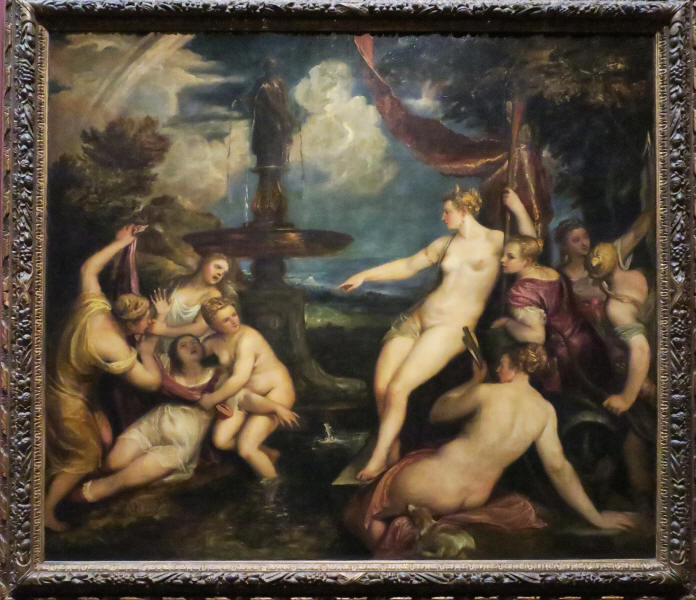
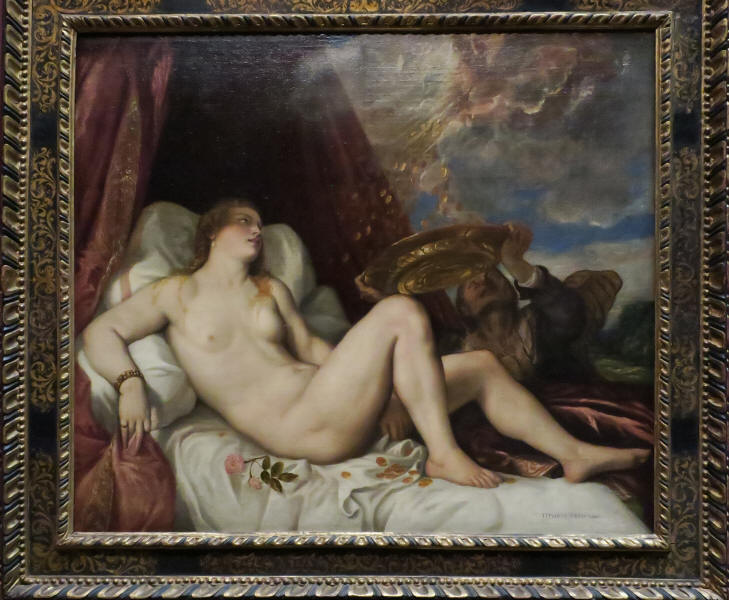
Below by Tizian: left titled "Ecce Homo" ("Behold the Man") from 1543 of Christ after the lashings and on the right is a portrait of "Benedetto Varchi" (1503�65) done in 1540. He was an Italian humanist, historian and poet.
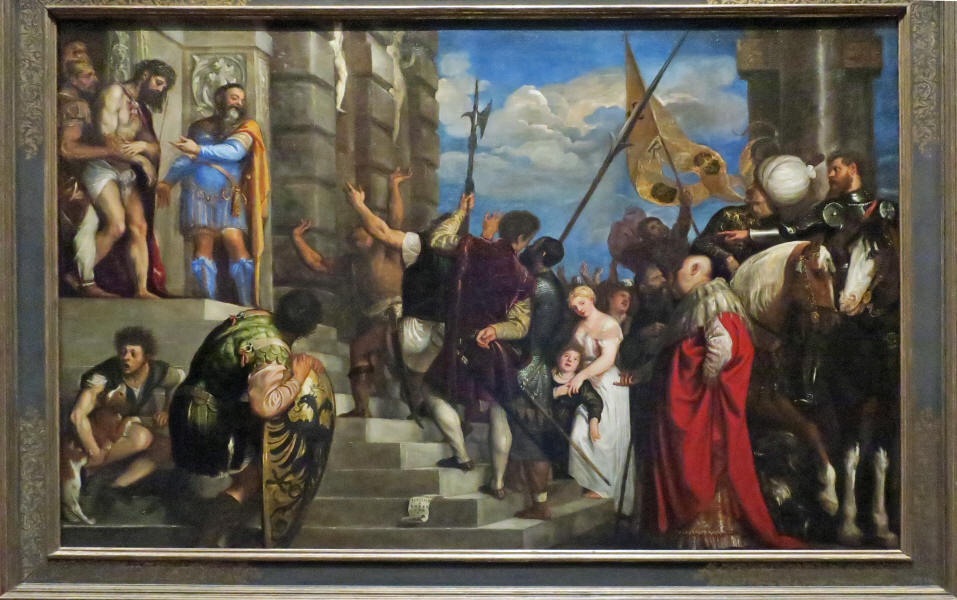
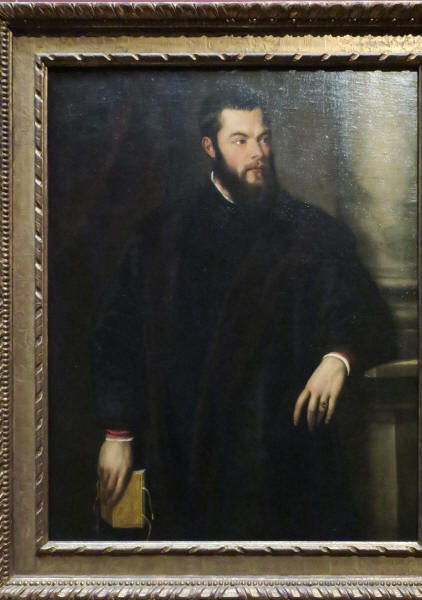
Titian did a number of paintings of this pope. Here is "Pope Paul III, Farnese" from 1546.
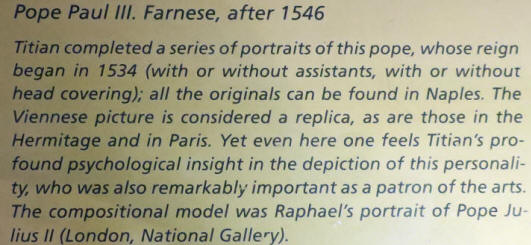

Then there was this marble upper torso of "Archduke Leopold Wilhelm" by Fran�ois Dieussart (1600-61), a Walloon (France/Belgium) sculptor.
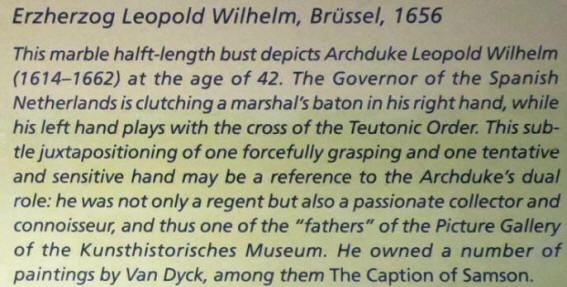
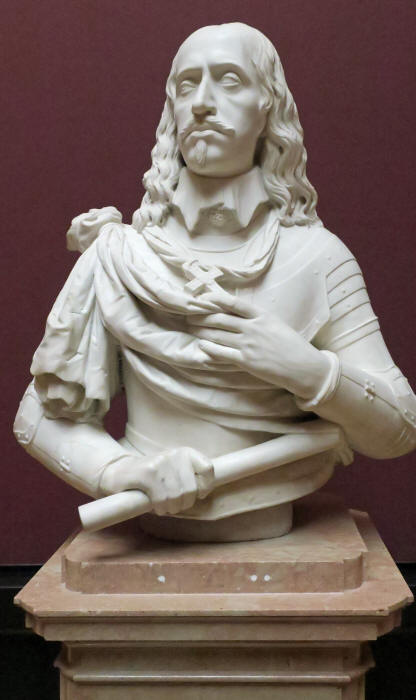
Below are Titian's: left is "Christ mit der Weitkupel" (with the wide coupler?). Didn't get title of one on the right.
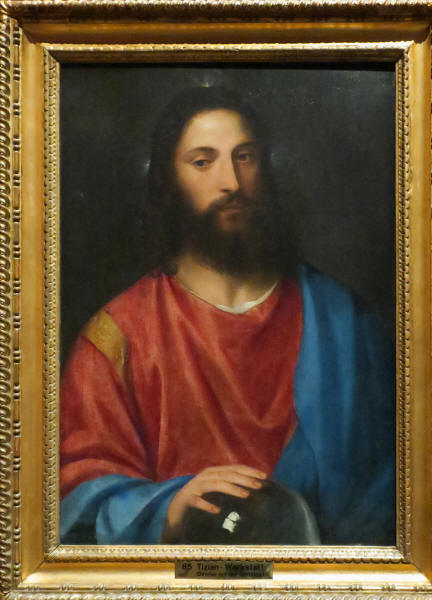
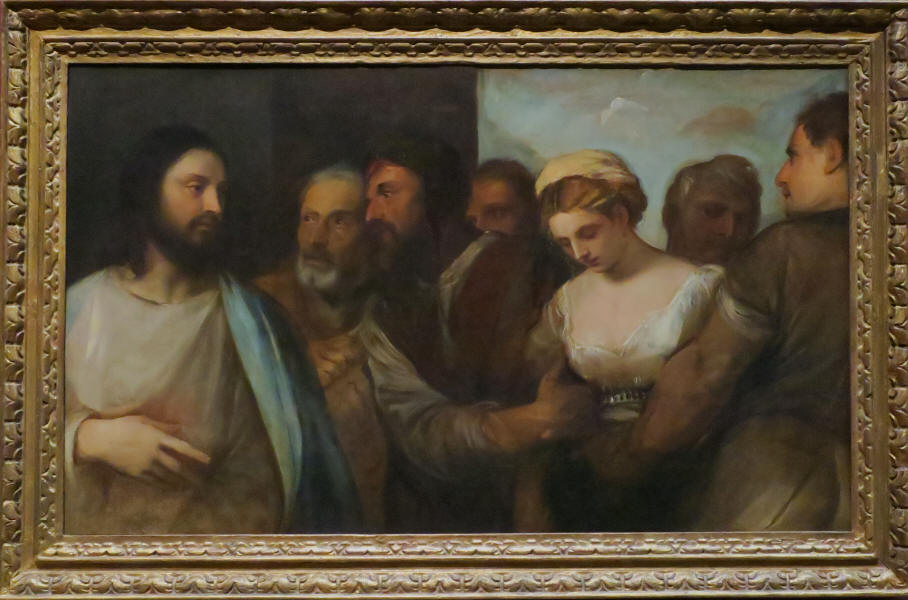
I now enter Gallery (Saal) II which is about art from the Venetian Renaissance.
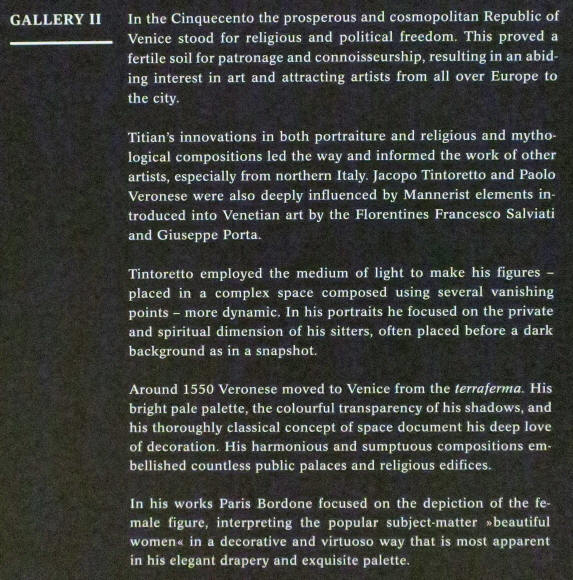
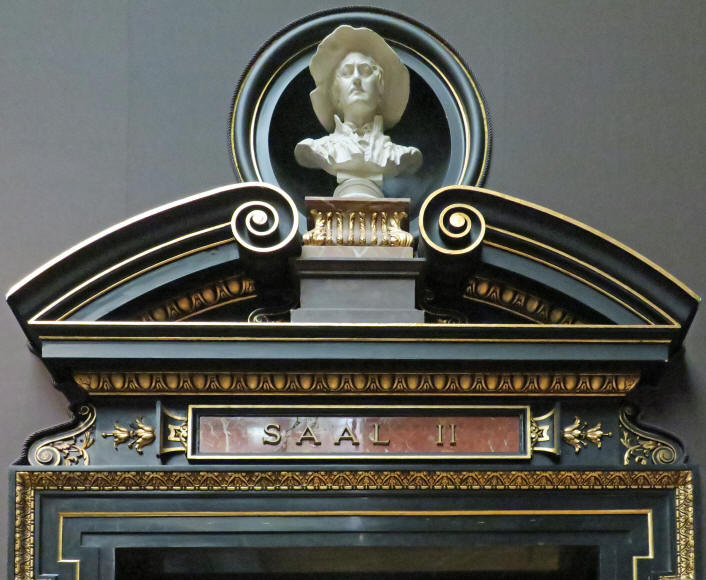
Here is the room and note the comfortable sofas available to sit and relax.
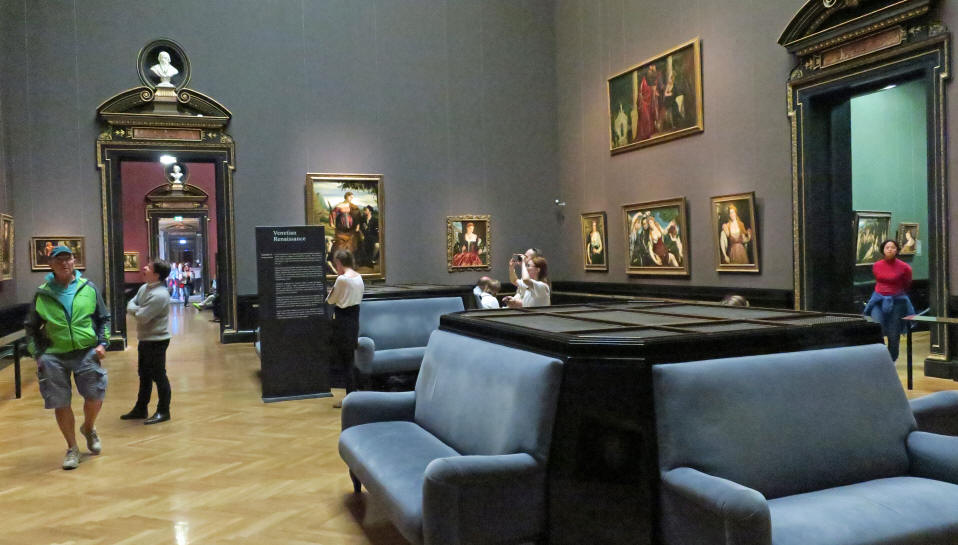
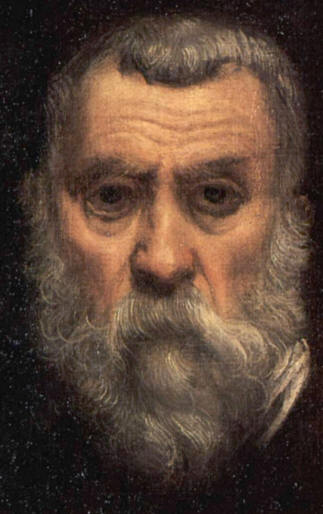
Below is "Susanna Bathing" from 1555-6 by Jacopo Tintoretto (1518-94) (above right). His real name was Jacopo Comin. He was an Italian Renaissance painter, based in Venice, known for large-format history paintings of religion and mythology.
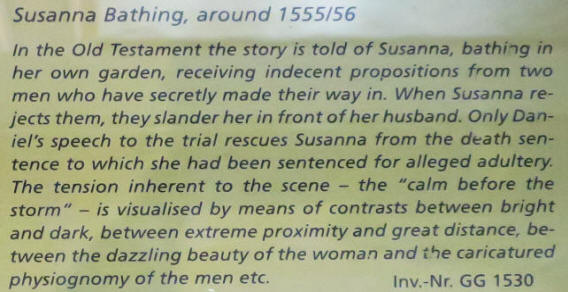
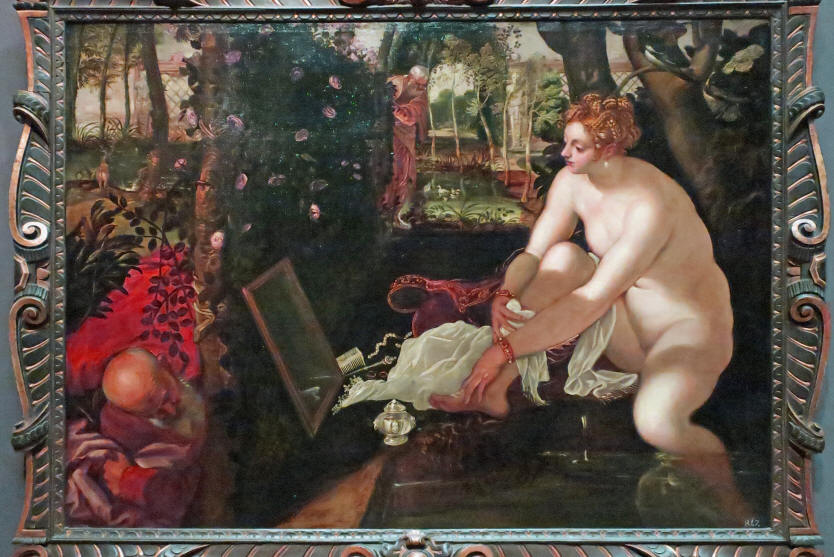
Below is Tintoretto's "The Raising of the Youth of Nain" from 1565-70.
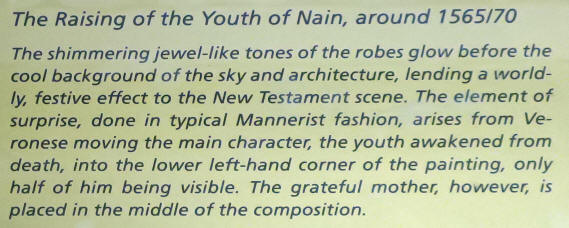
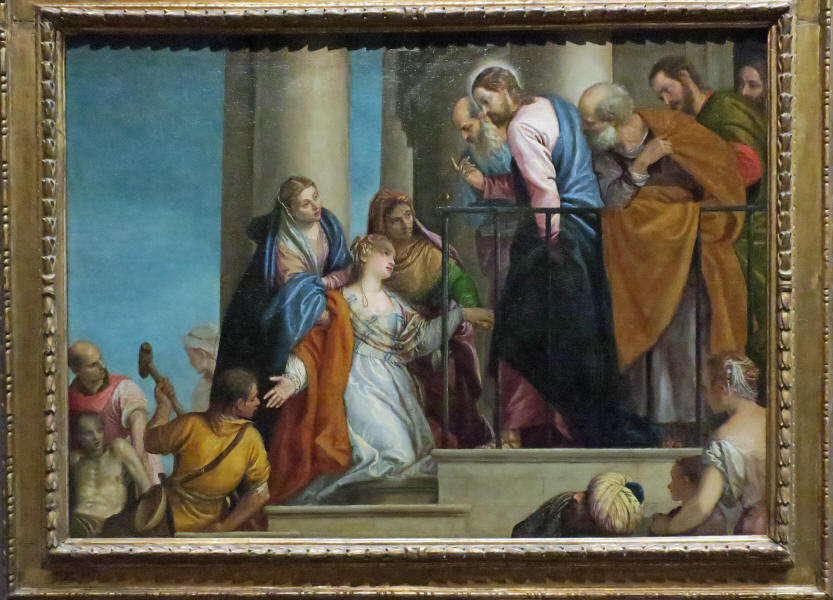
Here is "St. Justina, Worshiped by a Founder" from 1530-4 by Alessandro Bonvicino (1498-1554) more commonly known as Moretto or in Italian, Il Moretto da Brescia. He was an Italian Renaissance painter from Brescia.
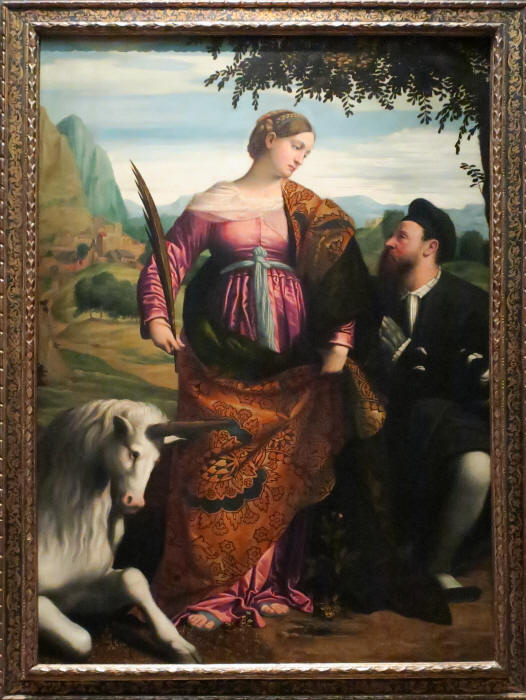
Paolo Veronese (1528-88) (below center) who was a famous artist active in Venice.
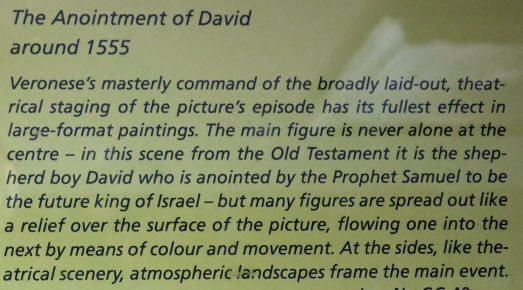
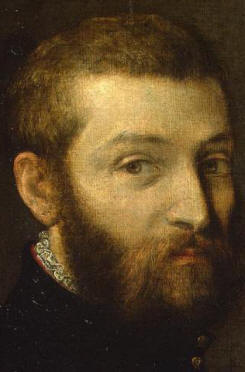
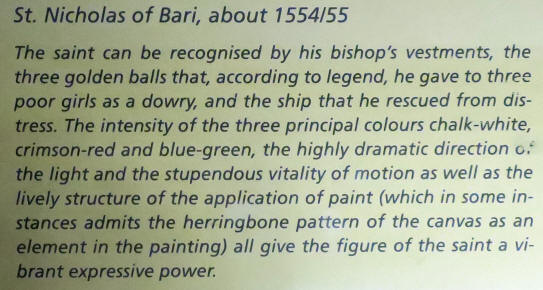
Below left is his "The Anointment of David" from 1555. Below right is his "St. Nicholas of Bari" (Santa Claus) from 1554-5.
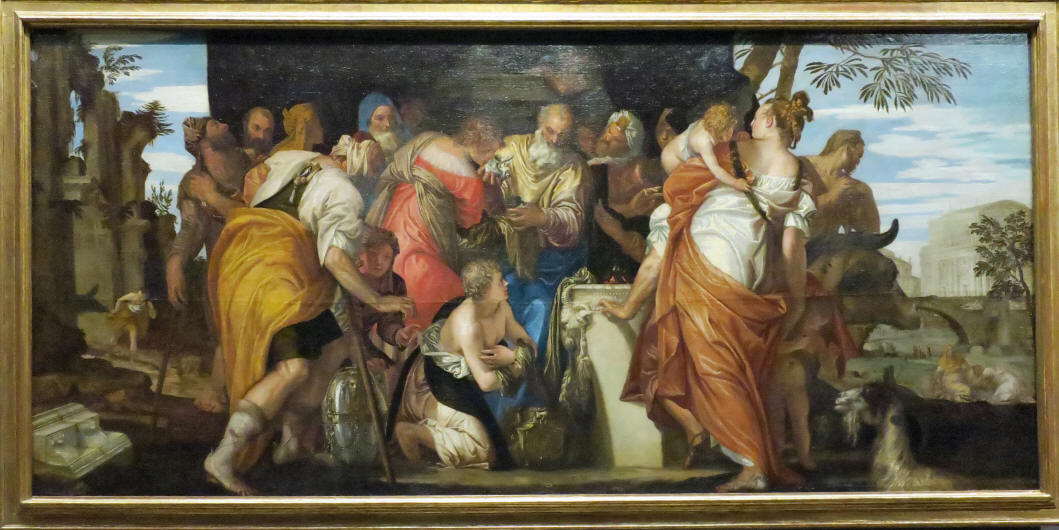
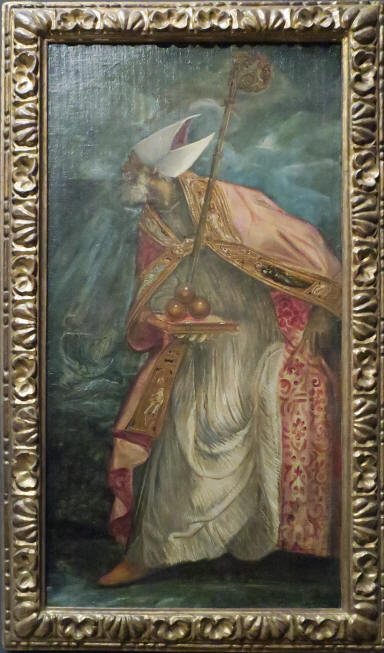
Below is Veronese's "Judith with the Head of Holofernes" from 1582.
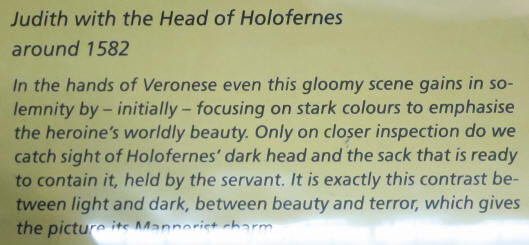
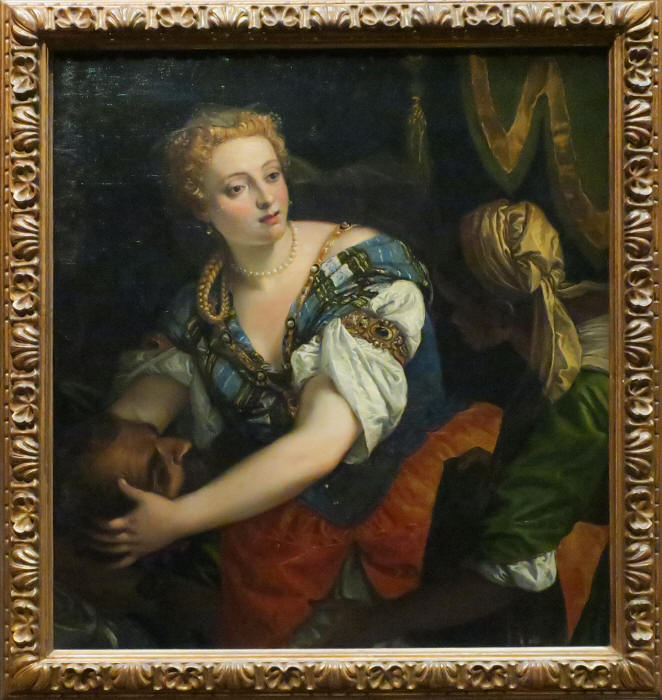
We seldom look up, but when you do in this place, the art is all around you. I took these shots of the beautiful ceiling workmanship at the corners. The intricate detail is amazing. At first glance they look like they are the same photo. Can you tell any differences between the two corners? I found at least four.
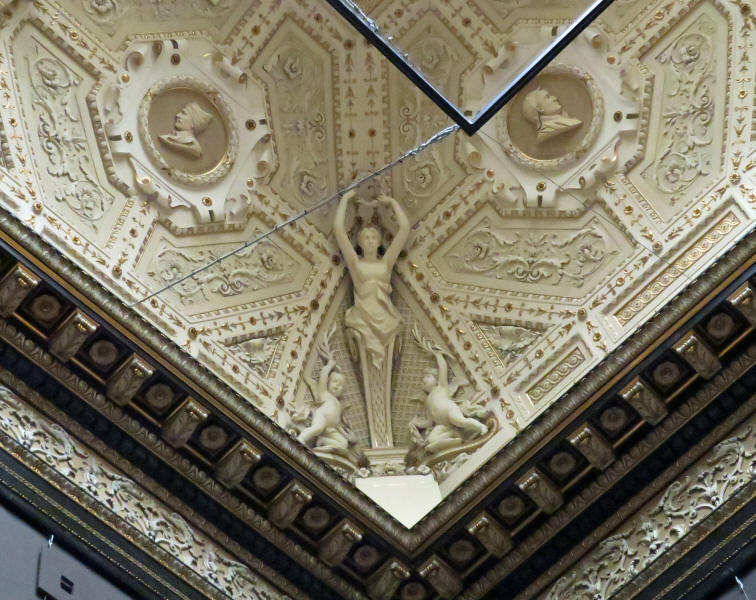
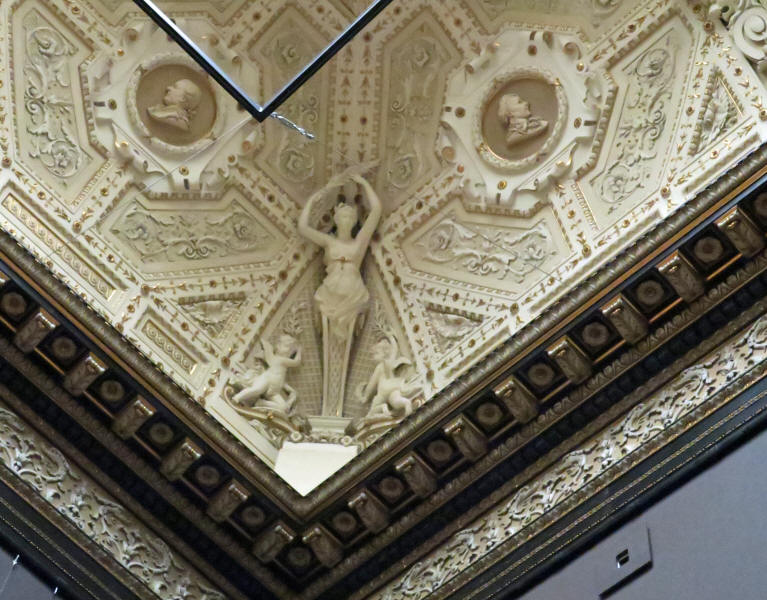
The paintings are beautifully displayed mostly at eye level.

Below is titled "Mary with the Child and Two Angels" by Sebastiano Mainardi (1450-1513), done between 1475-1500 and acquired in 1662.
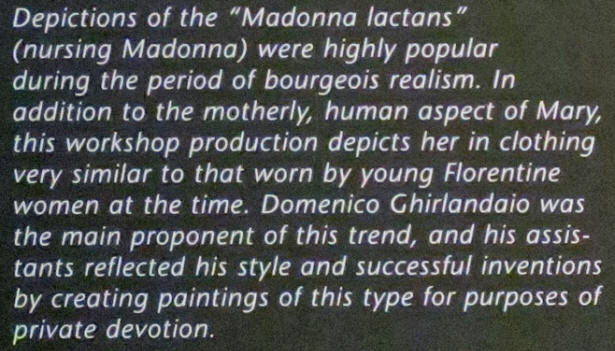
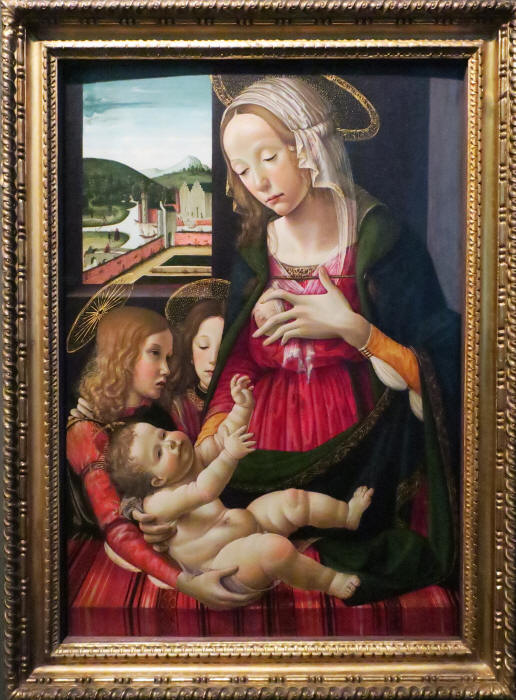
Below is titled "Hieronymus-Altar" from 1441 by Antonio Vivarini (1415-86), an early Venetian Renaissance painter.
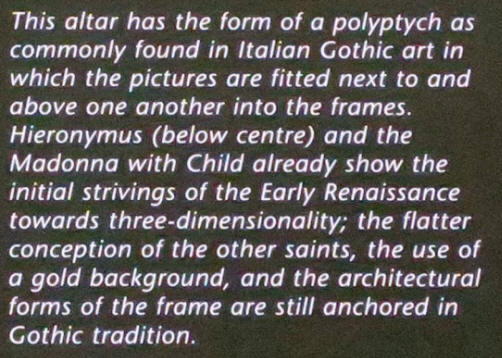
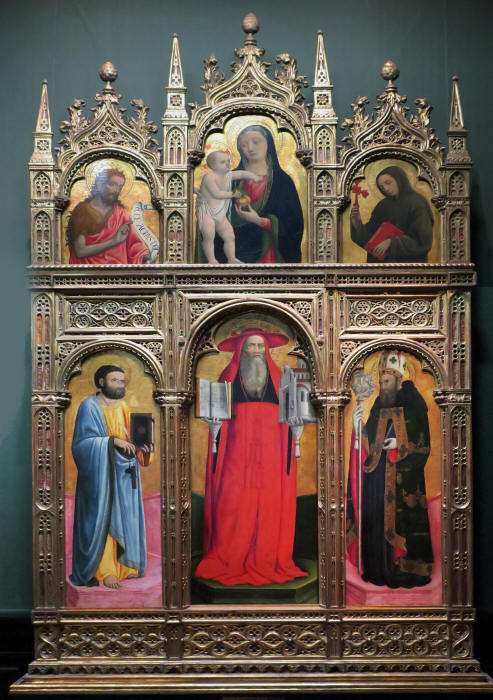
Here is "Emperor Charles V" from 1532 by Jacob Seisenegger (1500-58), an Austrian painter used often by Charles V.
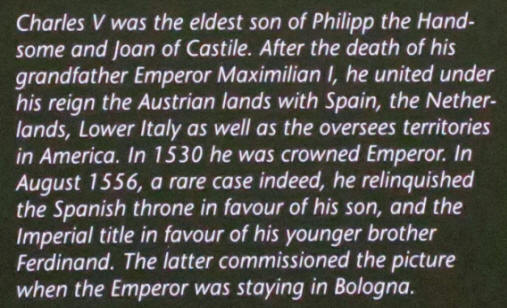
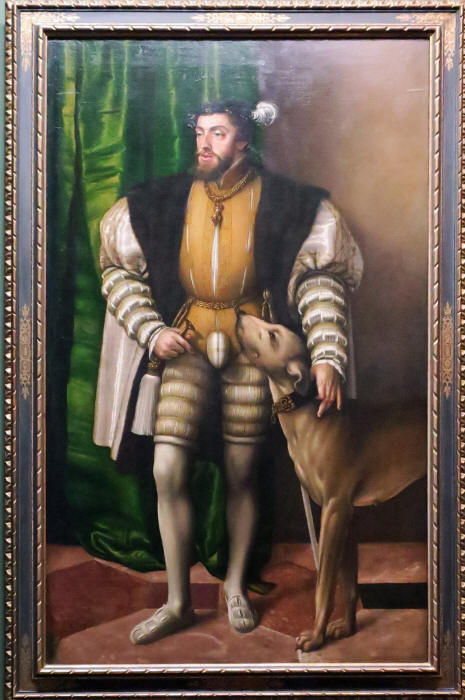
Below is titled "St. Sebastian" from 1458 by Andrea Mantegna (1430-1506). He was an Italian artist born in Isola di Carturo near Padua. He was a student of Roman archeology and a son-in-law of Jacopo Bellini. You can see (center left) the blow up of Mantegna's signature (in Greek) which is just on the left edge of the column near his pants (center left). Can you see it?
I always photo every St. Sebastian I have seen. I found a stock photo (center right) of another of Mantegna's St. Sebastians (with a few more arrows) which is in the Mus�e du Louvre in Paris. The one he did on the right is in Venice.
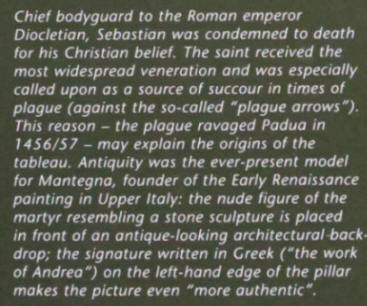
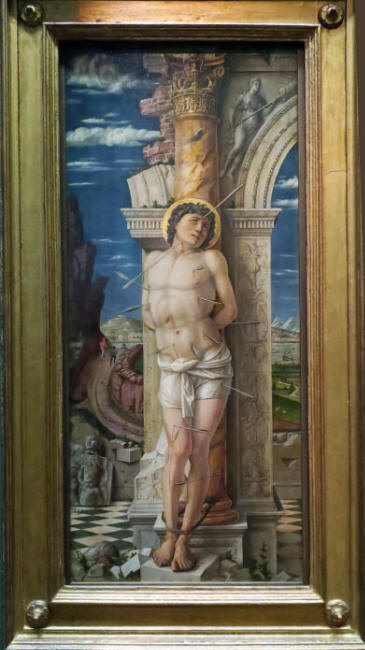
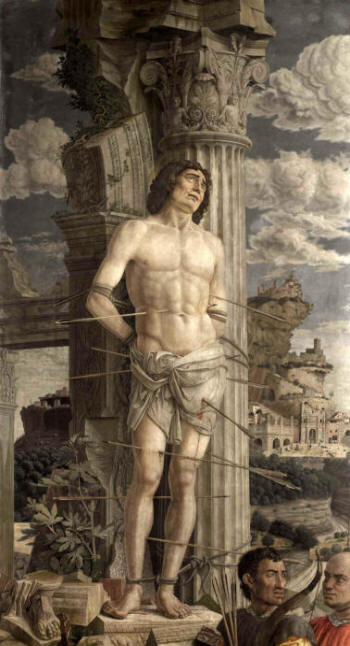
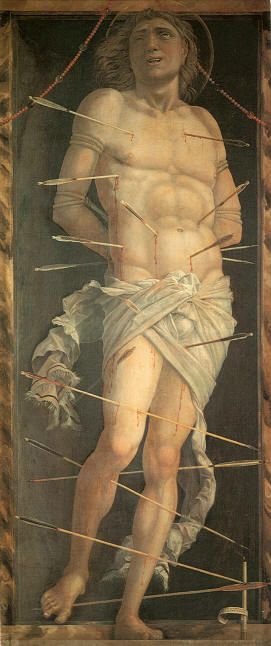
Below is "Bathing Nymphs" (or "Diana and Callisto") from 1525-8 by Palma Vecchio (1480-1528) (below, both) who was a Venetian painter of the Italian High Renaissance. His portraits are below.
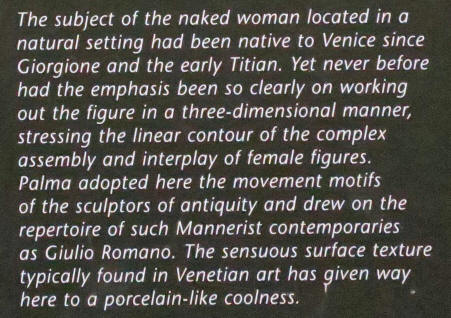
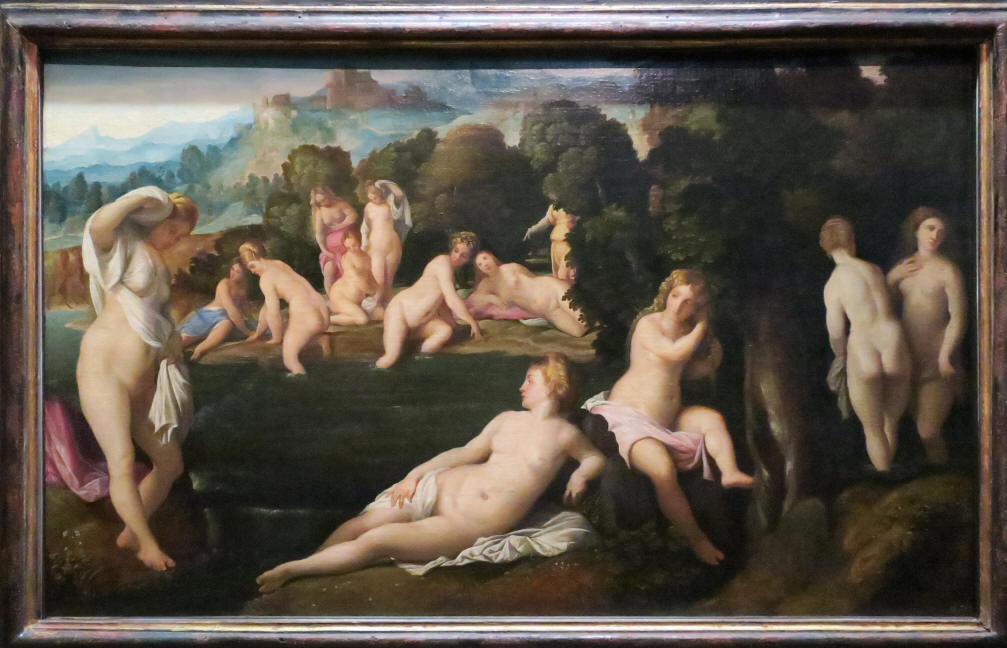
Portraits of Palmo Vecchio (left and right). Another wall in the Venetian Renaissance room.
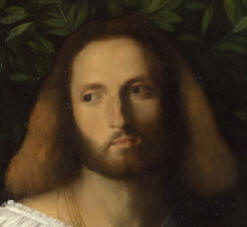
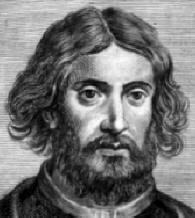
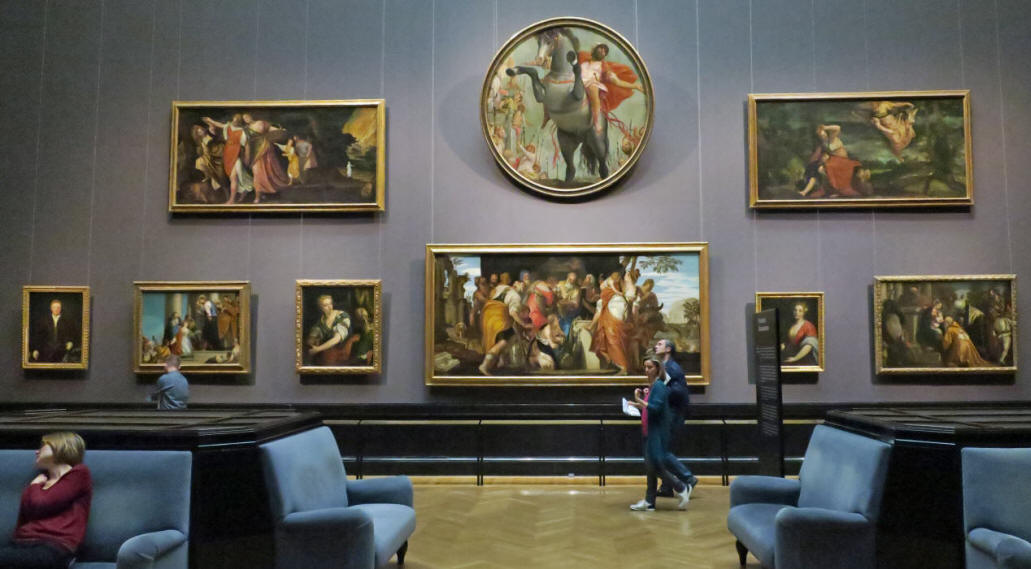
Below left is the circular painting up high on the wall above. I don't have the title or artist. I then entered Gallery III which is labeled "Raphael and the High Renaissance in Central Italy". Raffaello Sanzio da Urbino (1483-1520), along with Michelangelo and Leonardo da Vinci, formed the traditional trinity of the great masters of that period.
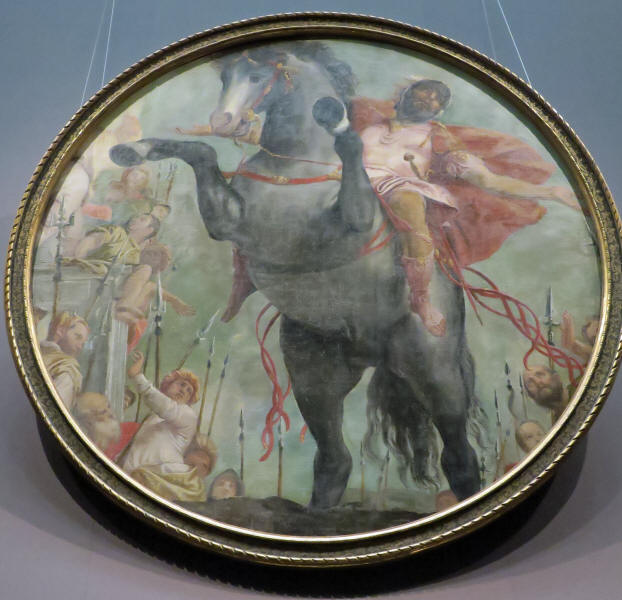
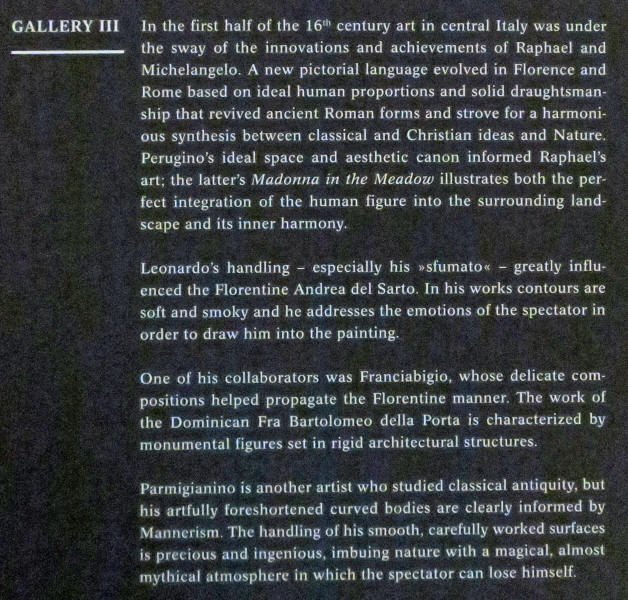
Here is the look of this room.
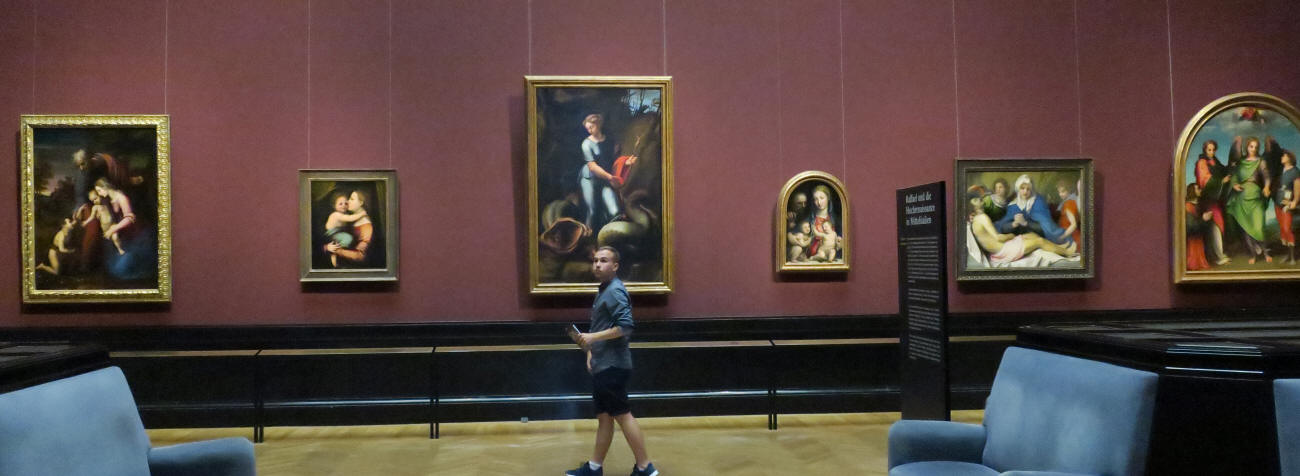
This is "St. Margaret" from 1518 by Raphael who worked in Rome. Its on the wall above in the center.
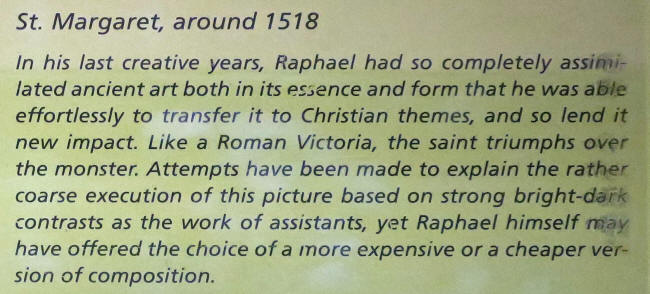
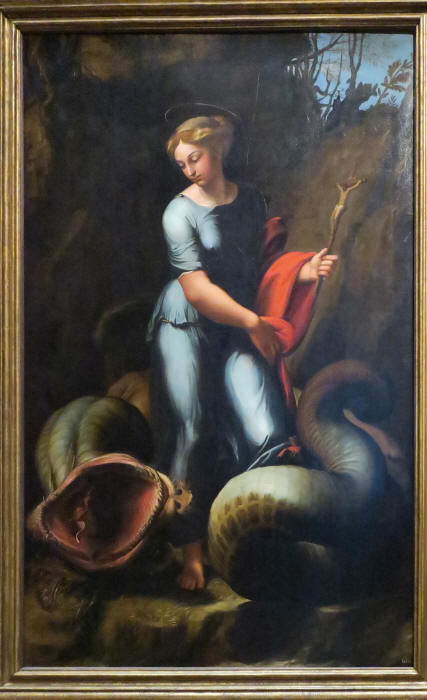
Below is titled "Holy Family with the Young John" from 1513-4 by Raphael.
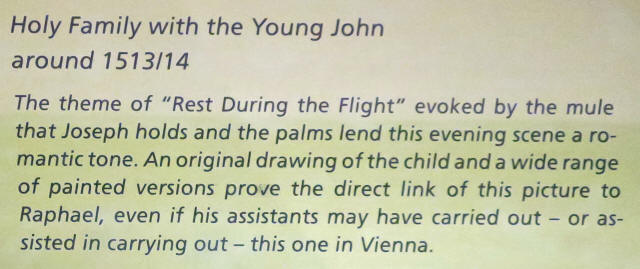
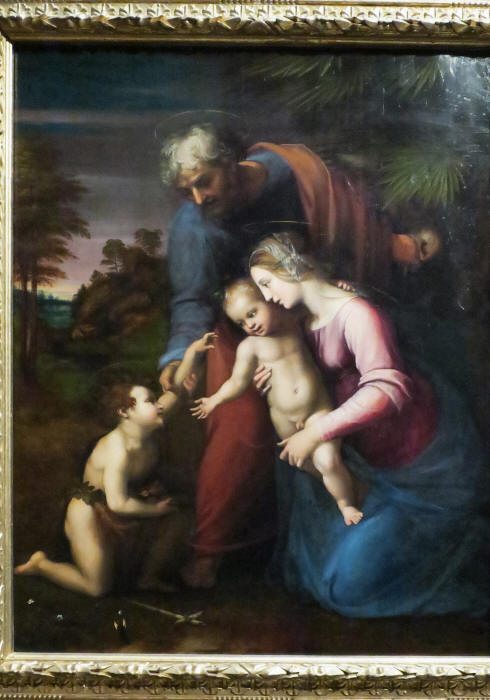
Below is titled "The Madonna of the Meadow" from 1505 by Raphael (1483-1520).
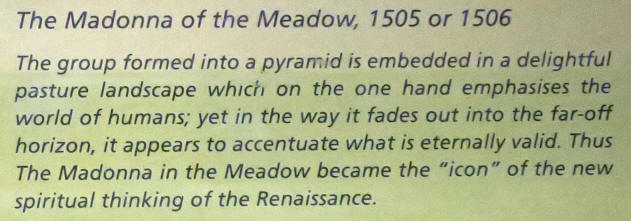
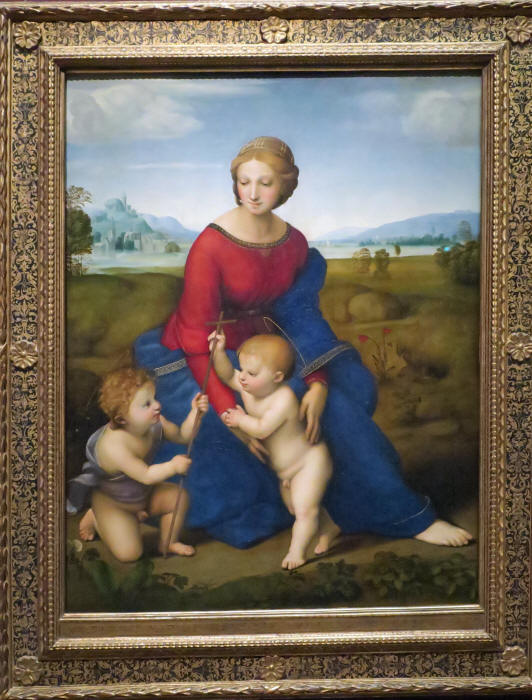
Below is titled "Mary with Child" from 1514-6 by Fra Bartolomeo (1475-1517) who worked in Florence and Rome.
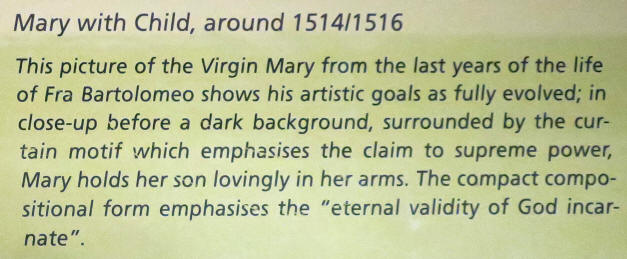
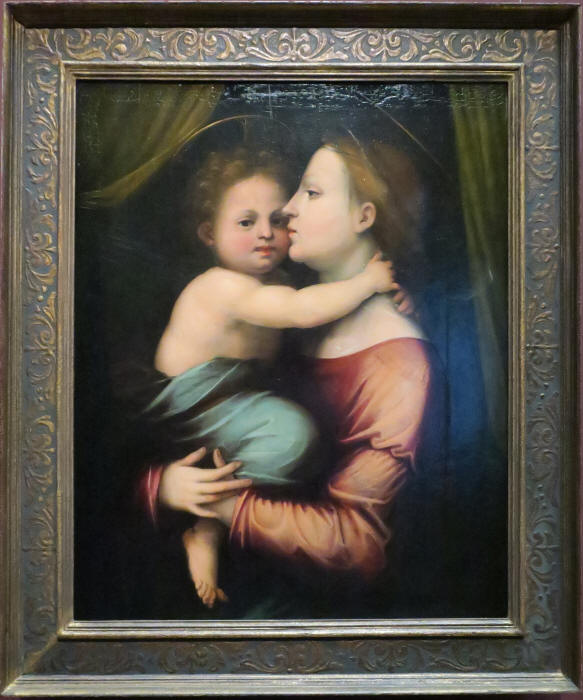
Below is titled "Depiction of Christ in the Temple" from 1516 by Fra Bartolemeo.
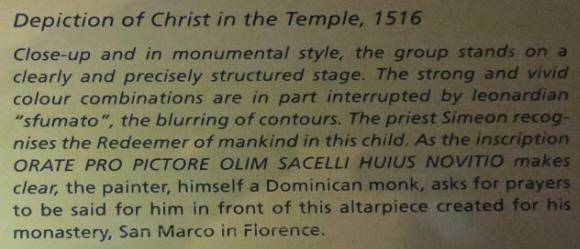
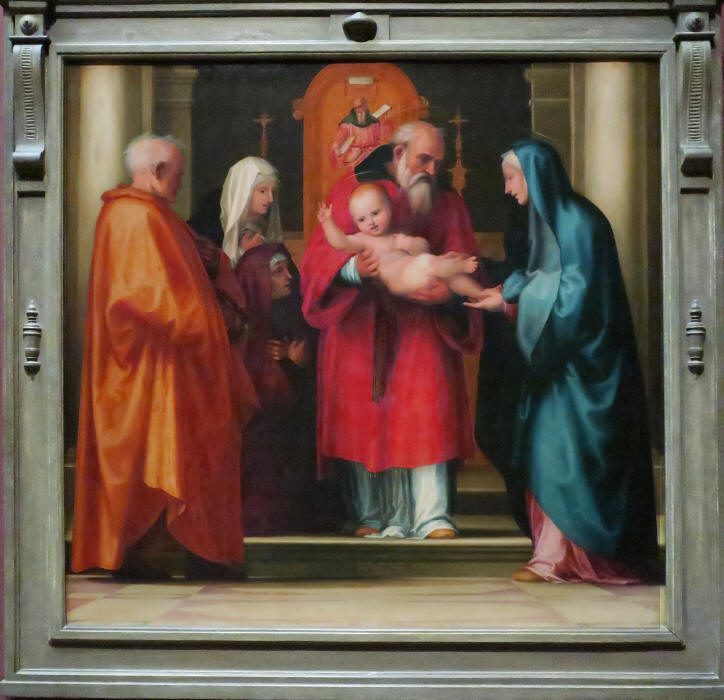
Below is a marble bust of "Titus Livius" from 1550 by an unknown master active in Padua.
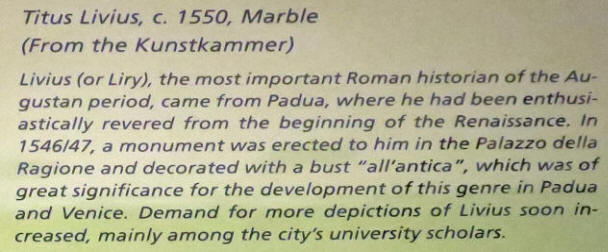
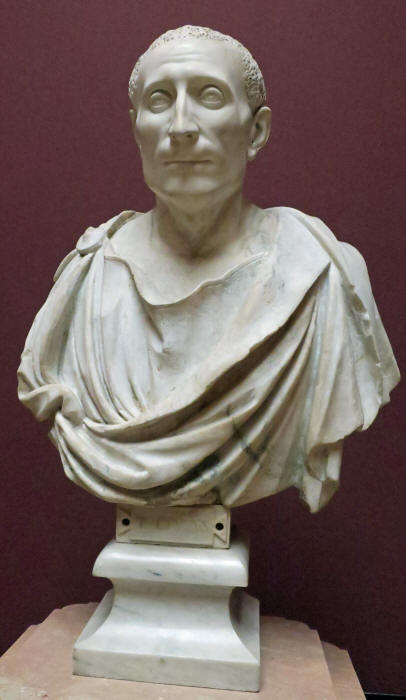
Below is a marble bust of "Alfonso I of Aragon, King of Naples" from 1541-3 by Fra Giovanni Angelo Montorsoli (1499-1563) who worked in Naples.
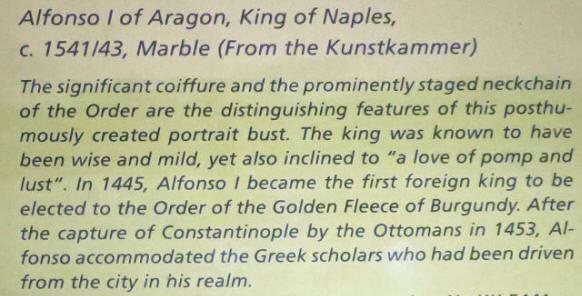
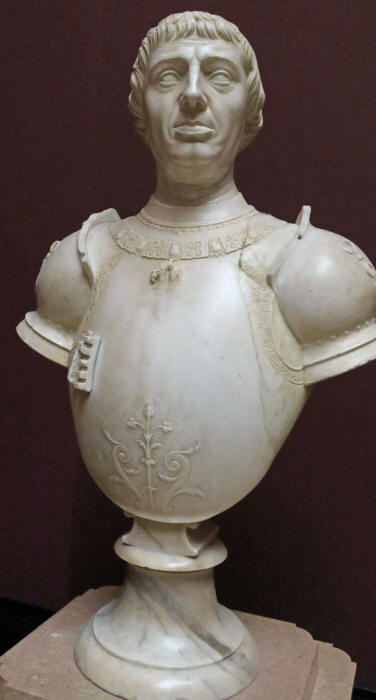
Below right is titled "The Abduction of Ganymede" from 1530 by Antonio Allegri (Correggio) (1489-1534) (below left) who was the foremost painter of the Parma school of the High Italian Renaissance.
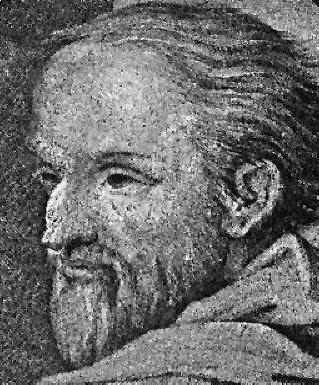
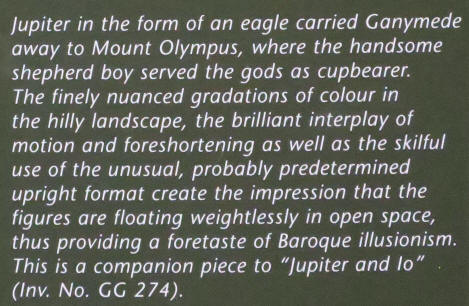
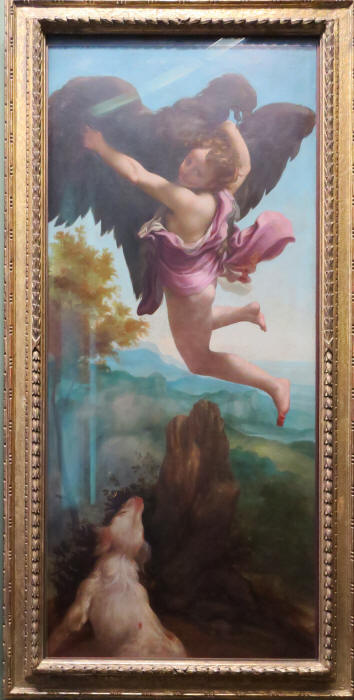
Below is his "Jupiter and Io" from 1530.
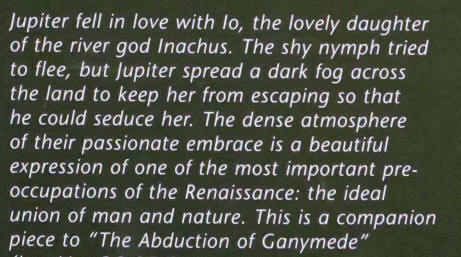

Below is titled "Madonna with Child and the Saints Catherine and Jacob the Elder" from 1527 by Lorenzo Lotto (1489-1534) of the Venetian School.
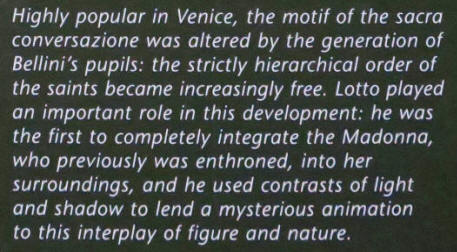
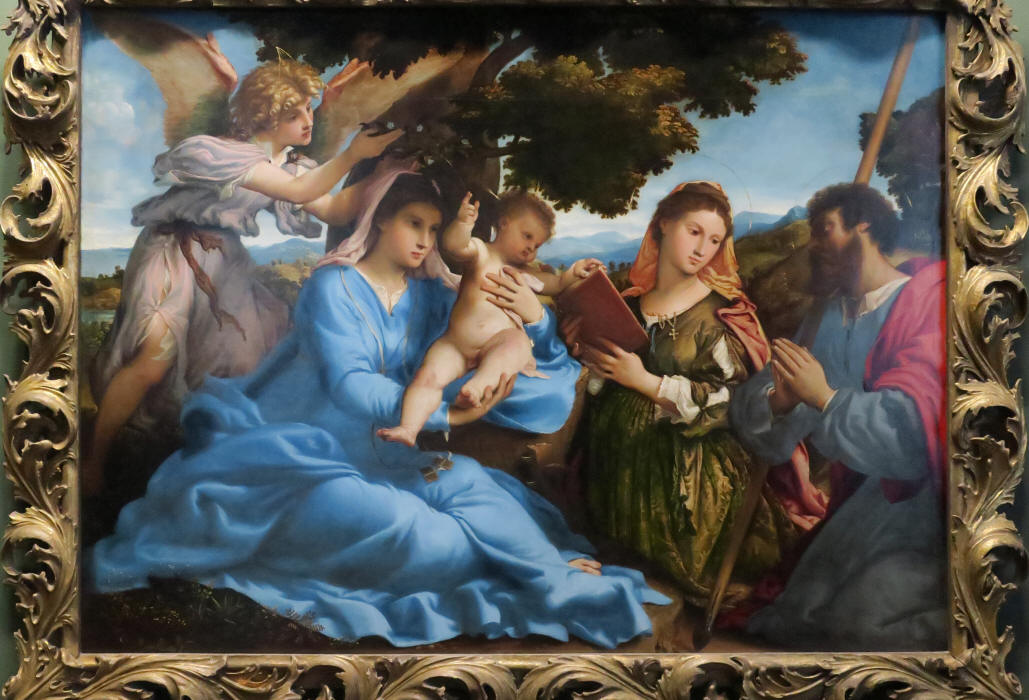
Below is also his "Christ Shedding His Blood" from 1543.
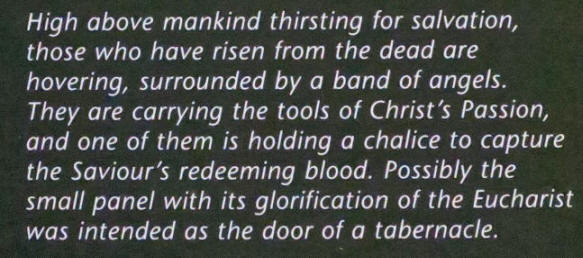
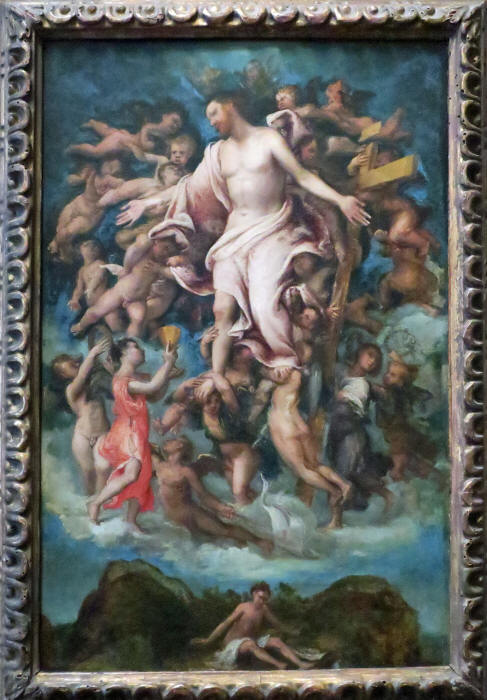
Below is titled "Madonna of the Cherries" from 1516-8 byTitzian.
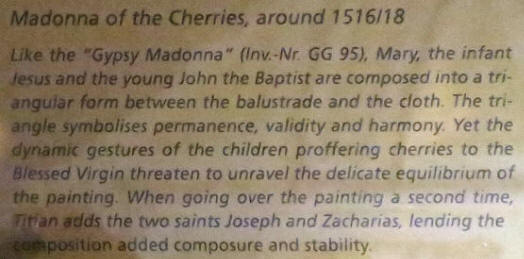
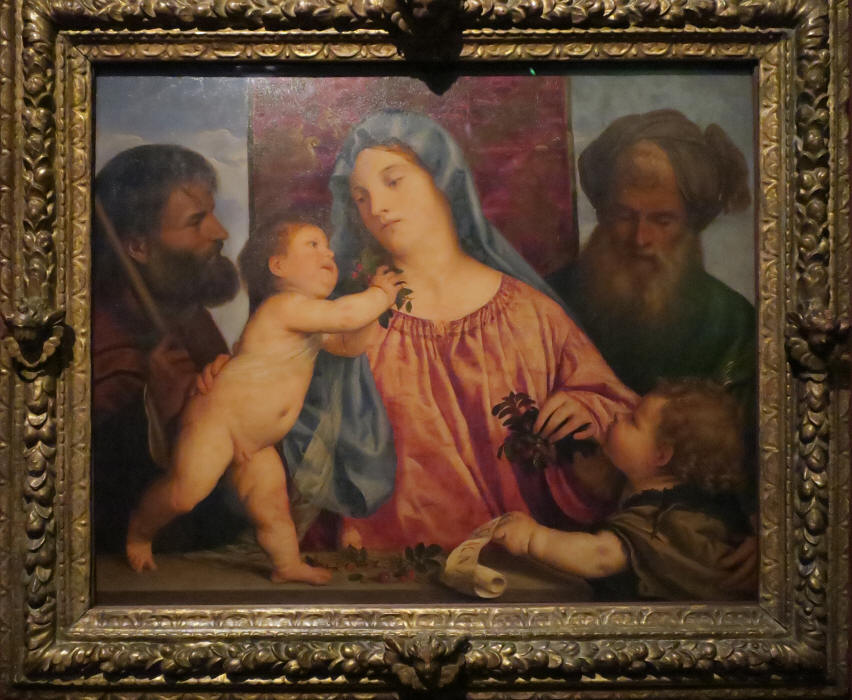
Below is a marble head of "Antonio Minor (36 BC-37 AD)" from the 1st Century by an unknown master from Italy.
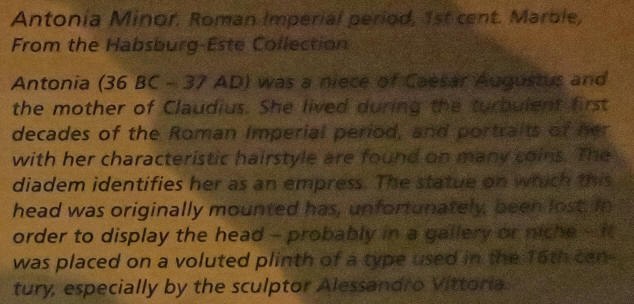
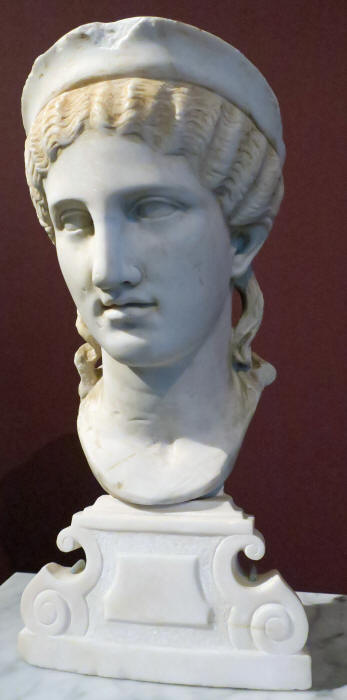
Below is titled "Young Woman at Her Toilette" from 1515 by Giovanni Bellini (1430-1516) active in Venice.
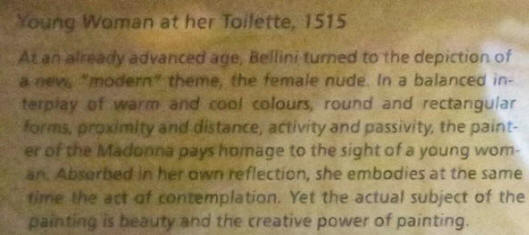
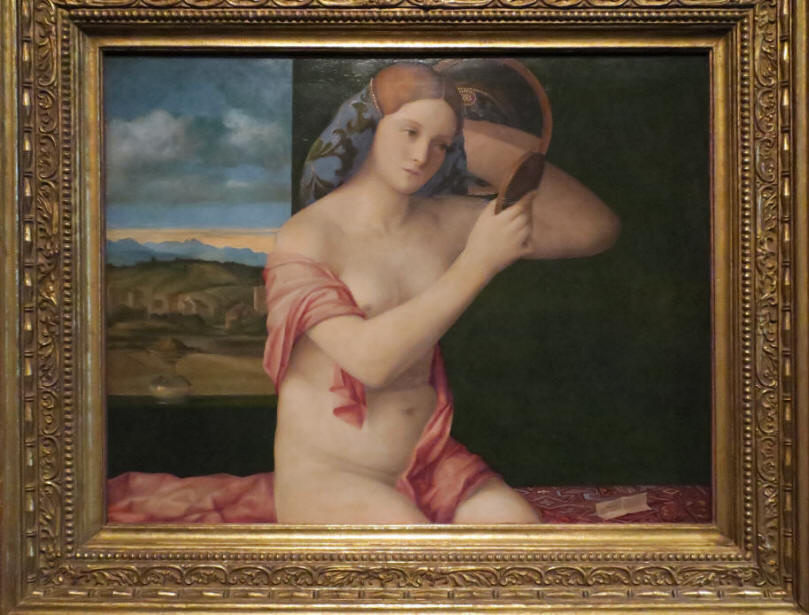
Below is titled "The Lamentation of Christ" from 1513-20 by Giovanni Gerolamo Savoldo (1480-1548) active in Breschia, Venice and Milano.
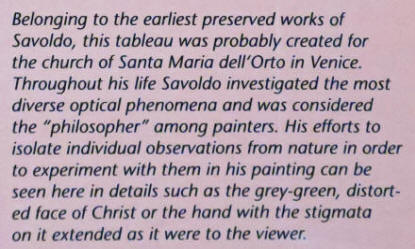
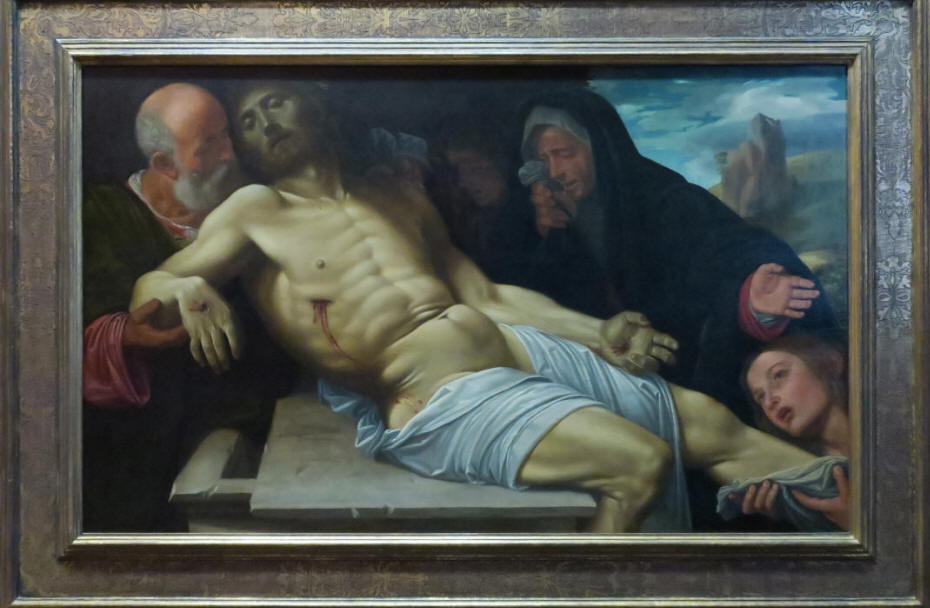
Below and below left are the walls before I enter Gallery IV.
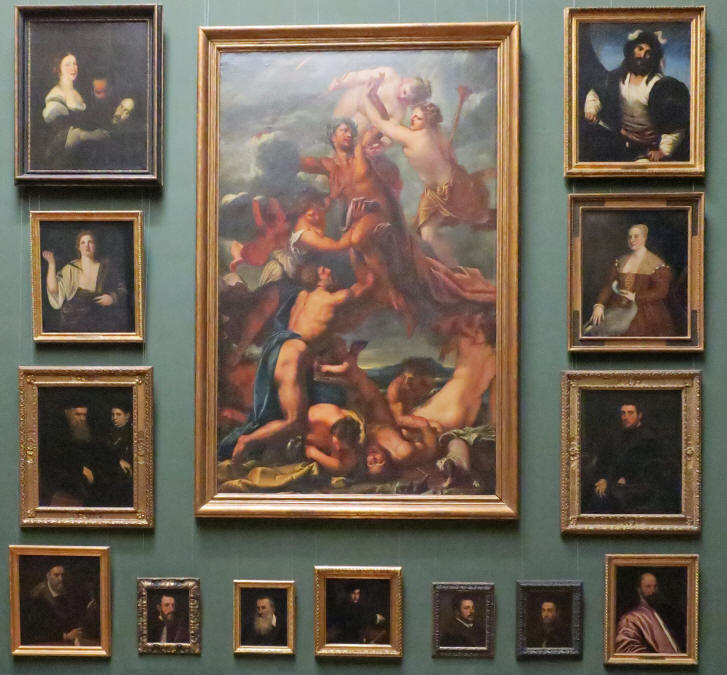
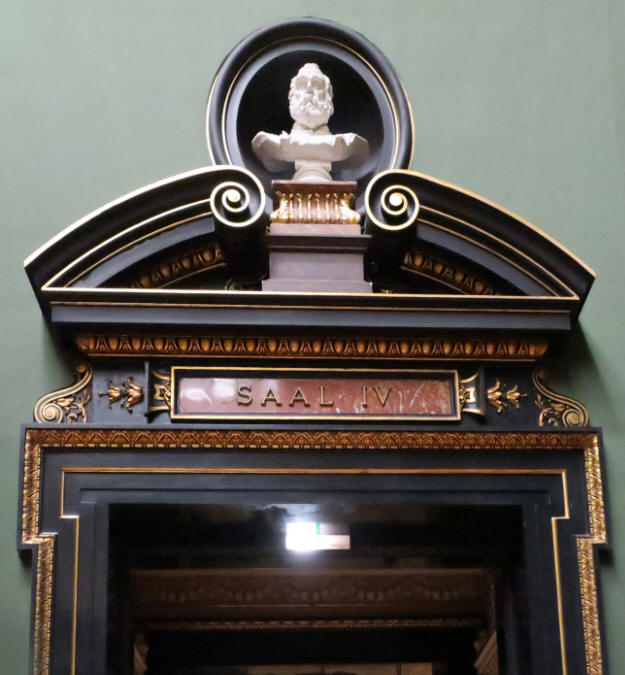
As you can see, there is a lot here (PhotoStitch below).

Now I am in Gallery IV. Here below are several examples of what they have here.
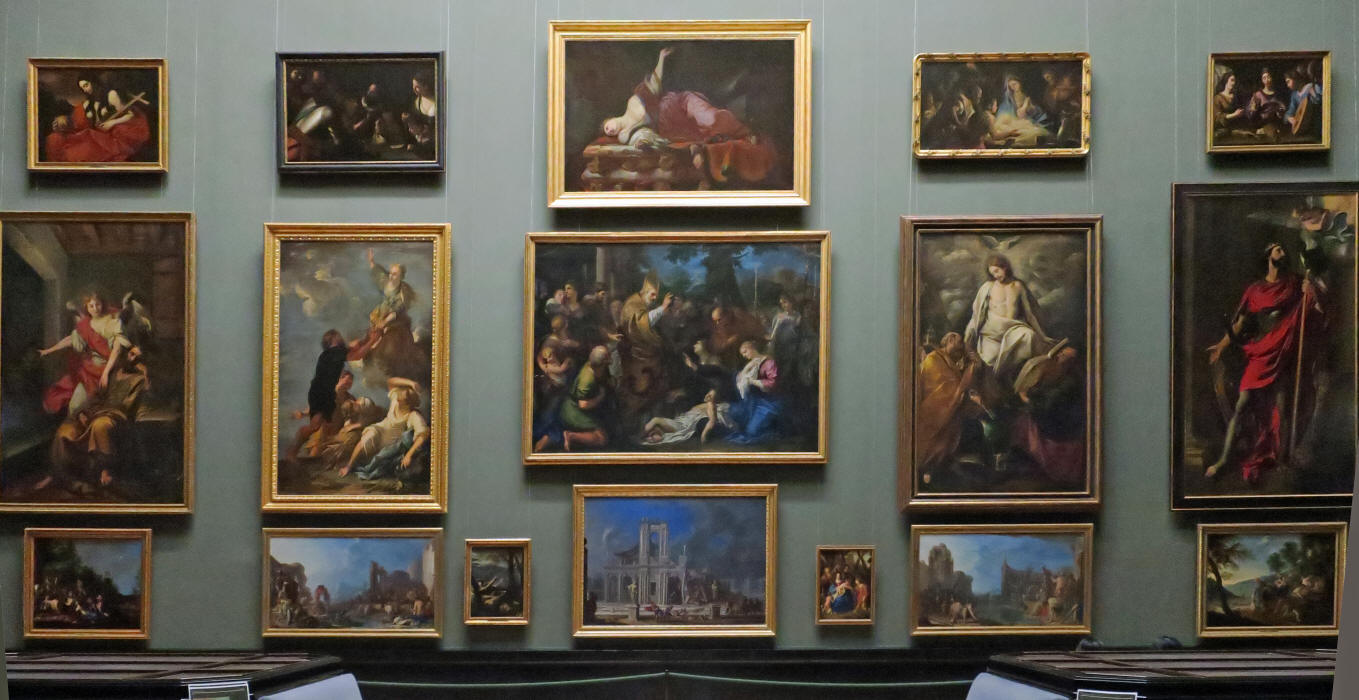
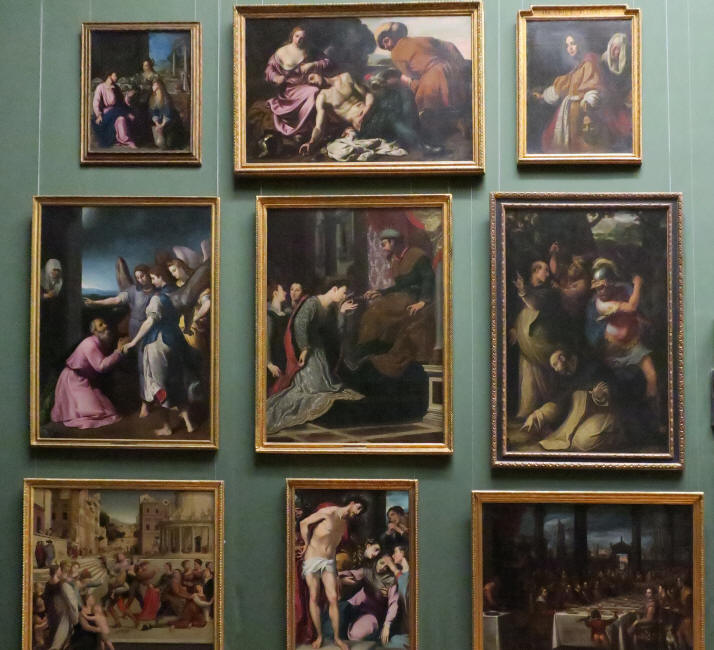
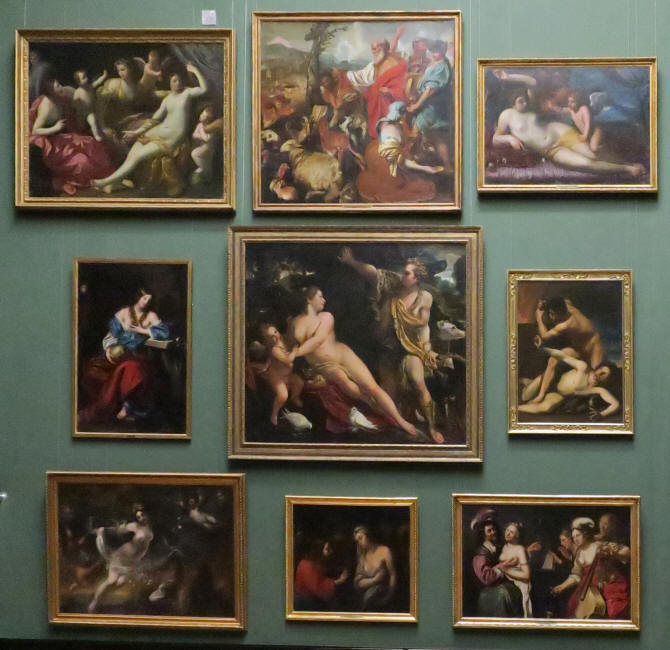
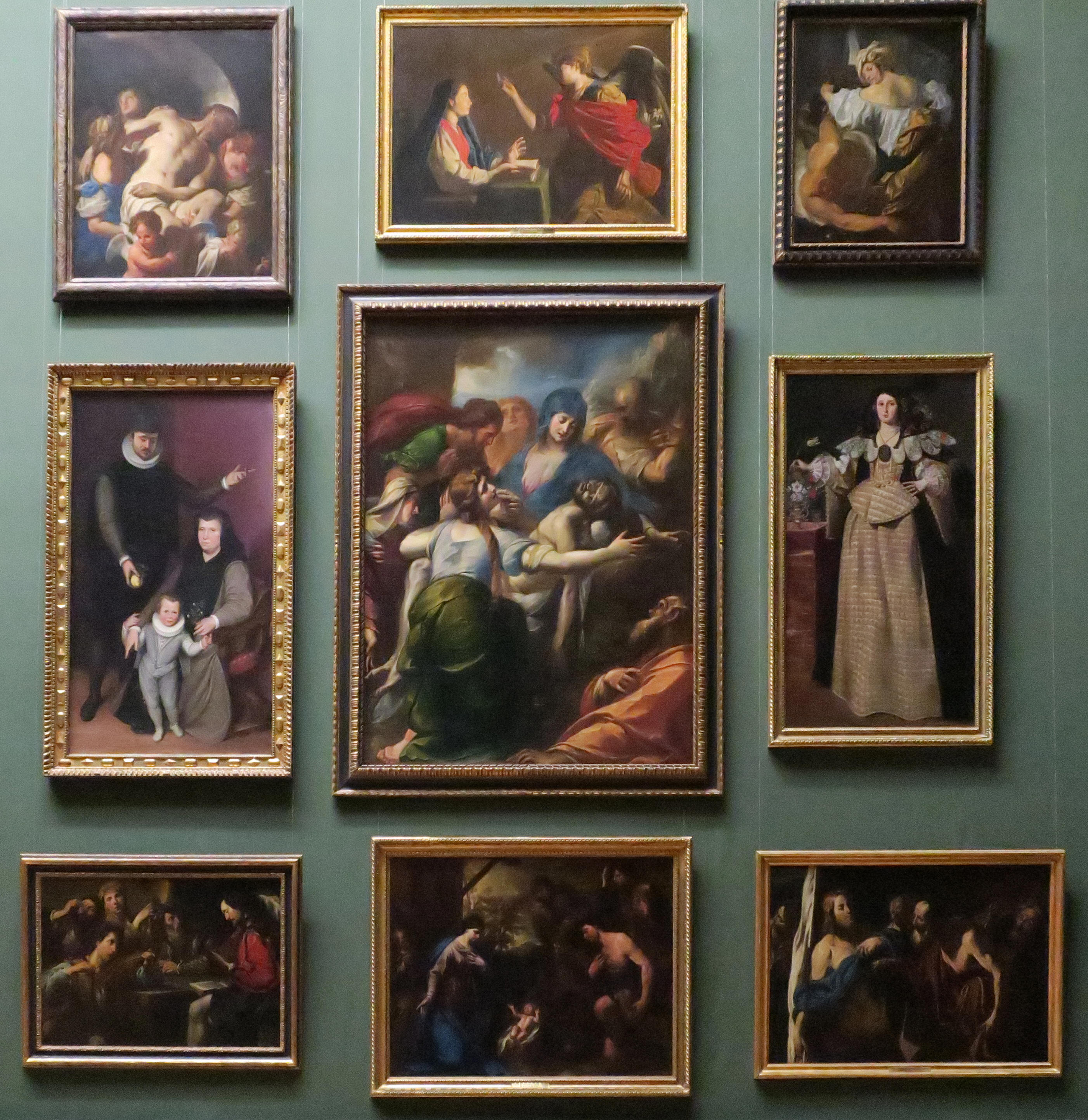
Below is an altarpiece from 1520 by Benvenuto Tisi (1481-1559) (known as Garofalo) a painter from Ferrara, Italy. Below center is a memorial to him in Rovigo, Italy. This poster is only for German speakers.
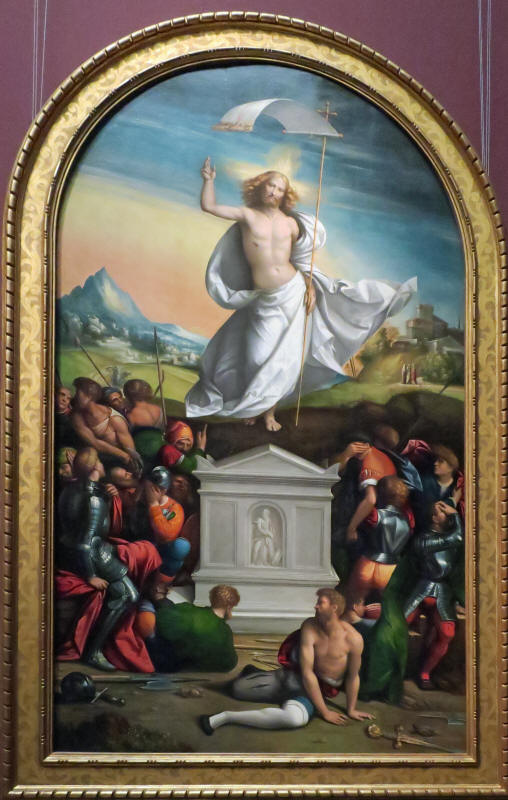
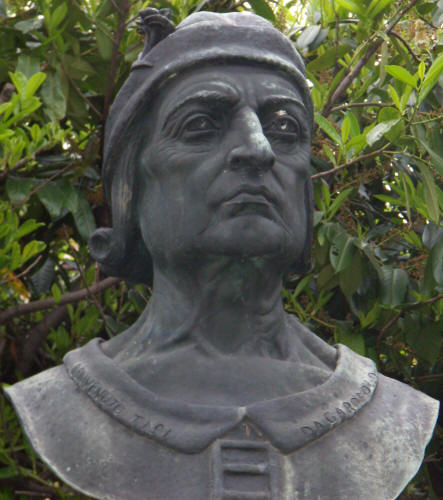
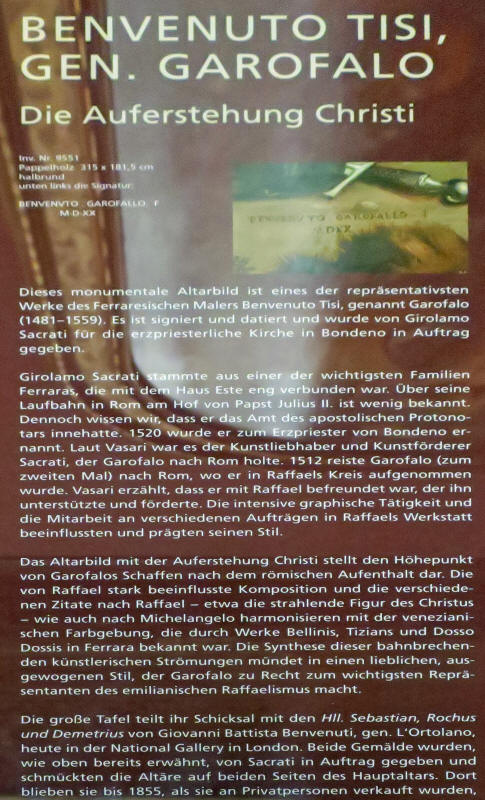
Below is just a small sample of some of his many works. Note photo above in center (below left).
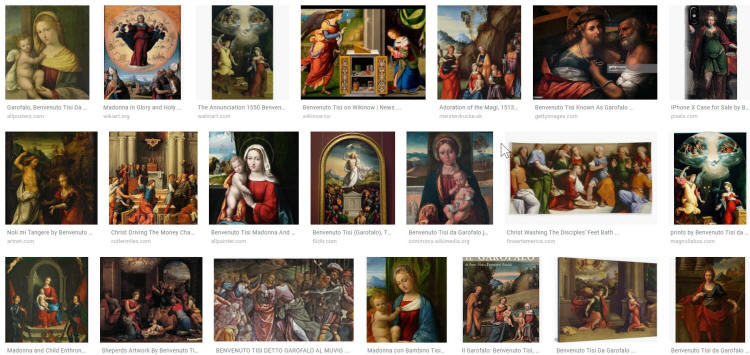
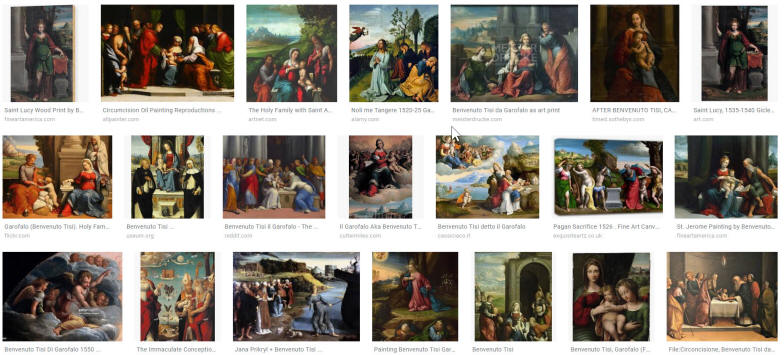
Below left is my photo of "The Prodigal Son" from 1637 by J. Baeck who died around 1655 but not found on Google. On the right is a stock photo I found of it.
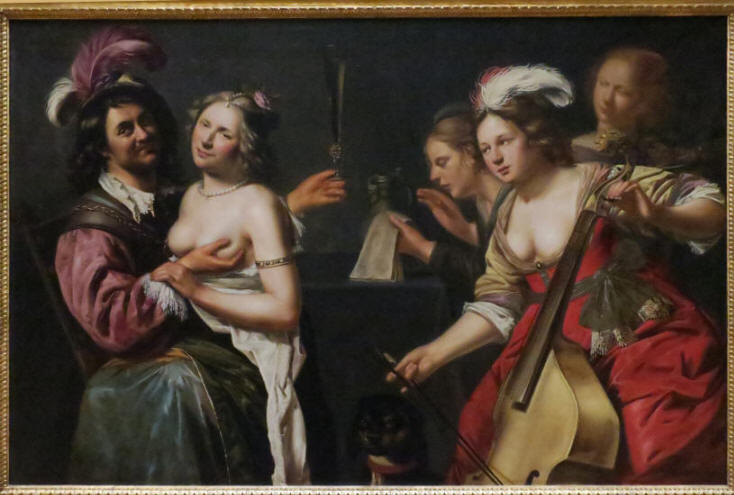
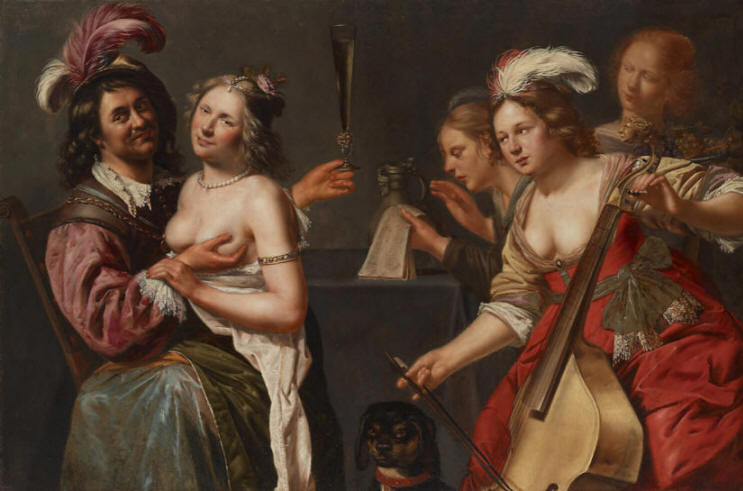
I then entered Gallery (Sala) V; the sign states: "Caravaggio and the International Caravaggisti". The latter term is used to classify paintings executed in a Caravaggesque style; that is, works which emulate Caravaggio's naturalism and dramatic lighting effects (known as chiaroscuro). Michelangelo Merisi da Caravaggio (1571-1610) (below right) led a tumultuous life. He was notorious for brawling and the transcripts of his police records and trial proceedings fill several pages. In art, he influenced many followers such as Rubens, Rembrandt, Zubar�n, Ribera, Murillo, Caracciolo and many more.
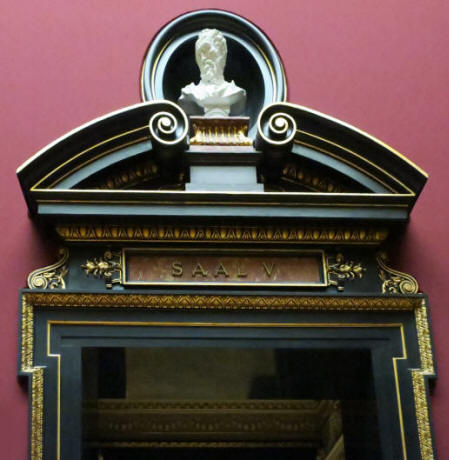
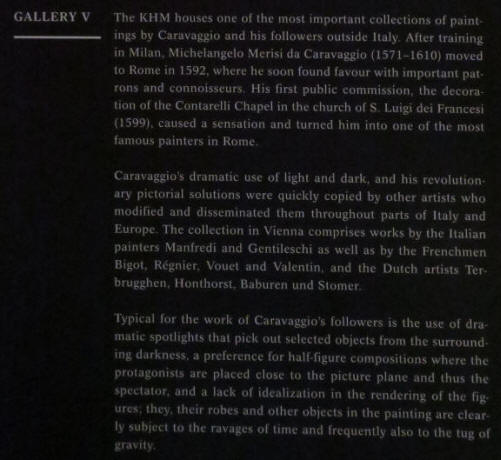
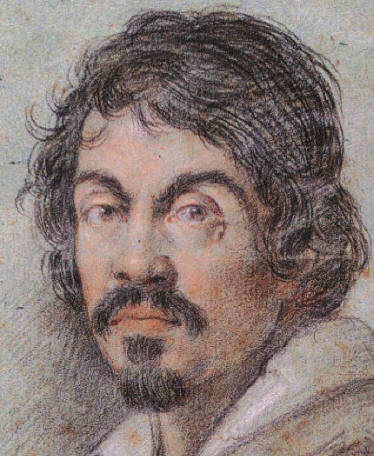
Here is a wall of his work.
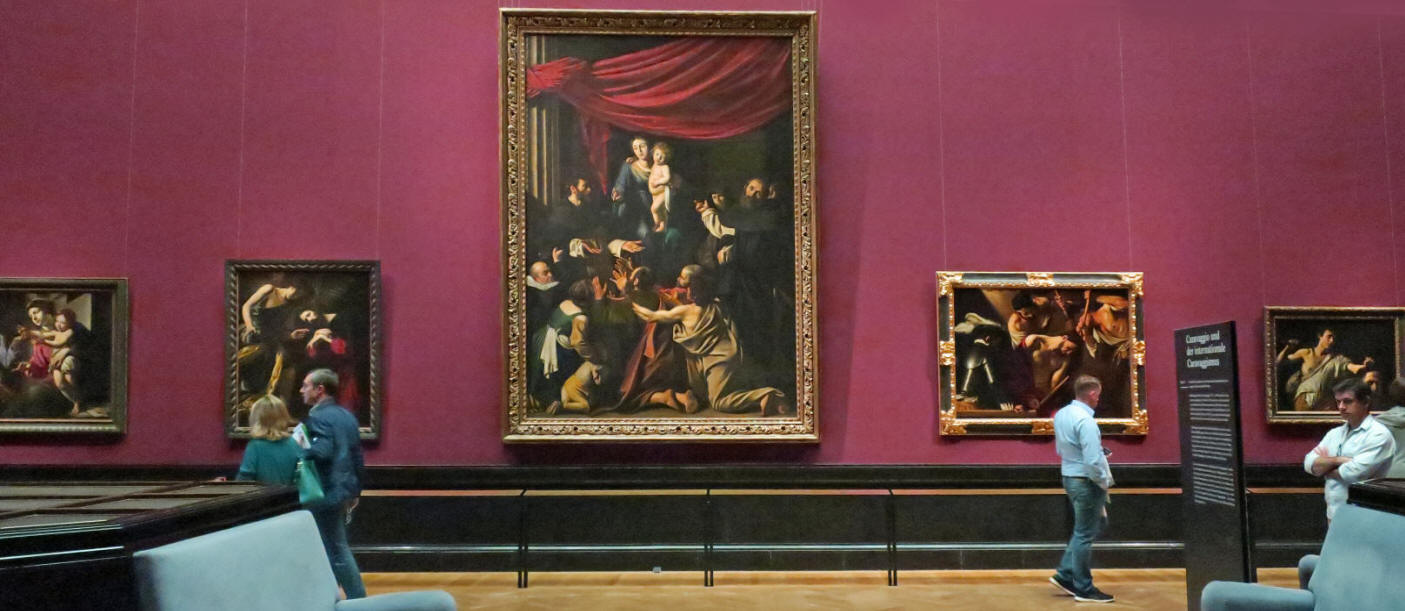
He was even charged with murder and escaped from Rome to Naples where they couldn't arrest him. Click his link (above) to read all his adventures. He also worked in Malta and Sicily, where he escaped to. Below is his "Crowning of Thorns" from 1603. Once you see a couple of his paintings, you will recognize his works immediately.

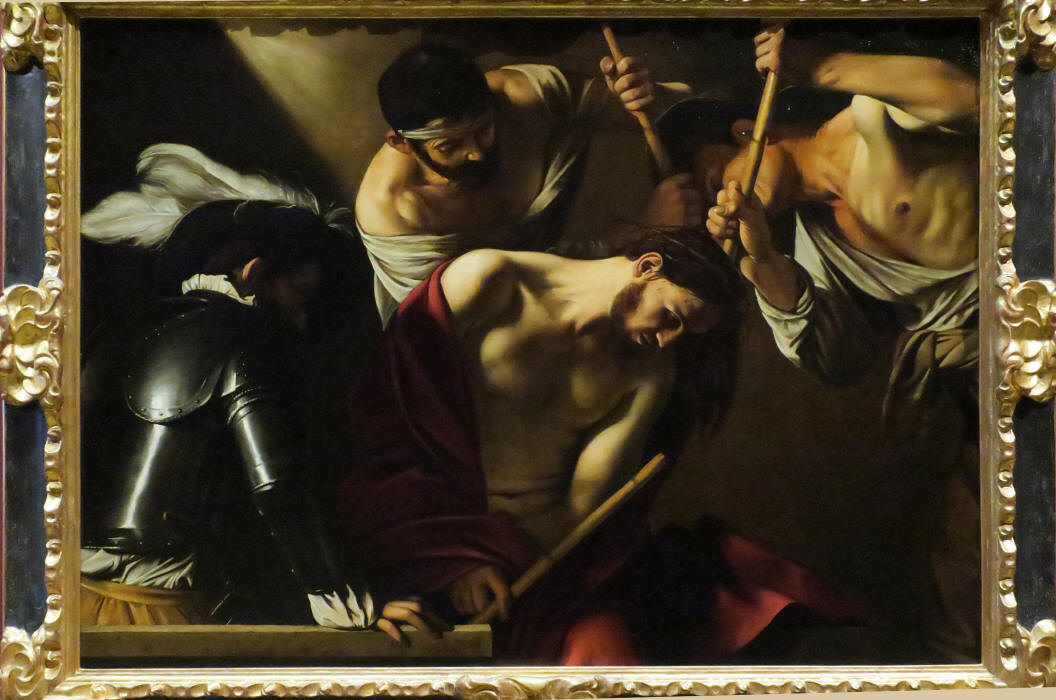
Below is Caravaggio's "Madonna of the Rosary" from 1603.
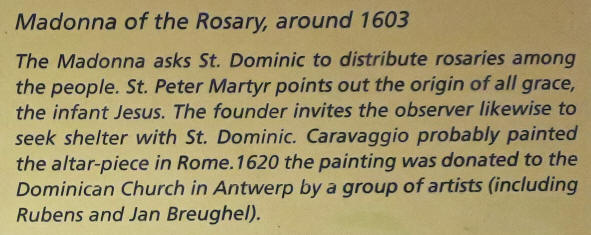
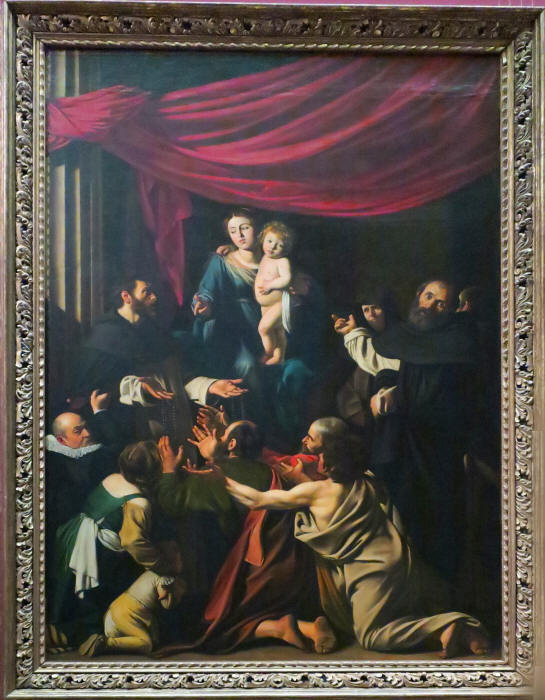
This one below, "David with Goliath's Head" from 1600, is very memorable. The original is here.
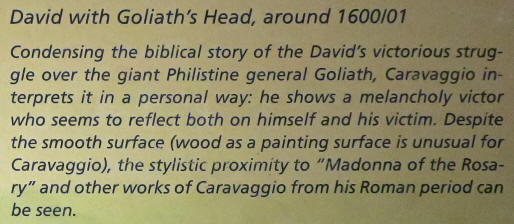
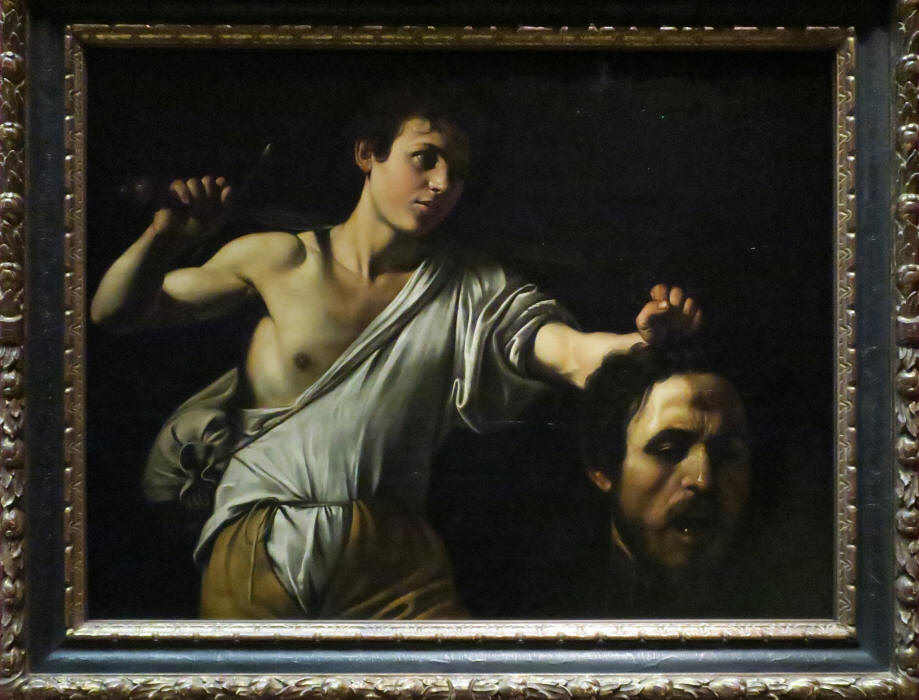
Below is titled "Christ and the Disciples in Emmaus" from 1621 by a follower of Caravaggio active in Northern Italy and the Netherlands.
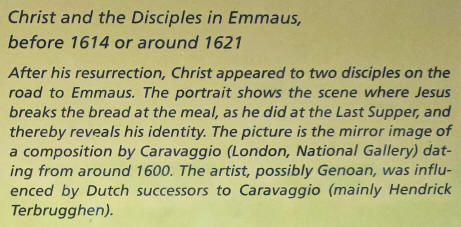
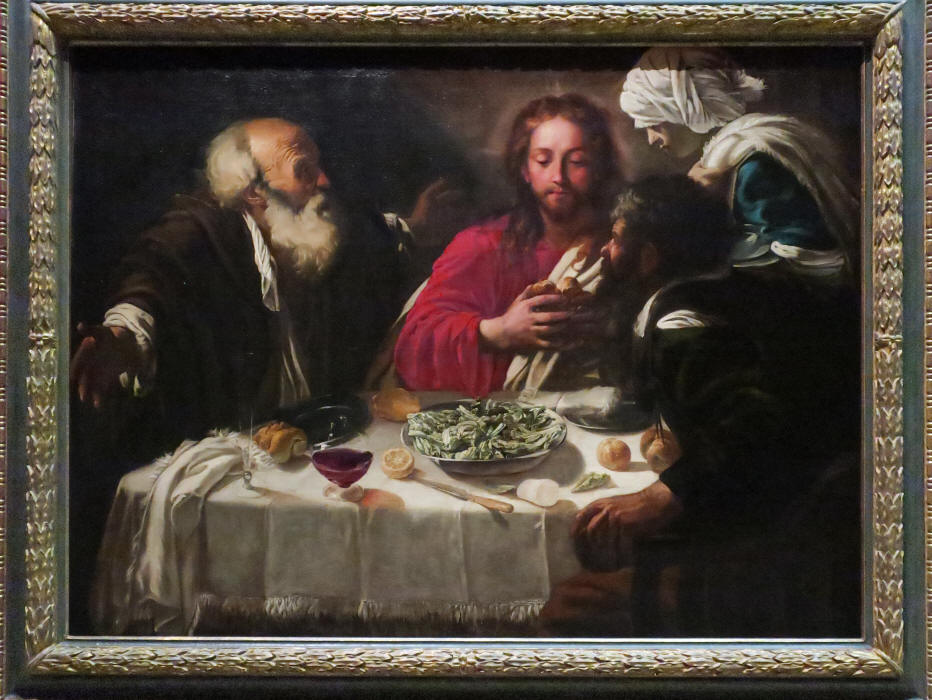
Below is titled "Man with Tortoises" from 1612-3 by Jusepe de Ribera (1591-1652) active in Rome and Naples. He was a leading painter of the Spanish school, although his mature work was all done in Italy. Below right is his self-portrait. Looks a little like the man in his painting.
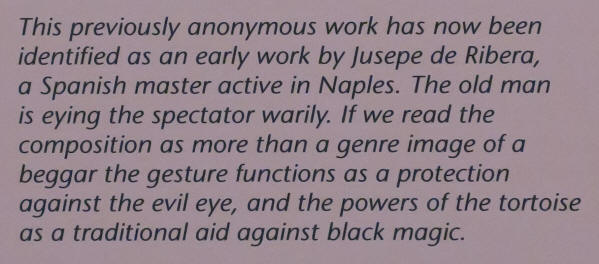
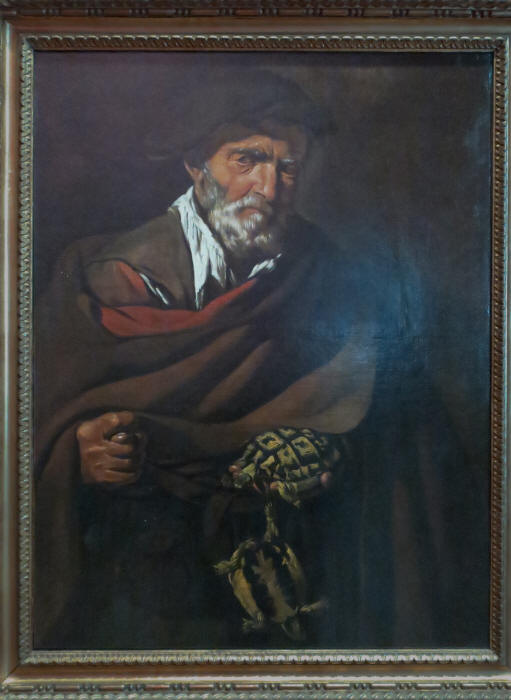
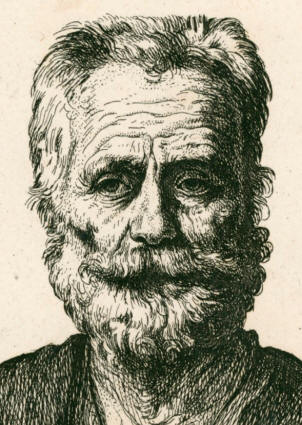
Now we get to the Grand Master, Diego Vel�zquez (1599-1660) active in Seville and Madrid. He was the leading artist in the court of King Philip IV and one of the most important painters of the Spanish Golden Age. Below center is his iconic "Infanta Margarita Teresa in a Blue Dress", daughter (1651-73) of Philip I of Spain, done in 1659. Below right is a stock photo of it, one of his very last paintings before he died.
Below is Vel�zquez's "Infanta Margarita in a White Dress" from 1656. Below right is his self portrait.
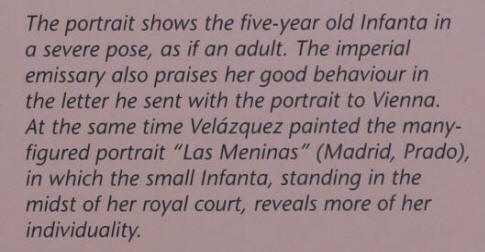
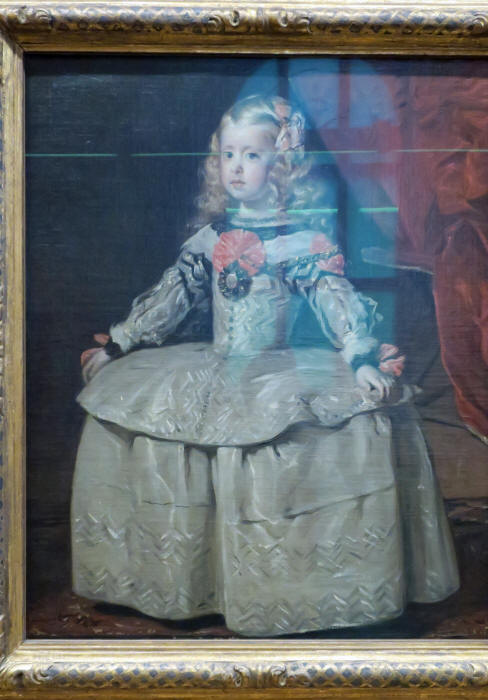

Below left is his "Infanta Margarita Teresa in a Pink Dress" from 1654. On the right is his "Infanta Philipp Prosper" from 1659.
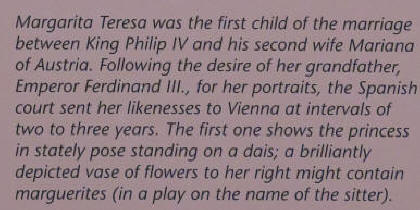
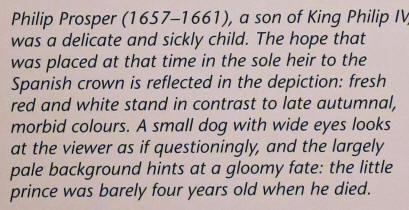
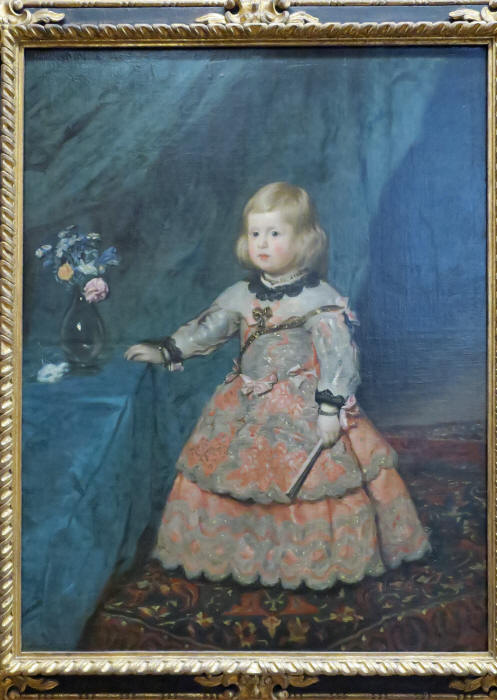
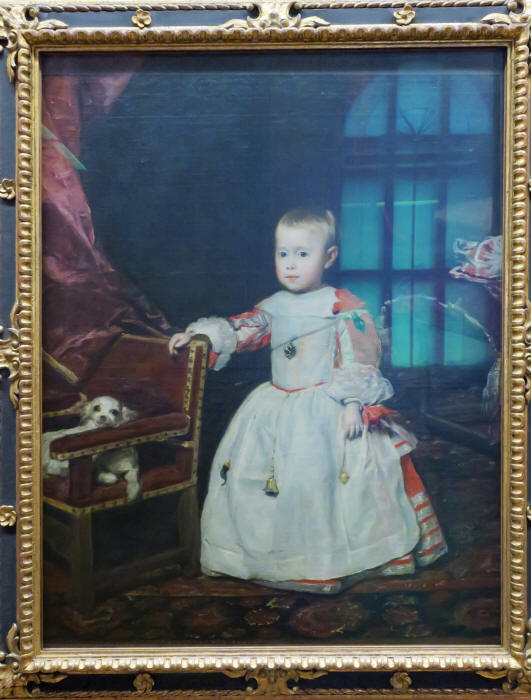
Below right is Vel�zquez's "King Philipp IV of Spain" from 1653-5 and right, "Infanta Maria Teresa" from 1652.
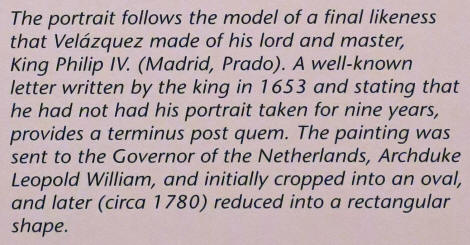
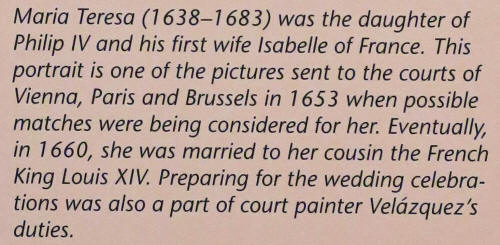
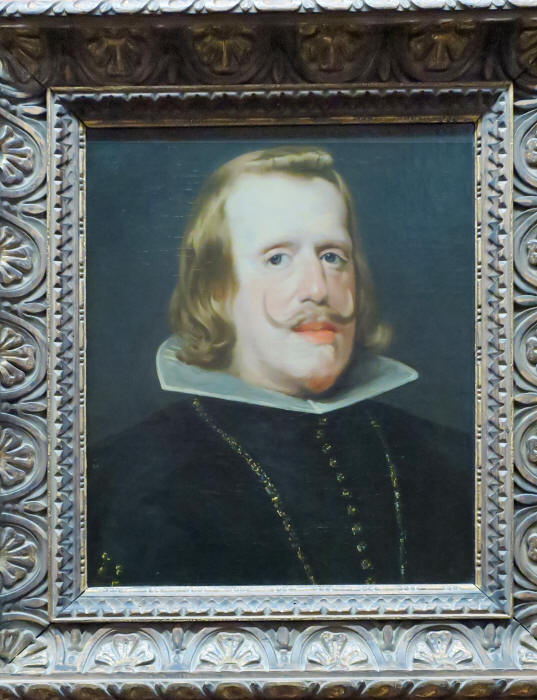
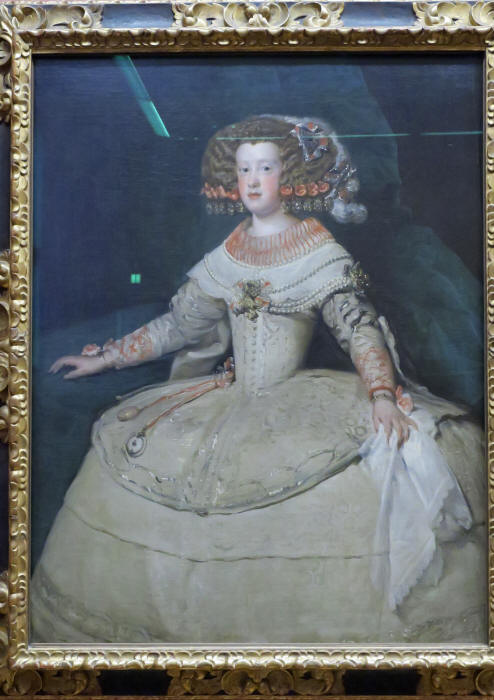
His "Queen Isabella of Spain" from 1632.
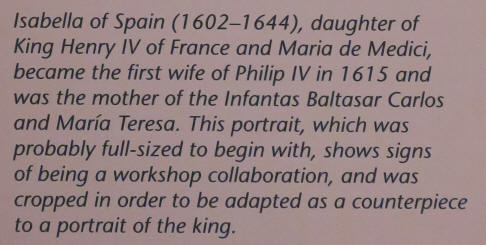
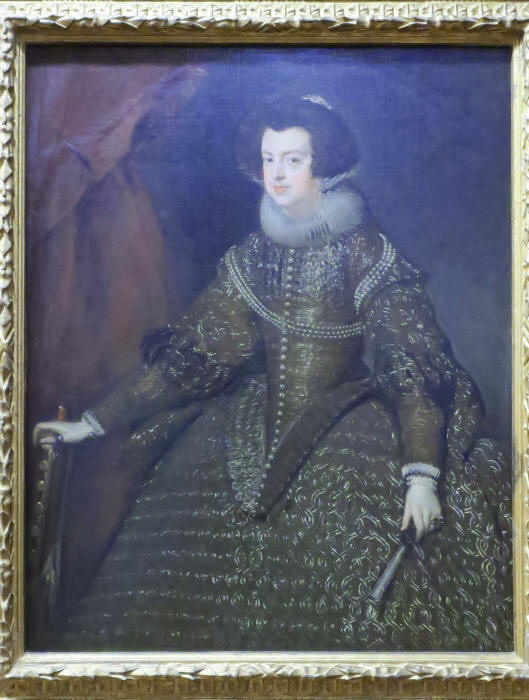
Below is titled "The Tribute Money" from 1615-20 by Francesco Boneri (Cecco del Caravaggio) (1580-1660) active in Rome.
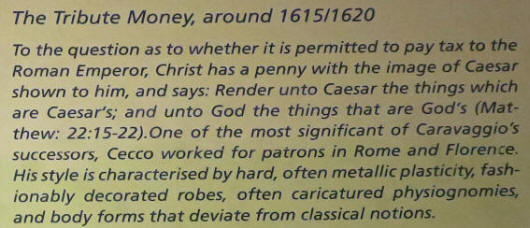
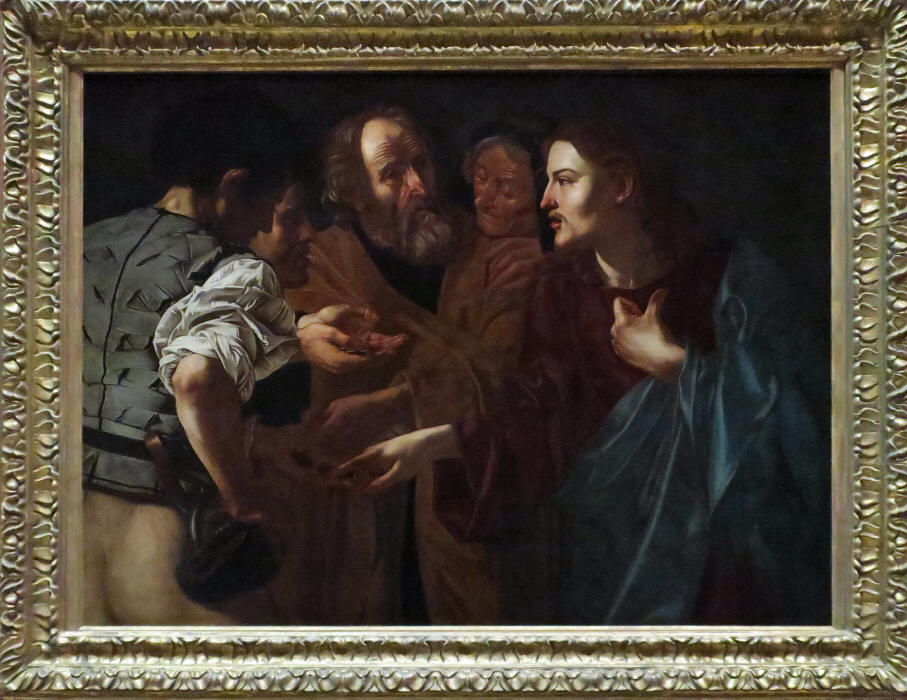
I now enter Gallery (Saal) VI and this one is about Italian Baroque Painting I.
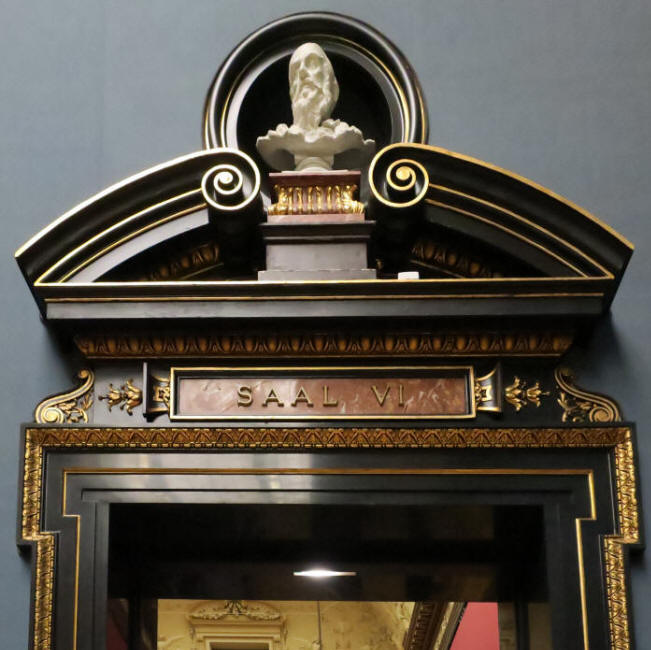
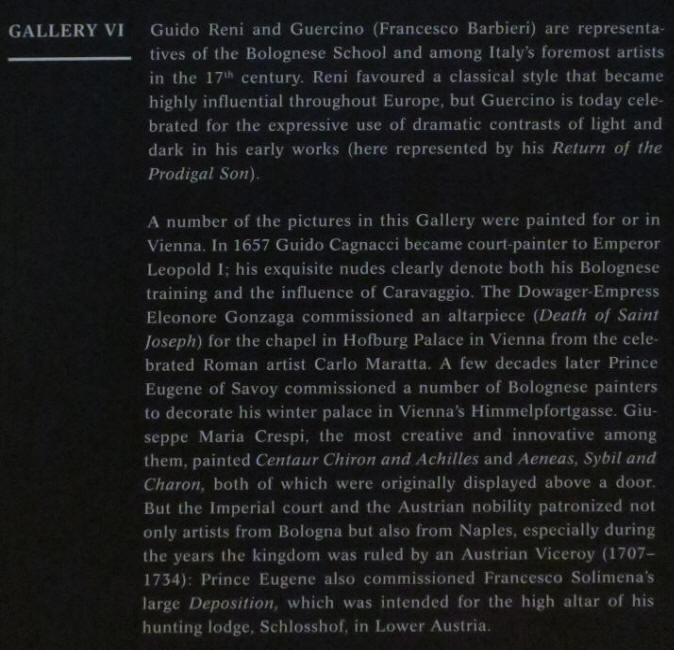
The walls are blue in here.
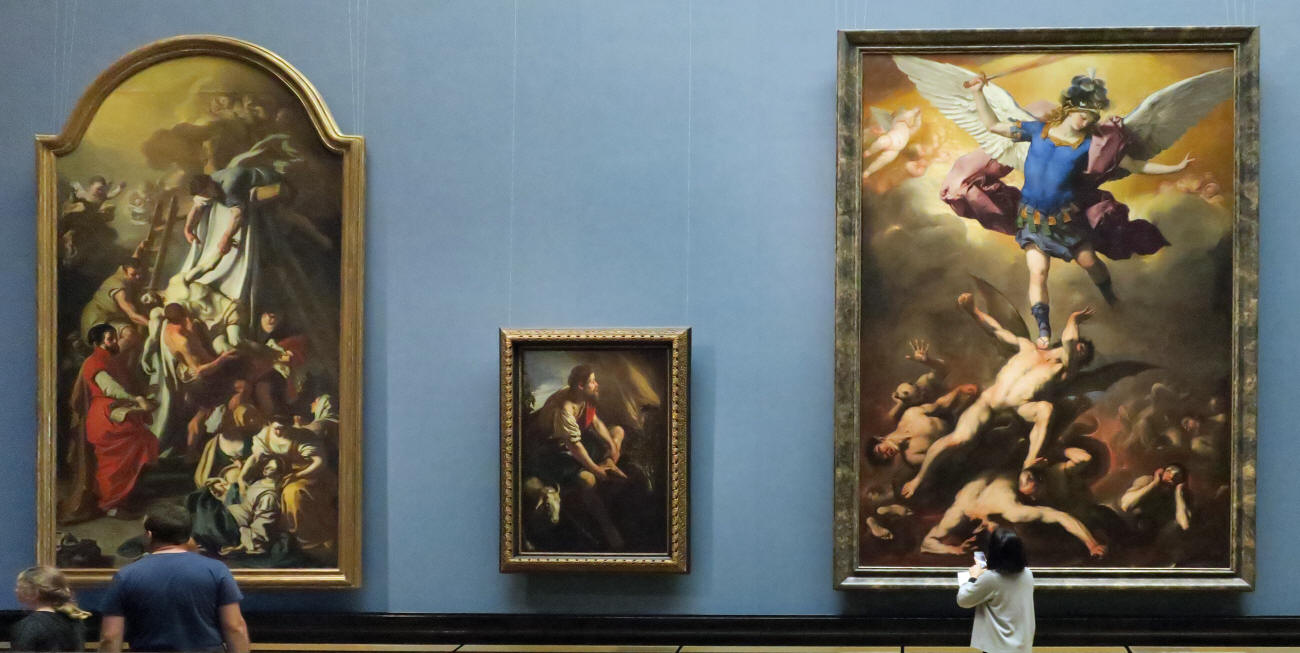

The painting in the above left is titled "Cleopatra's Suicide" from 1659 by Guido Cagnacci (1601-63) who worked in Emiligio Romano, Rome and Vienna. This is my shot of it, his most famous piece and ....
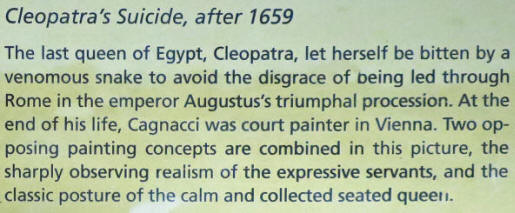
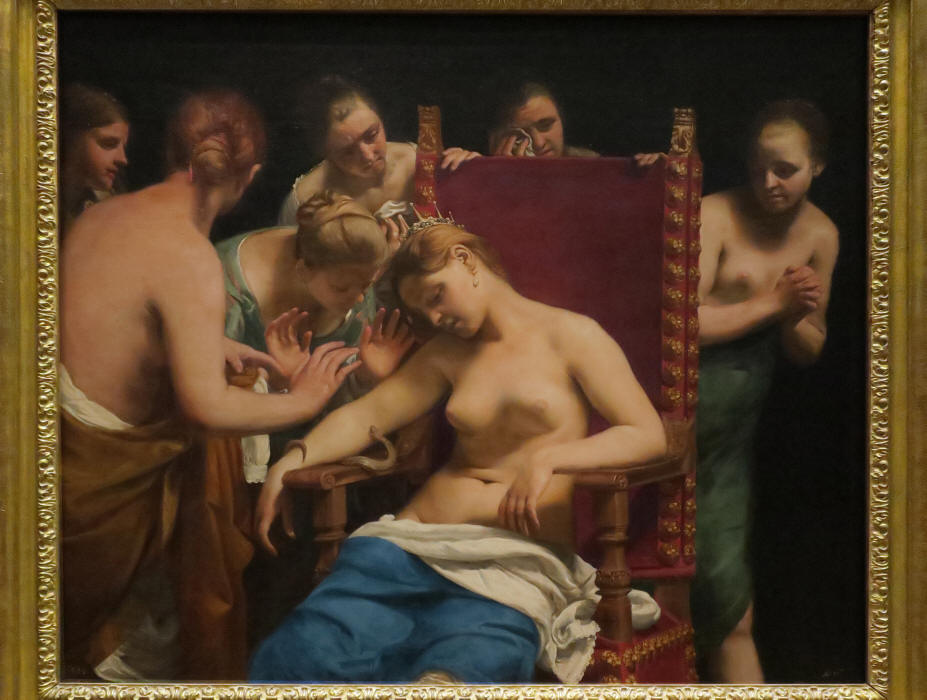
... this is a stock photo of it I found.

I am now going into Gallery (Saal) VII which is labeled "Italian Baroque Painting II" containing Canaletto and Tiepolo.
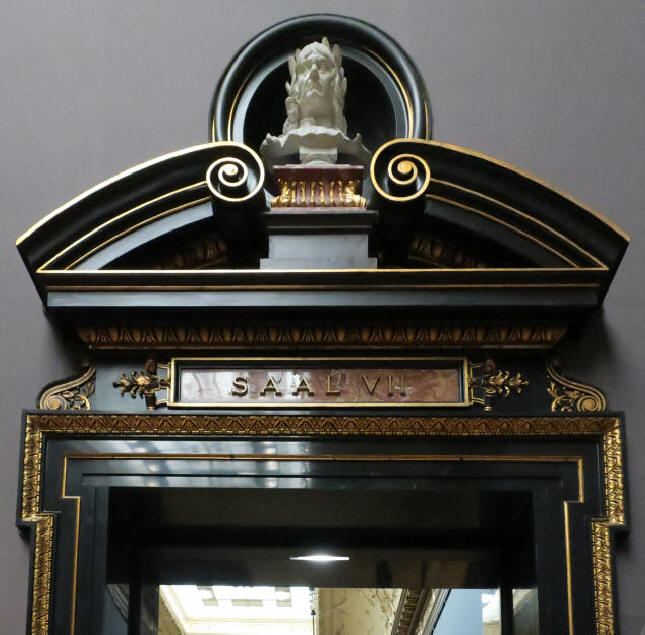
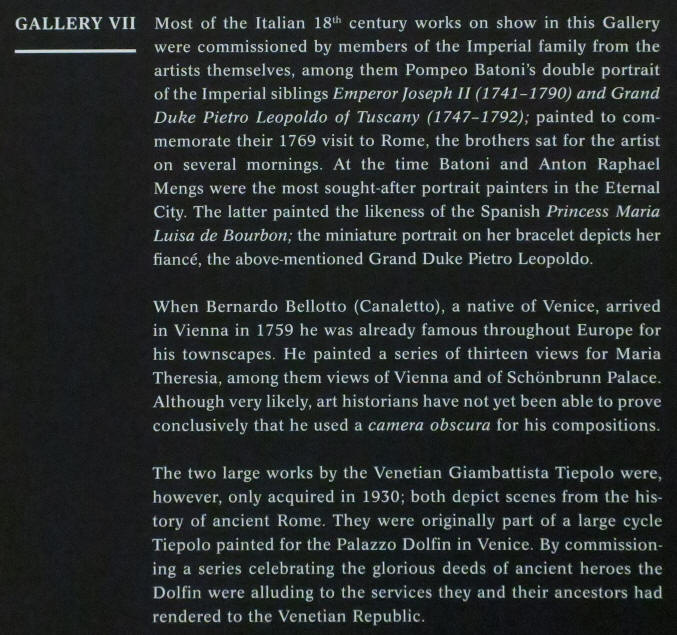
As I went from Gallery I to VII, I also went through Rooms 1-13. When I finish VII I will have completed the whole right side of the First Floor (in yellow below). I did not photograph every painting.
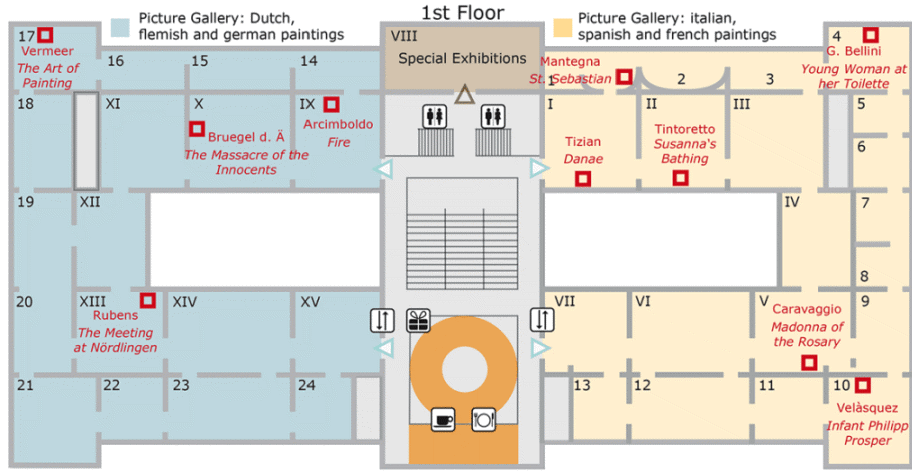
This room is a little smaller than VI was. Here are the paintings by the artist, I say "salvaged Warsaw", Berardo Bellotto (1721-80) who went by his famous uncle's name, Canaletto. He was active in Dresden, Vienna and Warsaw. Below is his "Vienna Viewed from the Belvedere Palace" from 1758-61.
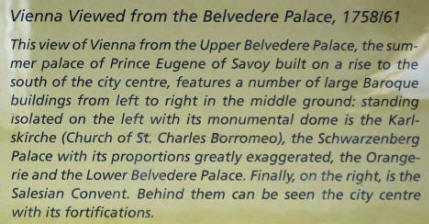
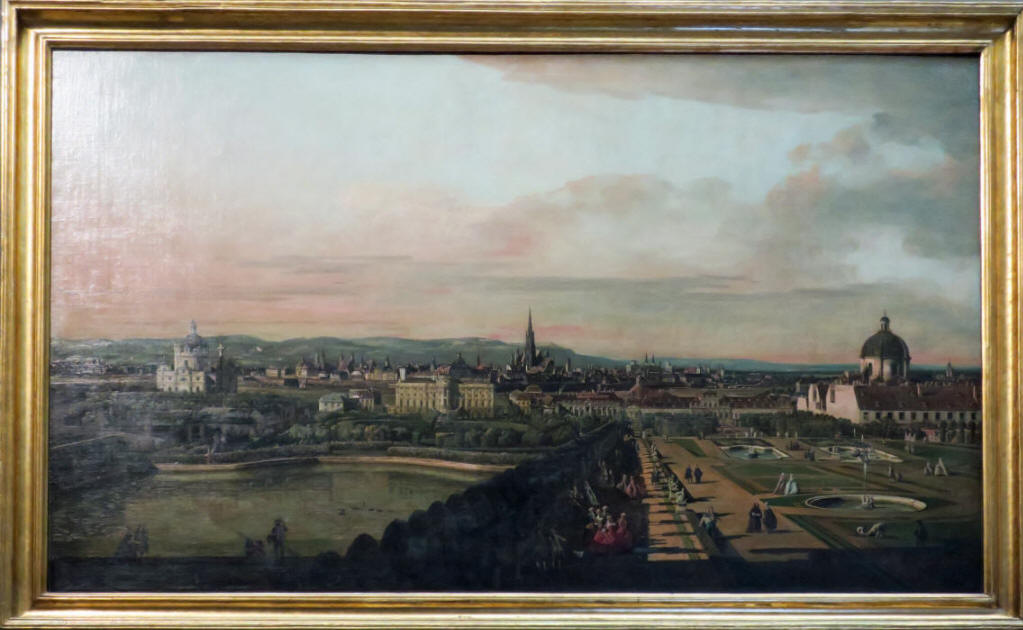
Below is his "University Square in Vienna" form 1758-61.
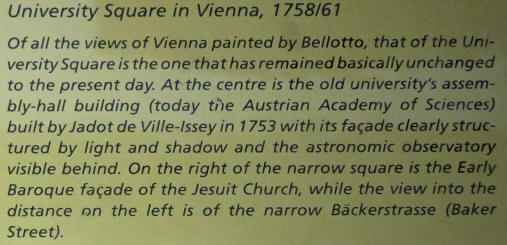
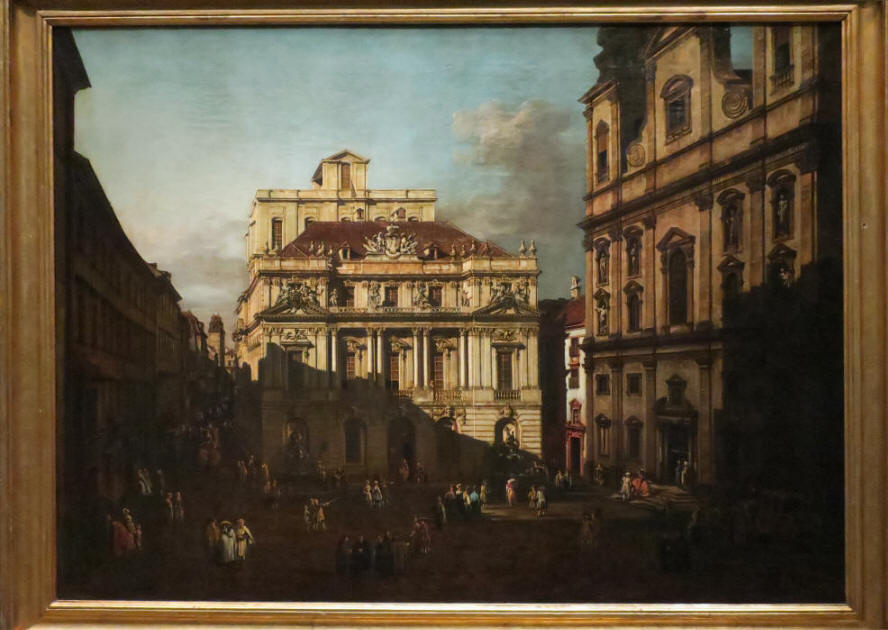
This is his "Dominican Church, Vienna" from 1758-61.
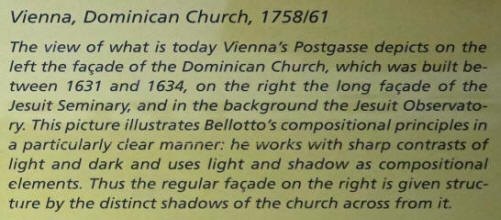
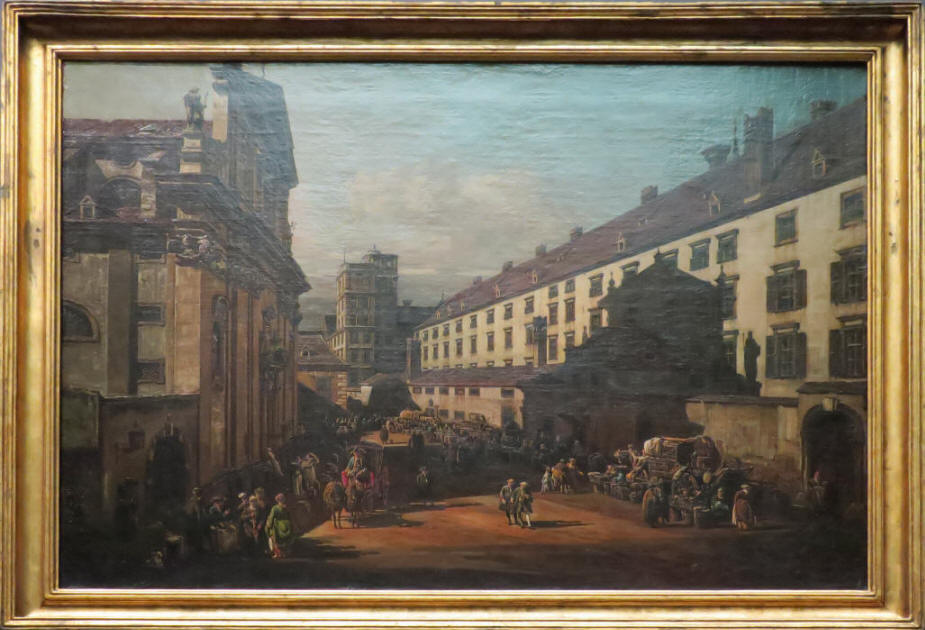
And his "The Freyung in Vienna, View from Northwest" from 1758-61.
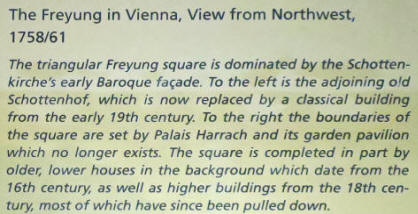
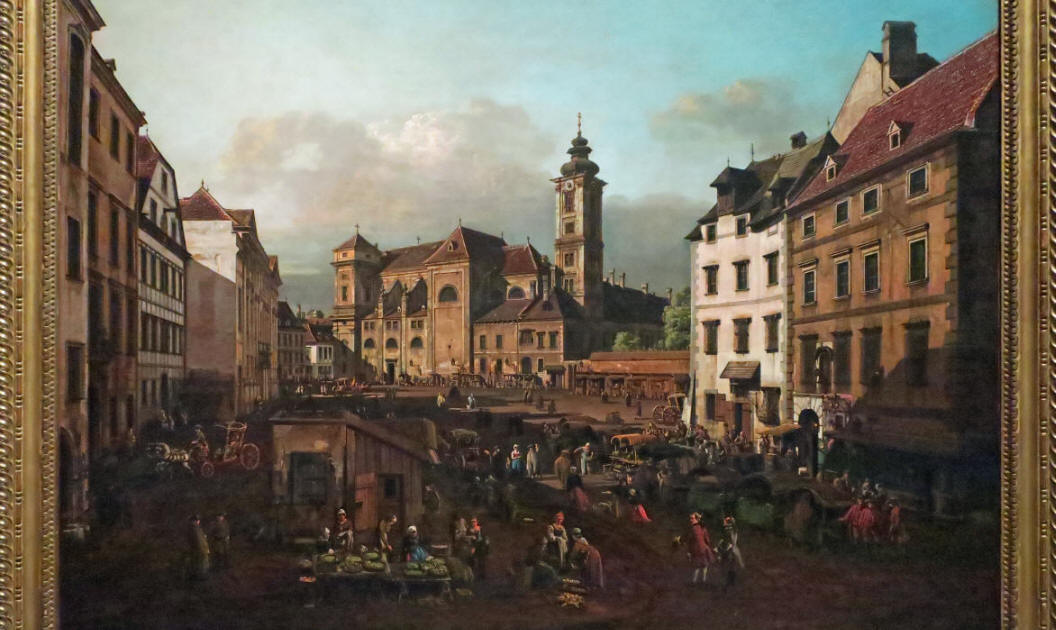
Below his "The Freyung in Vienna, View from Southeast" from 1758-61.
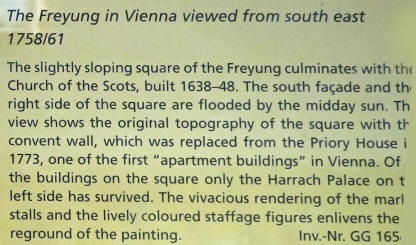
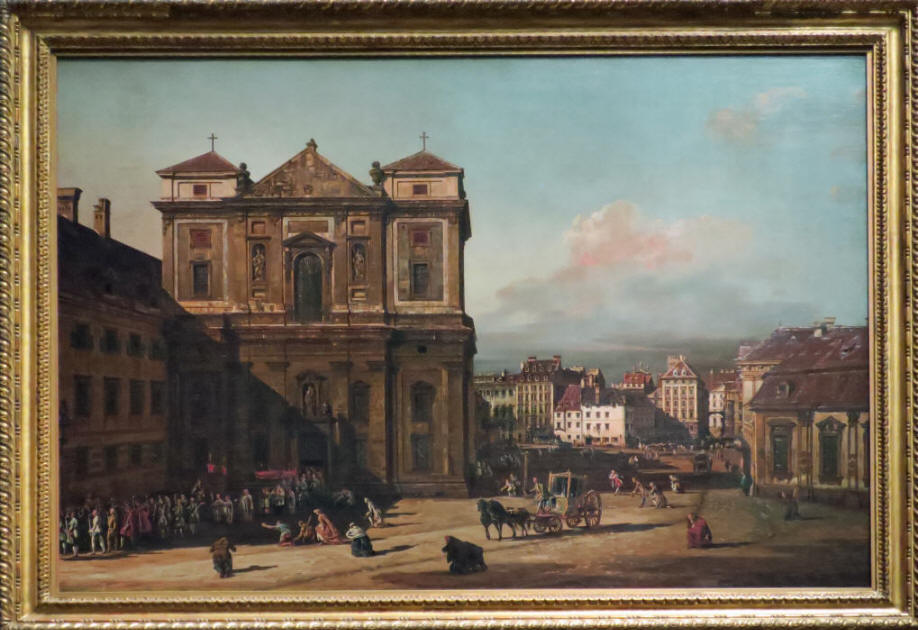
And "Sch�nbrunn Palace: Court Fa�ade" from 1759-61. This place is on my itinerary.
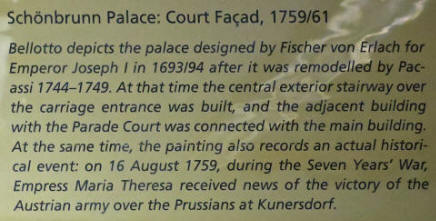
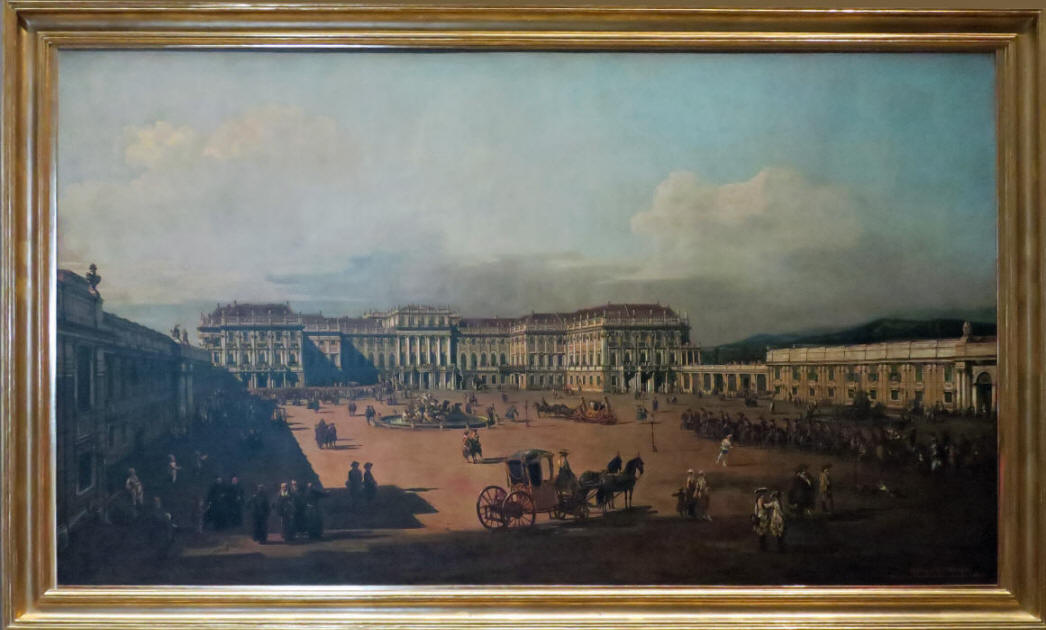
Here is his "The Imperial Palace Hof: Garden Side" from 1759-61.
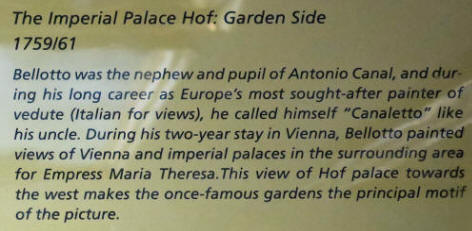
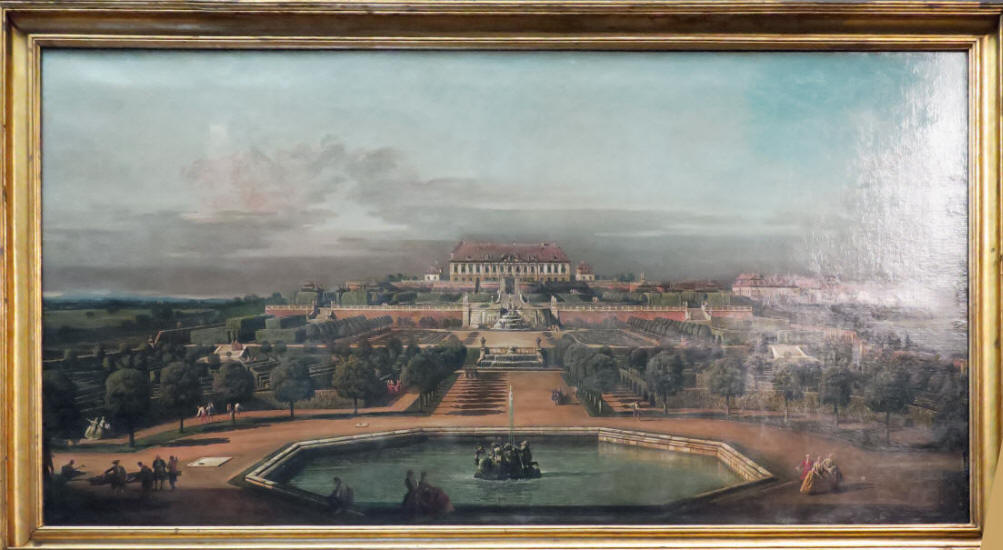
They also had some by his more famous uncle, Antonio Canal (1697-1768) (below right), the original Canaletto, who worked mainly in Venice and in England. Here is his "The Dogana in Venice" from 1724-30.
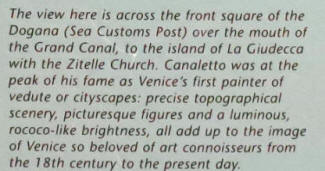
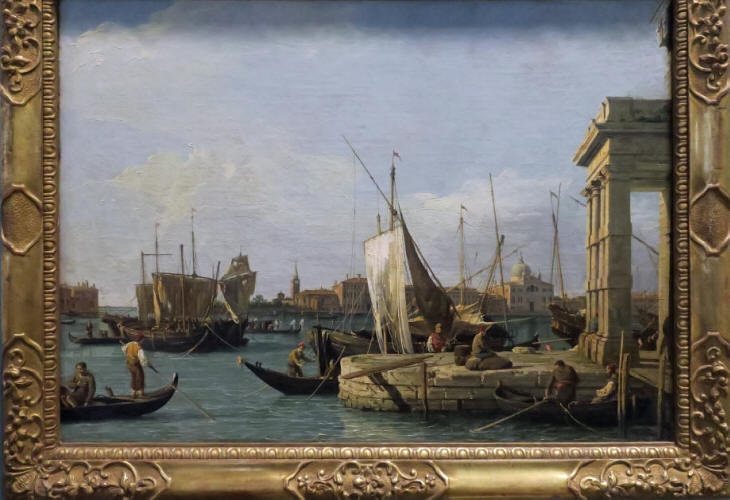
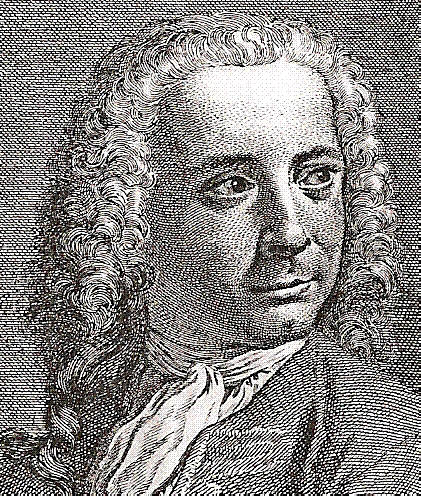
Below is his "Riva degli Schiavoni in Venice" from 1724-30.
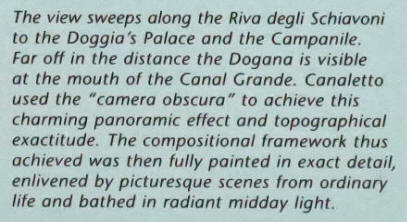
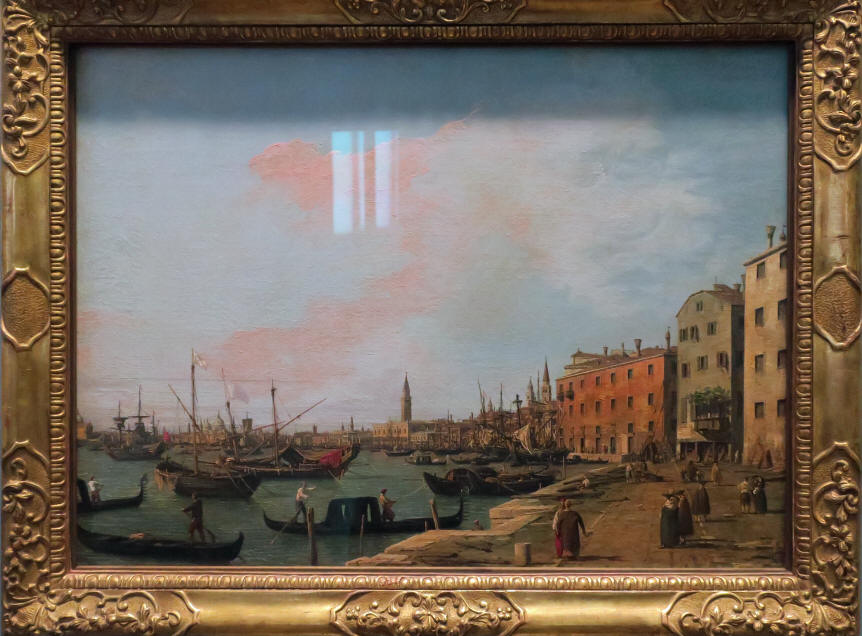
Giovanni Battista Tiepolo (1696-1770) (selfie, below center left) was active in Venice, North Italy and W�rzburg.
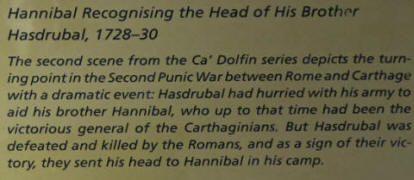
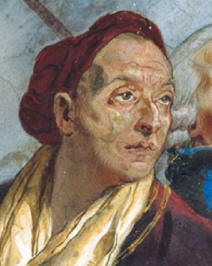
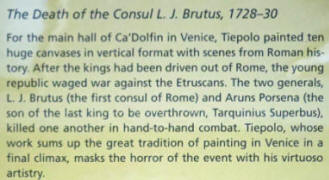
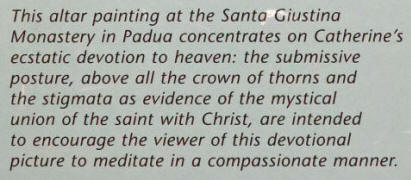
Below left is his "Hannibal Recognizing the Head of His Brother Hasdrubal" from 1728-30 and in the center is his "The Death of the Consul L. J. Brutus" from 1728-30. Below right is his "St. Catherine of Siena" from 1746. Museum descriptions are above.
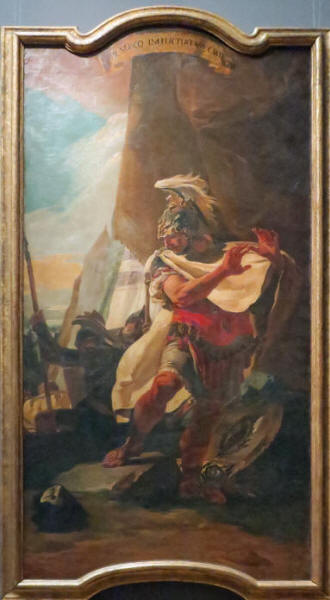
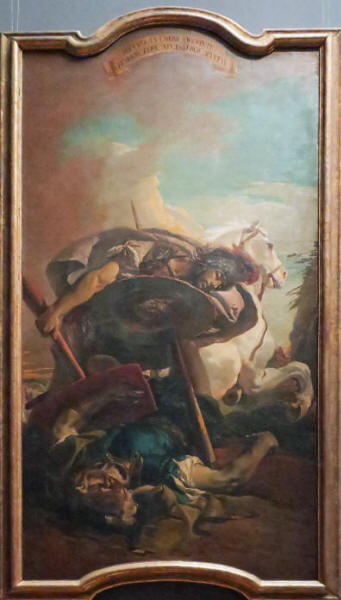
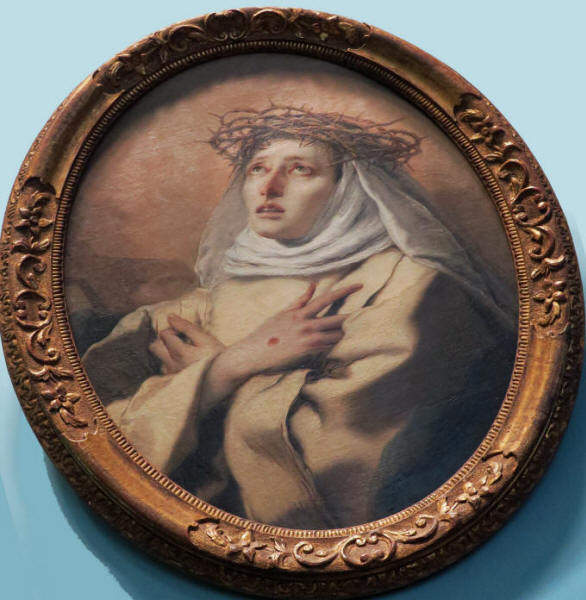
Giovanni Domenico Tiepolo (1772-1804) was the son of artist Giovanni Battista Tiepolo (above) and was born and active in Venice. Here is his "Venetian Post Boat" from 1760-70.
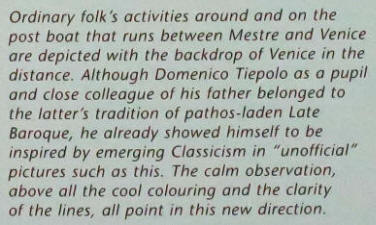
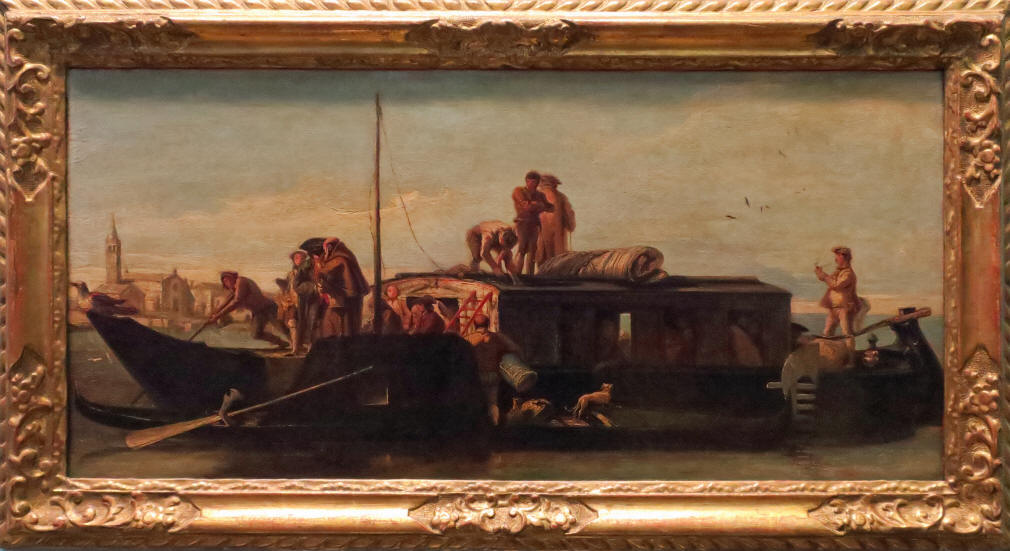
Below is "Maria Theresa as a Widow" from 1773 by Anton von Maron (1731-1808) (self portrait below left) born in Vienna but active in Florence, Rome and Vienna.
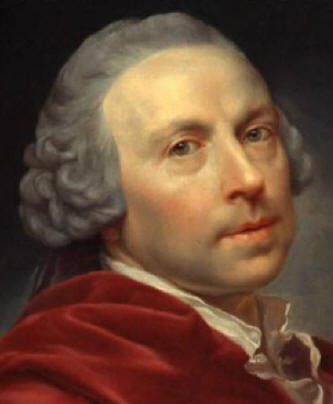
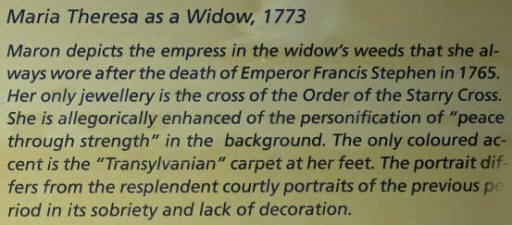
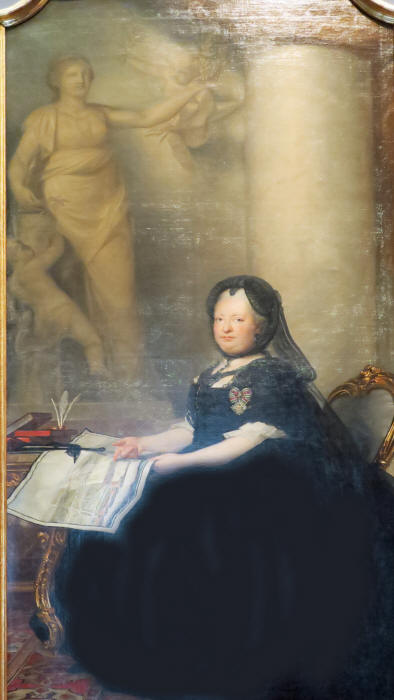
Here is a wall of the many portraits they have here by various artists.
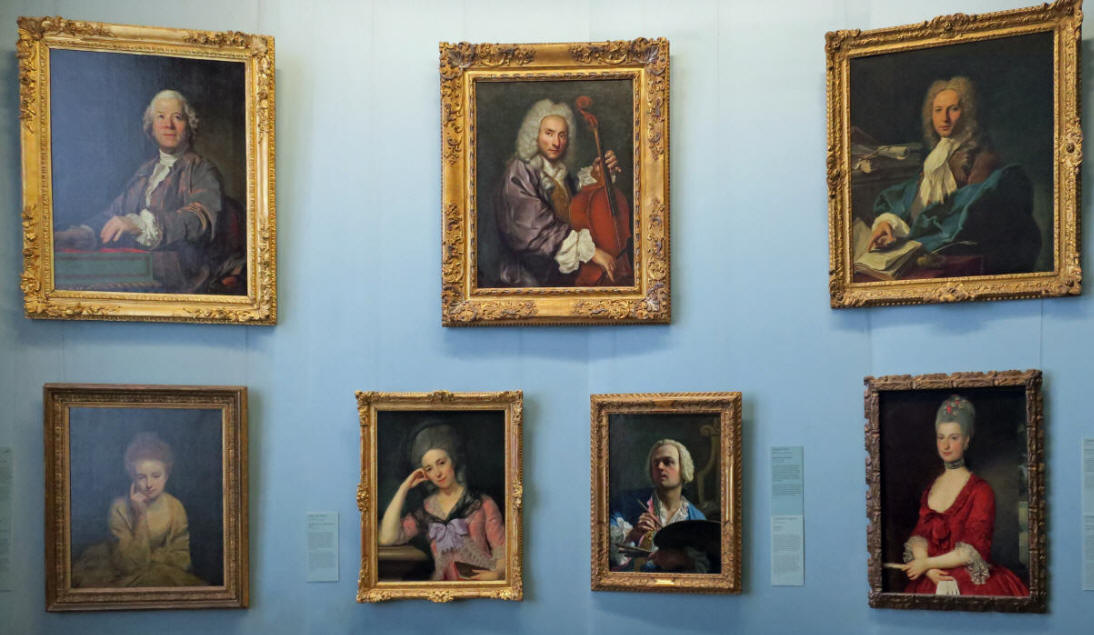
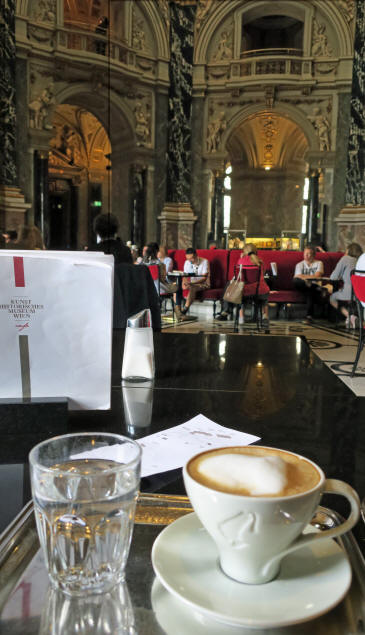
At 1:45 PM, I was getting tired and it was now time for a cappuccino and a coke. Conveniently, I had arrived in the Museum Caf�. The drinks cost me �10 ($11.72). What an absolutely beautiful place to sit and relax (below left). I looked up and took a GoPro shot (below right) of the dome above me. It really shows its geometry - very impressive.
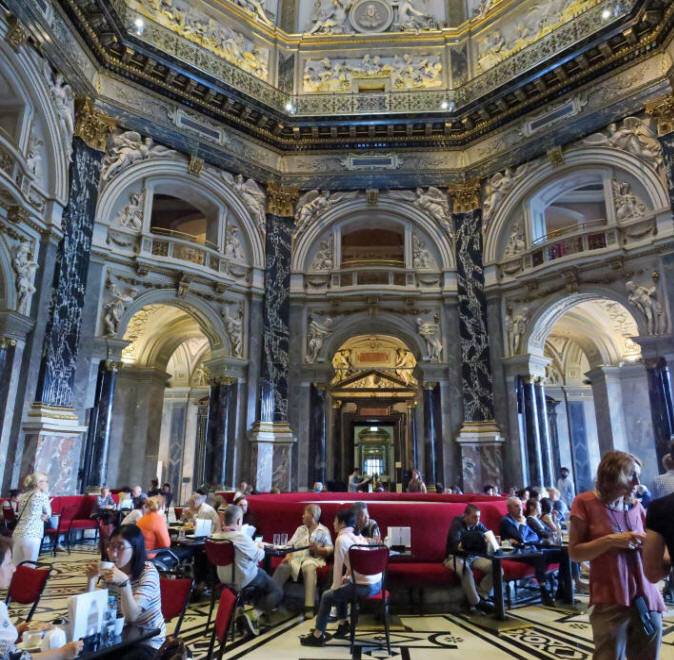
This is the Canon photo which shows its detail a little better.
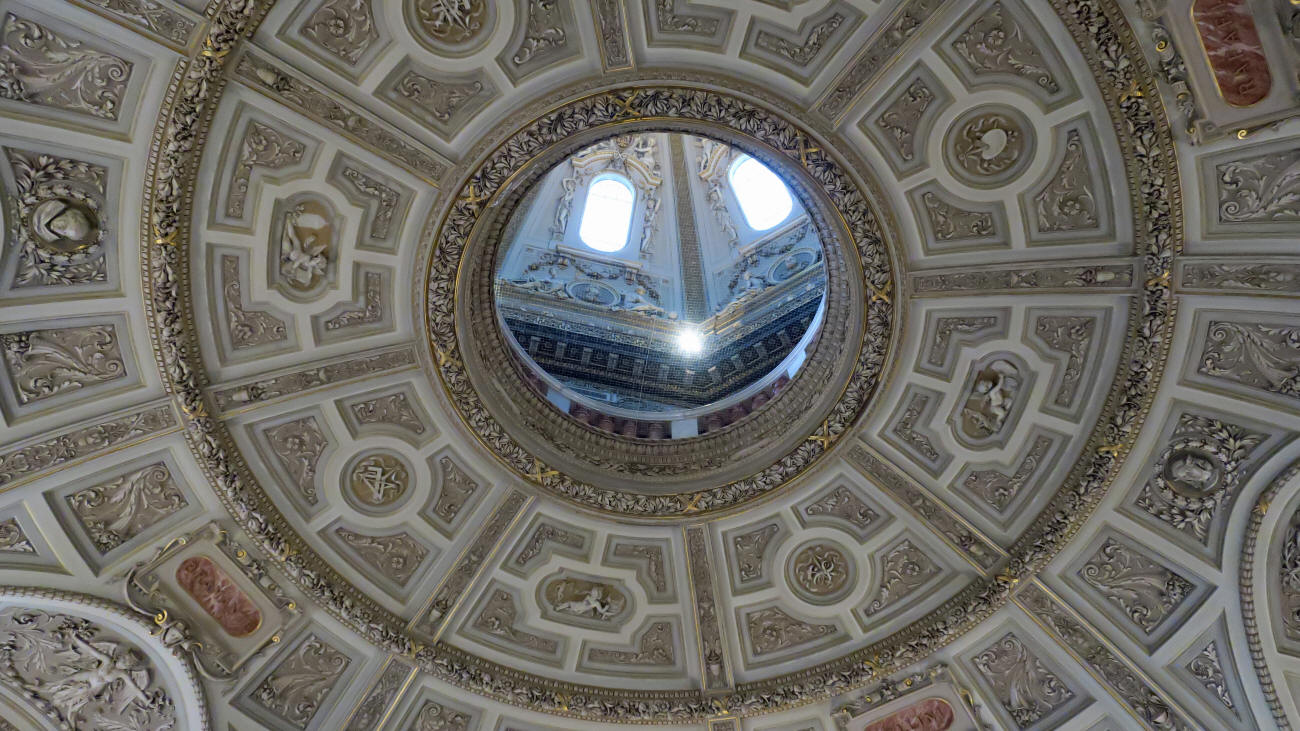
The enlargement of it better shows what's above the operculum. I found this stock photo of what the area looks like when they set it up for an event.
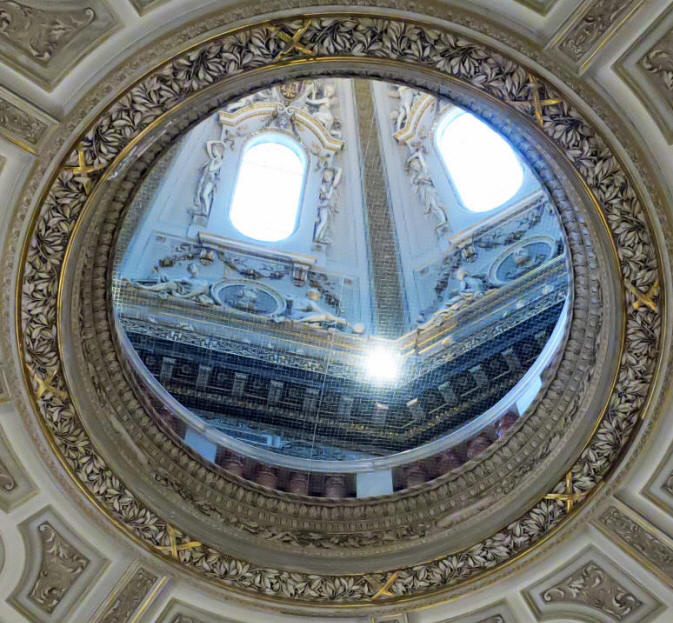
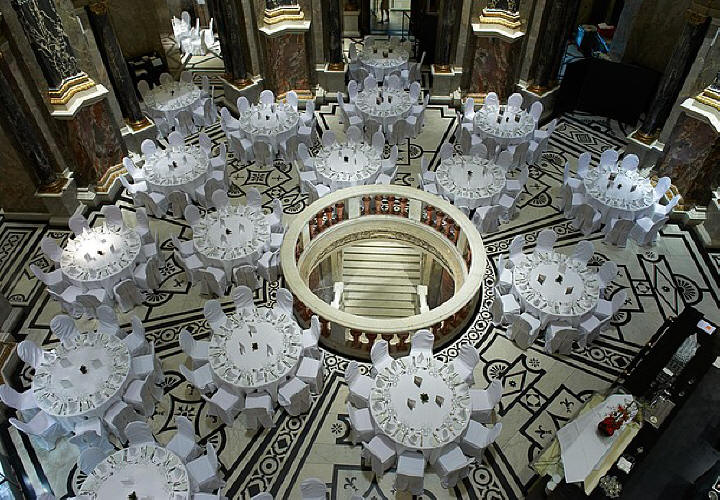
This would be a good time to take a break in the Diario as well since I doubt the page will be able to contain the whole day. Diario #6 will pick up with the rest of this incredible Kunstmuseum tour.
Kenneth J. Hoffer, MD
Vienna, Austria
Sent 6-18-2019
If you enjoyed these travels or wish to add comments on the places we visited
Please Leave Me a Message by clicking the spinning @ sign below.

